

Sourcing Market Fairs Innovations Trends Sustainability Shoes UGG
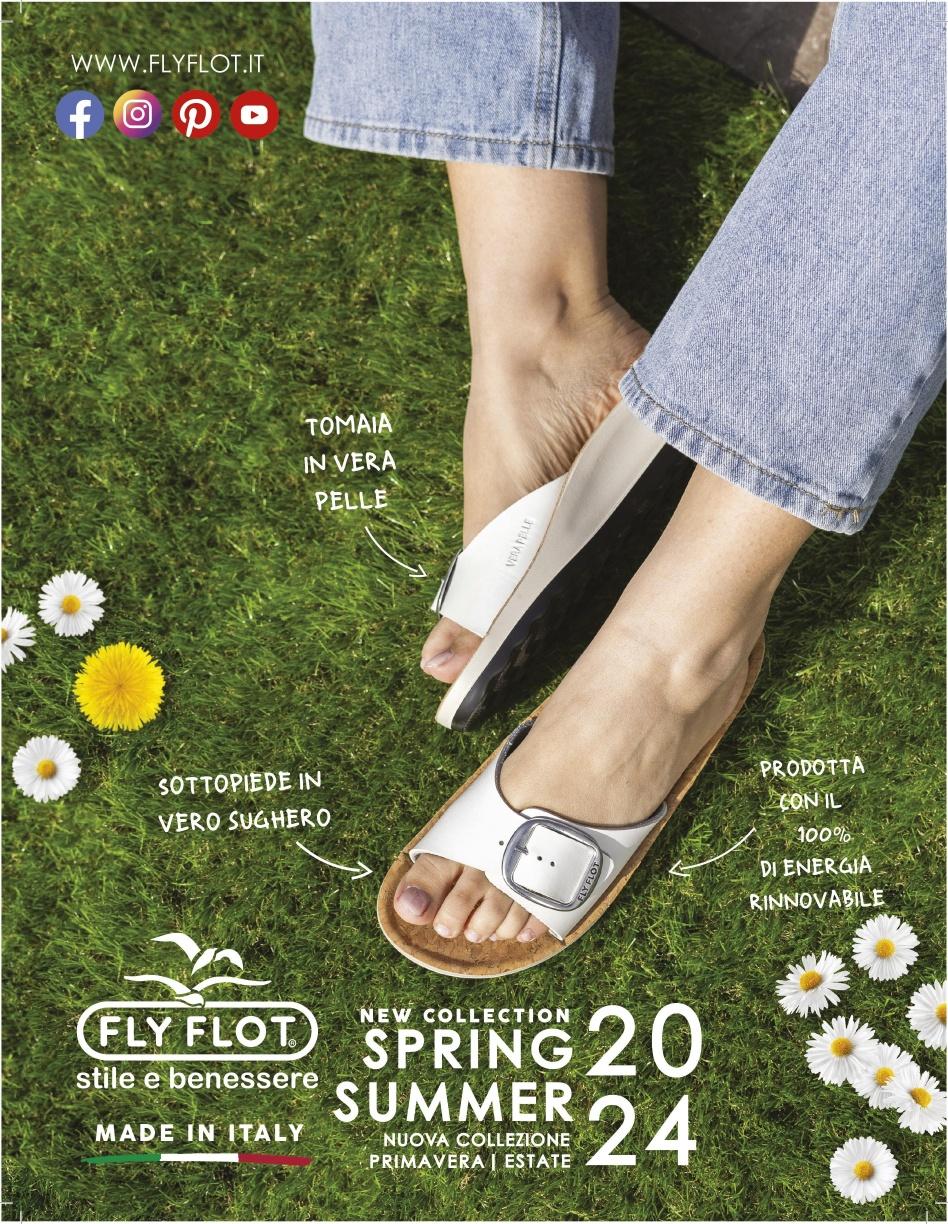





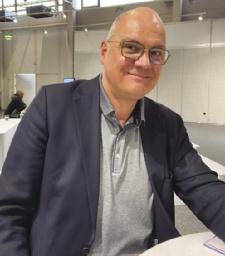

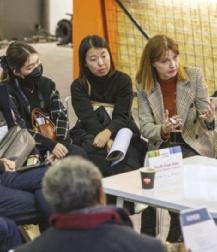
Contents 10 Expo Riva Schuh & Gardabags registers a sell-out Fairs 12 10 22 25 42 28 Schuh-Neumann Market 25 12 Voices from Spain 18 Market notes Market 22 Timid hints of optimism for the German footwear market Market 28 White noise Fashion 18 42 Trends When fashion and art come together

DIRETTORE RESPONSABILE
Matteo Pasca
DIRETTORE EDITORIALE
Roberto Pellegrini
ART DIRECTOR
Angelo Lanza angelo.lanza@edizioniaf.com
FASHION EDITOR

Luca Termine luca.termine@edizioniaf.com
GRAPHIC DESIGN
Michele Alberti michele.alberti@edizioniaf.com
EDITORIAL
Erika Alberti, Alessandro Dorio,
Mariacristina Ferraioli, Enrico Martinelli, Sara Meneghetti, redazione@edizioniaf.com
DIGITAL
Alessandro Capuzzi, Domiziana Desantis, Davide Tufano digital@edizioniaf.com
PR & MARKETING
Mariella Catalano, Mariel Cuba subscription@edizioniaf.com
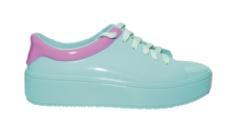



ADVERTISING
Filippo Crepaldi, Giorgio Gori, Lucio Luiselli, Stefano Migliavacca, adv@edizioniaf.com
OPERATIONS
Massimo Ledda, Elisa Trasi, Andrea Zampieri operations@edizioniaf.com
PRINTING Comgraf
Aut. del trib. di Milano n. 392 del 5-12-69 Spedizione Posta Target. È vietata la produzione senza autorizzazione dei testi e delle immagini. Il trattamento dei dati personali dei destinatari di Foto Shoe 30 è svolto nel rispetto della Legge 675/96 sulla Privacy. È possibile chiedere la modifica o la cancellazione dei propri dati indirizzando la richiesta a: Edizioni Foto Shoe 30 srl, Via Ippolito Nievo, 3320145 Milano ai numeri di fax e di posta elettronica

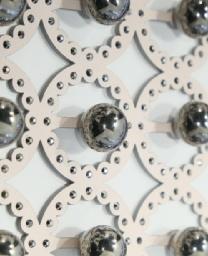


Contents Sourcing Market Fairs Innovations Trends Sustainability
indicati. 76 110 The next materials 110 SS 24 Made in Nigeria 89 Market 56 Netcomm: business competitiveness comes from logistics Innovation 54 Sustainable Origin, Brazil has a plan for sustainability Sustainability 76 China and Hong Kong: challenges and opportunities Market 64 When colors speak FW 23-24 #03 May 2023 Anno LIV EDIZIONI FOTO SHOE 30 srl Via Ippolito Nievo, 33 - 20145 Milano Tel. +39 02 319121 - Fax +39 02 33611619 www.fotoshoemagazine.com info@edizionifotoshoe30.com Send an e-mail to fotoshoe@edizioniaf.com to receive a link and read the next issues of FOTOSHOE online for free 64

Gira il mondo gira
Quando si parla di cambiamento è spesso questa la domanda giusta da porsi: si cambia per il meglio o per il peggio? Non è questo il caso.
La Cina, pur rimanendo capofila internazionale, ha registrato una perdita di produzione pari a 1,5 miliardi di paia nell’ultimo triennio, mentre il Vietnam, nello stesso arco di tempo ha guadagnato quasi 2 punti percentuali di quota di produzione mondiale in volume, così come Pakistan, Filippine, India e Turchia hanno scalato diverse posizioni in graduatoria.
È solo un piccolo esempio di come gli equilibri mondiali mutino di continuo.
Sì, il mondo gira e si rigira. Negli ultimi anni lo fa di frequente e velocemente. La domanda giusta, quindi, non dovrebbe riguardare tanto un giudizio di merito sul cambiamento, quanto l’interpretazione di come il mondo stia mutando. Ed è la domanda che ispira la selezione dei contenuti della rivista (vedi gli approfondimenti sui vari mercati) così come le iniziative della manifestazione fieristica Expo Riva Schuh & Gardabags che, grazie alla sua offerta espositiva largamente internazionale e un incoming di compratori da ogni parte del mondo, si propone sempre più come la piattaforma che meglio interpreta le mutevoli esigenze del mercato.
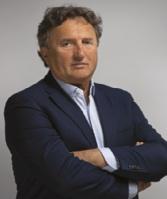
Turn the world around
When it comes to change, this is often the right question to ask: do we change for the better or for the worse? This is not the case.
China, while remaining the international leader, has experienced a loss in production of 1.5 billion pairs in the last three years, while Vietnam, in the same time frame has gained almost 2 percentage points of world production share by volume, just as Pakistan, the Philippines, India and Turkey have climbed several places in the rankings.
This is just one small example of how the world balance is constantly shifting.
Yes, the world twists and turns. In recent years it does so frequently and quickly. The right question, then, should not so much be about a judgment of the merits of change, but about interpreting how the world is changing. And it is the question that inspires the selection of the magazine's content (see the indepth articles on the various markets) as well as the initiatives of the Expo Riva Schuh & Gardabags trade show, which, thanks to its largely international exhibition offerings and an incoming stream of buyers from all over the world, is increasingly becoming the platform that best interprets the changing needs of the market.
Editorial 8
di Roberto Pellegrini Presidente Fierecongressi Riva del Garda

Expo Riva Schuh & Gardabags registra il tutto esaurito
quindi la massima capacità del quartiere fieristico. Tutto esaurito!
La bella notizia riguarda soprattutto la provenienza degli espositori. Parteciperanno oltre 40 paesi - tra cui Cina, fortemente rappresentata da tutti i principali distretti produttivi -, Brasile, India, Turchia ed Europa. È la riconferma del fortissimo carattere internazionale della manifestazione.
Piacevole sorpresa il ritorno di Giappone e Nepal e le prime volte di una collettiva di aziende dalla Repubblica Ceca e una da Taiwan. Sarà la prima volta anche per CLIA – China Leather Industry Association e per la Municipalità di Wenzhou, tra i distretti produttivi più importanti della Cina.
Si annuncia un’edizione da incorniciare anche grazie alle previsioni di partecipazione dei visitatori, che sulla carta già superano i numeri di gennaio: sono attesi oltre 120 buyer di livello internazionale, pronti a farsi un’idea sulle prossime tendenze per l’estate 2024.
Uno degli obiettivi dell’organizzazione è stato incrementare la varietà dell’offerta, incentivando la presenza di produttori di pelletteria e accessori moda, sia con marchi di produzione propria che conto terzi.
dal 17 al 20 giugno
L’edizione di Expo Riva Schuh & Gardabags che si terrà dal 17 al 20 giugno 2023 sarà la numero 99 e sarà un evento di sicuro successo. Gli ottimi risultati delle ultime due edizioni post-pandemia hanno portato a un’altissima richiesta di partecipazione da parte del mondo della produzione internazionale che torna in massa a Riva del Garda. Verranno, infatti, aperti anche i padiglioni A1 e A3 per aumentare la superficie espositiva che raggiungerà
Come di consueto saranno molti gli appuntamenti da segnare in agenda, oltre ai classici incontri negli stand: il Summit promosso da CIFA - Confederation of International Footwear Association; l’Innovation Village Retail; la Startup Competition; e i Market Focus, eventi esclusivi e su invito, che faranno incontrare gli esponenti del mondo della produzione con quelli della distribuzione. Non manca l’impegno per la sostenibilità: viene favorita la ricerca delle produzioni e prodotti sostenibili sul catalogo; si utilizza moquette fornita da un’azienda certificata che, a fine evento, recupera tutto il materiale riciclabile; si recupera e destina ai più bisognosi il cibo che non viene consumato durante i giorni di manifestazione; si differenziano i rifiuti con grande attenzione per destinarli al riciclo; si offrono allestimenti green.

10 Fair
Si preannuncia un’edizione di successo quella della manifestazione rivana
2023.
Expo Riva Schuh & Gardabags registers a sell-out

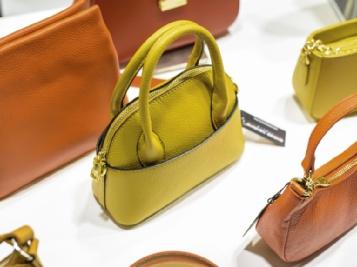
The edition of Expo Riva Schuh & Gardabags to be held from June 17 to 20, 2023, will be number 99 and will be a sure-tobe successful event. The excellent results of the last two postpandemic editions have led to a very high demand for participation from the international manufacturing world, which is returning en masse to Riva del Garda. In fact, Halls A1 and A3 will also be opened to increase the exhibition area, which will then reach the maximum capacity of the fairgrounds. All sold out!
The good news mainly concerns the origin of the exhibitors. More than 40 countries including China, which is strongly represented by all major manufacturing districts, Brazil, India, Turkey and Europe will participate. This is a reconfirmation of the very strong international character of the event. Pleasant surprise is the return of Japan and Nepal and the first times of a collective of companies from the Czech Republic and one from Taiwan. It will also be the first time for CLIAChina Leather Industry Association and the Municipality of Wenzhou, among the most important manufacturing districts in China.
It promises to be an edition to be framed also thanks to the forecasts of visitor participation, which on paper already exceed January's numbers: more than 120 international buyers are expected, ready to get an idea of the next trends for summer 2024.

One of the goals of the organization has been to increase the variety of the offer, encouraging the presence of leather goods and fashion accessories manufacturers, both with own production brands and third-party brands.
As usual, there will be many appointments to mark on the agenda, in addition to the classic meetings at the stands: the Summit promoted by CIFA - Confederation of International Footwear Association; the Innovation Village Retail; the Startup Competition; and the Market Focus, exclusive, invitationonly events that will bring together exponents of the world of production with those of distribution.
There is no lack of commitment to sustainability: the search for sustainable productions and products in the catalog is encouraged; carpeting provided by a certified company that, at the end of the event, recovers all recyclable material; food that is not consumed during the days of the event is recovered and destined for the most needy; waste is differentiated with great care to be destined for recycling; and green set-up booths are offered.
11 Fair
It promises to be a successful edition of the Riva event from June 17-20, 2023.
Voci dalla Spagna:
uno dei più importanti mercati internazionali per la produzione e la commercializzazione di calzature e pelletteria
La finalità di Expo Riva Schuh & Gardabags non è mai stata solo quella di vendere spazi espositivi, bensì dar vita, edizione dopo edizione (la numero 99 si terrà a Riva del Garda dal 17 al 20 giugno 2023), a una piattaforma di business capace di far crescere il settore delle calzature e della pelletteria, fornendo l’occasione propizia al mercato per espandere i propri confini.

Per farlo, però, il mercato lo devi conoscere. Da questo assunto nasce Expo Riva Schuh & Gardabags Around the World, un insieme di iniziative che portano la manifestazione rivana a incontrare le realtà istituzionali, produttive e distributive del settore in tutto il mondo, grazie a una serie di eventi, visite aziendali e meeting personali. La Spagna è il più recente dei paesi toccati dall’iniziativa.
PERCHÉ LA SPAGNA?
I dati in crescita del panorama calzature e pelletteria spagnolo fanno ben sperare le aziende di produzione locali, estremamente votate all’export, che a Expo Riva Schuh & Gardabags riscontrano da anni l’interesse dei buyer internazionali. Si spinge sulla sostenibilità e su una qualità medio/alta.
Tra le difficoltà registrate: la carenza di manodopera e la preoccupazione per il mercato tedesco che pare in arretramento.
Da sempre, la Spagna rappresenta uno dei più importanti poli produttivi internazionali da cui è impossibile prescindere. Bastano pochi dati (fonte FICE) per chiarire il concetto: nel 2022 le esportazioni di calzature spagnole hanno raggiunto i 3.056 milioni di euro e i 159 milioni di paia (+22% in valore e +6% in volume rispetto al 2021. E +14,2% in valore e +2% in volume rispetto al 2019).
L'Unione Europea è il principale acquirente di calzature spagnole, rappresentando il 77% delle esportazioni totali in volume e il 71% in valore. Francia, Italia, Germania, Portogallo e Polonia sono in cima alla lista delle destinazioni. Le esportazioni verso l'UE hanno raggiunto 2.168 milioni di euro e 122 milioni di paia, con un aumento del 28% in valore e dell'8% in paia nei confronti dello scorso anno, mentre il prezzo medio è aumentato del 19%.
Gli Stati Uniti, invece, rappresentano la prima destinazione extra-UE, con una crescita del 28,7%, superando di 5 punti percentuali i dati pre-pandemia. Il Regno Uni-
12 Fair
ICEX Madrid
to, dopo la Brexit, si attesta come secondo mercato con un aumento del 17%, pur rimanendo inferiore del 28% rispetto al 2019. La Turchia mostra la crescita più eclatante: un +45%, che diviene un +95% se si guarda a prima della pandemia. Di segno opposto gli scambi con la Cina, che rimane il quarto mercato più importante al di fuori dell'UE, ma i cui dati di import dalla Spagna segnano un deciso calo: -38%.
Un mercato molto importante anche per l’Italia che intrattiene con la Spagna un ragguardevole interscambio commerciale, sia in entrata che in uscita. L’export dall’Italia verso la Spagna vale oggi 32 milioni di euro, mentre il movimento contrario di import vale 30,5 milioni (secondo i dati elaborati da ICE su dati ISTAT).
Ecco perché la Spagna, perché rappresenta uno dei principali attori del panorama degli accessori moda, con una forte propensione alle esportazioni, come dimostrano anche i dati della pelletteria, caratterizzata da collezioni di qualità medio/alta e da prezzi competitivi, che dirige verso paesi stranieri il 45% della produzione
Queste cifre spiegano bene l’importanza che la Spagna riveste all’interno dell’offerta di Expo Riva Schuh & Gardabags e quanto sia stato importante per i rappresentanti della fiera incontrare Imanol Martinez, Marketing Director FICE (l'organizzazione imprenditoriale che rappresenta il 90% della produzione, distribuzione ed esportazione del settore calzaturiero spagnolo); Fernando Gutiérrez, segretario generale di ASEFMA (l’associazione spagnola dei produttori di articoli di pelletteria, articoli da viaggio e articoli correlati); Pablo Conde, Consumer Goods and Cultural Industries Director, e Veruska de Prado Poloni, Fashion Department, entrambi di ICEX
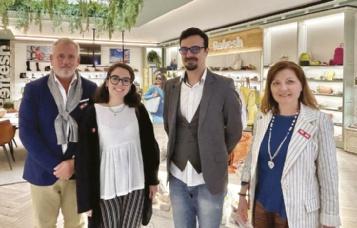
BioStep
Spain Trade and Investment (l’istituzione che promuove l’internazionalizzazione delle aziende spagnole). Senza dimenticare l’ANCC (l’Associazione dei Retailer Spagnoli) la cui presidente Maria Labrador ha confermato la presenza di una delegazione durante la prossima edizione di giugno della fiera di Riva del Garda.

In un quadro economico in crescita le istituzioni spagnole segnalano solo alcuni spunti di riflessione: il mercato e l’approvvigionamento delle risorse sta cambiando notevolmente in Spagna. É un periodo storico positivo soprattutto per prodotti di livello medio-alto e del lusso Si nota una crescita rimarchevole di Albania, Serbia, Croazia, Indonesia, Filippine e Cambogia come paesi per la produzione di calzature a prezzi anche più bassi rispetto al colosso cinese.
L’affacciarsi di un grave problema sempre più pressante e insistente per la produzione europea, annunciato già da anni: la mancanza di lavoratori specializzati nel settore della calzatura e della pelletteria.
LA VOCE DEI PRODUTTORI
Durante il recente viaggio in terra spagnola, Expo Riva Schuh & Gardabags non ha mancato di incontrare alcuni di coloro che animano i suoi padiglioni fieristici con magnifiche collezioni di scarpe e borse, riscontrando il perfetto mix di qualità, cura per materiali e dettagli, attenzione al prezzo e contenuti innovativi e sostenibili.
Proprio sulla sostenibilità si focalizza Pablosky (produttore dell’area di Toledo) che con la sua terza generazione di imprenditori al comando, i 300 dipendenti e un fatturato di 40 milioni di euro, realizza scarpe da bambino sostenibili e certificate.
13 Fair
XTI
Di sostenibilità parla anche Recykers che propone le sue scarpe vegane realizzate con materiali certificati ricavati da attività di riciclo: “Recykers è nata con un obiettivo chiaro fin dall'inizio: sviluppare, attraverso l'innovazione, materiali e tecniche di produzione sostenibili per la creazione di prodotti più performanti ed efficienti. Ci impegniamo a riciclare e riutilizzare i materiali esistenti e a promuovere l'uso di materiali biodegradabili”, raccontano dall’azienda.
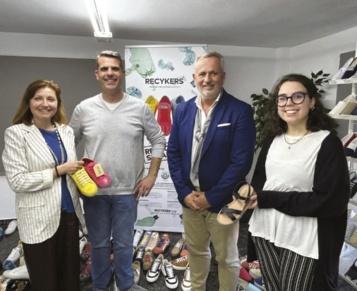
Bertuchi - Nex51 è una realtà votata all’esportazione che ha abbracciato le richieste di mercato e, dopo più di 30 di presenza nel settore, ha deciso di proporre una linea di prodotti che presenti contenuti sostenibili, come suole realizzate con materiali riciclati di provenienza naturale.
Sandali, pantofole e mocassini per uomo, donna e bambino destinati alle grandi catene della distribuzione (Auchan, Intersport, Leclerc) rappresentano invece il core business della Pro-Contact di Alicante.

Un’azienda votata all’export (90% della produzione) e che da 35 anni espone a Expo Riva Schuh & Gardabags: “I compratori – spiegano - sono stanchi del fast fashion e di prodotti cheap. Cercano proposte veramente attente ai temi della sostenibilità e rifiutano chi promuove operazioni che sanno di greenwashing”.
Evidenziano una preoccupazione: una flessione notevole delle vendite nel mercato tedesco che ha provocato molte chiusure di negozi.
Un rilievo sottolineato anche durante la successiva tappa del viaggio.
Nasce nel 2003, ma si afferma subito sul mercato grazie al sostanzioso e geniale investimento in comunicazione. Si parla di XTI: più di 20 punti vendita in Spagna e 70 franchising in tutto il mondo. I suoi brand XTI, XTI Kids, Carmela (linea in pelle) e Refresh sono prodotti in Cina (da fabbriche che lavorano in esclusiva), Turchia e Bangladesh, per un totale annuo di 7 milioni di paia, per il 60% esportate. Un brand da sempre protagonista dell’evento rivano: “Expo Riva Schuh & Gardabags è molto importante per testare le nuove collezioni. Il periodo è perfetto e ci permette un confronto diretto con moltissimi buyer internazionali”.
Ha sede ad Alicante anche Pinoso’s, un brand che ha saputo innovare in un segmento di prodotto dove non ce lo si aspetterebbe: la scarpa confort. I suoi modelli in pelle da uomo hanno conquistato gli USA, l’Arabia Saudita, il Kuwait e gli Emirati Arabi Uniti, l’Europa, la Corea e il Canada (grazie anche ai contatti sviluppati a Riva del Garda). Perché con Pinoso’s si parla di innovazione? Perché producono scarpe per diabetici certificate negli Stati Uniti, che non devono presentare cuciture interne, devono prevedere una calzata abbondante e adattabile grazie a un sistema di chiusura particolare, oltre a un plantare estraibile in memory foam, antibatterico, capace di adattarsi perfettamente al piede.
C’è poi chi partecipa a Expo Riva Schuh & Gardabags per incontrare un target specifico di compratori, come Neox/ Marila che punta a una distribuzione nell’emisfero sud del mondo. Oppure Sab Calzados che offre la sua poten-
14 Fair ProContact
SAB Calzados
za di fuoco produttiva (3 milioni di paia l’anno) a chi cerca private label. Da 14 anni espone in fiera anche chi si è specializzato in sandali di qualità, come Lola Canales/Pasoli, mentre gli anni sono 35 per Bio Step che produce circa un milione di paia l’anno (40 milioni di fatturato) di sandali e ciabatte per uomo e donna richieste in molti paesi come Russia, USA, Svezia, Germania, Francia e Belgio.
Un nutrito elenco di attività industriali che potrebbe continuare per molte altre pagine. Uno scorcio su un panorama ben più ampio da cui risulta chiaro come la Spagna, al pari di altri paesi produttori europei, presenti una variegata offerta di accessori moda, in quanto a modelli e fasce di prezzo. Un’offerta che non può che rivelarsi preziosa per tutti coloro che a Expo Riva Schuh & Gardabags faranno sourcing.
Voices from Spain:
with key opportunities to expand its boundaries.
To do so, however, it’s important to know the market. Based on this premise comes Expo Riva Schuh & Gardabags Around the World, a series of initiatives bringing the Riva event into close contact with the industry's institutions, manufacturers and distributors all throughout the world with numerous targeted events, company visits and personal meetings. Spain was the initiative’s most recent focus.
WHY SPAIN?
Spain has long been regarded as one of the most important international production poles. Suffice it to quote a few figures (source FICE) to clarify the concept: in 2022, Spanish footwear exports reached EUR 3,056 million and 159 million pairs (+22% in value and +6% in volume compared to 2021. And +14.2% in value and +2% in volume compared to 2019).
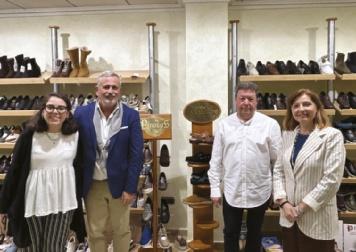
The European Union is the main buyer of Spanish footwear, accounting for 77% of total exports in volume and 71% in value. France, Italy, Germany, Portugal and Poland top the list of destinations. Exports to the EU reached EUR 2,168 million and 122 million pairs, an increase of 28% in value and 8% in pairs compared to last year, while the average price increased by 19%.
The aim of Expo Riva Schuh & Gardabags has never been to simply sell exhibition space, but rather to build, edition after edition (number 99 will be held at Riva del Garda from 17th to 20th June 2023) a business platform capable of growing the footwear and leather goods industry and providing the market
The United States, on the other hand, is the top non-EU destination, with 28.7% growth, exceeding the pre-pandemic figures by 5 percentage points. The UK, post-Brexit, emerges as the second largest market with a 17% increase, albeit 28% lower than in 2019. Turkey shows the most striking growth: +45%, which becomes +95% if one considers the pre-pandemic figures. The opposite is true in the case of China, which remains the fourth most important market outside the EU, but whose import figures from Spain show a marked decline: -38%.
This is also a crucial market for Italy, which enjoys conside-
15 Fair
one of the most important international markets for the production and sale of footwear and leather goods
The expanding growth of the Spanish footwear and leather goods market bodes well for export-oriented local manufacturing businesses that year after year, attract the interest of international buyers at Expo Riva Schuh & Gardabags. The focus is increasingly on sustainability and medium/high quality. The main difficulties encountered include a labour shortage and concern for the German market, which seems to be in retreat.
Pinosos
rable inbound and outbound trade with Spain. Exports from Italy to Spain are now worth EUR 32 million, while inbound trade is worth EUR 30.5 million (according to data processed by ICE based on ISTAT data).
This makes Spain a major player in the fashion accessories market with a strong propensity for exports, and similarly for leather goods – as demonstrated by the figures – a segment characterised by medium/high-quality collections and competitive prices, with 45% of production directed to foreign countries. These figures clearly demonstrate Spain’s considerable role within the Expo Riva Schuh & Gardabags offering, and how important it was for the event’s organisers to meet with Imanol Martinez, Marketing Director of FICE (the business organisation representing 90% of Spanish footwear production, distribution and exports); Fernando Gutiérrez, Secretary Ge-
neral of ASEFMA (the Spanish association of manufacturers of leather goods, travel goods and related items); Pablo Conde, Consumer Goods and Cultural Industries Director, and Veruska de Prado Poloni, Fashion Department, both from ICEX Spain Trade and Investment (the institution that promotes the internationalisation of Spanish companies). Not to mention the ANCC (the Association of Spanish Retailers) whose president Maria Labrador has confirmed the attendance of a delegation at the next edition of the fair at Riva del Garda in June.
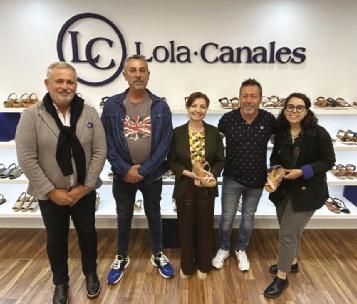

The Spanish institutions highlighted a few key points in an expanding economic landscape, including the fact that Spain's market and procurement are undergoing significant change. It is a positive historical period, particularly for medium-high-end and luxury products. Albania, Serbia, Croatia, Indonesia, the Philippines, and Cambodia are experiencing remarkable growth, making shoes at even lower prices than their Chinese counterpart. The lack of specialised workers in the footwear and leather goods market is emerging as a serious and increasingly pressing problem for European production, one that has been foreshadowed for years.
THE VOICE OF PRODUCERS
During its recent trip to Spain, Expo Riva Schuh & Gardabags met a number of those who fill its trade fair pavilions with magnificent shoe and bag collections every year, finding the perfect mix of quality, carefully selected materials and details, attention to price, and innovative and sustainable contents. Sustainability, in fact, is precisely the focus of Pablosky (a manufacturer from the Toledo area), which with its third generation of entrepreneurs at the helm, 300 employees and a turnover of
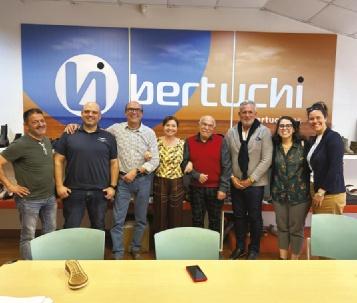
16 Fair
Bertuchi
PabloSky
Lola Canales
EUR 40 million, makes sustainable and certified children's shoes. Recykers too speaks of sustainability, promoting vegan shoes made from certified materials derived from recycling activities: “Recykers was founded with a clear objective right from the start: to develop, through innovation, sustainable materials and production techniques to create better-performing and more efficient products. We are committed to recycling and reusing existing materials and to promoting the use of biodegradable ones,” states the company.
After more than 30 years in the business, the export-oriented company, Bertuchi – Nex51, has similarly embraced the demands of the market, choosing to offer a product line with sustainable contents, such as soles made from naturally sourced recycled materials.
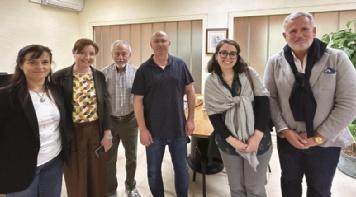
Sandals, slippers and moccasins for men, women and children destined for large retail chains (Auchan, Intersport, Leclerc), on the other hand,are the core business of Pro-Contact fromAlicante. A company that exports 90% of its production and has been exhibiting at Expo Riva Schuh & Gardabags for 35 years: “Buyers are tired of fast fashion and cheap products. They are now looking for truly sustainable offerings and reject those promoting operations that smack of greenwashing.” The company highlighted one particular concern: a significant drop in sales in the German market, causing many shops to close.
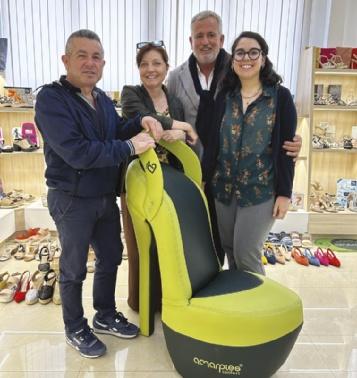
A finding that was underscored during the next leg of the trip. Founded in 2003, the company quickly became an important market player thanks to its substantial and clever investment in communication. We are speaking of XTI: more than 20 outlets in Spain and 70 franchises worldwide. Its brands XTI, XTI Kids, Carmela (leather line) and Refresh are produced in China (by factories with exclusive agreements), Turkey and Bangladesh, for an annual total of 7 million pairs, 60% of which are exported. A brand that has always been a key participant at the Riva event: "Expo Riva Schuh & Gardabags is crucial for testing new collections. The timing is perfect and allows us to directly engage with many international buyers.”
Also based in Alicante is Pinoso's, a brand that has managed to innovate in an unexpected product category: comfort shoes. Its men's leather models have conquered the US, Saudi Arabia, Kuwait and the United Arab Emirates, Europe, Korea and Canada (thanks also to contacts forged at Riva del Garda). Why do we speak of innovation when it comes to Pinoso’s? Because they produce shoes for diabetics that are certified in the US, which must have no inner seams, provide a snug and adaptable fit thanks to a special fastening system, and have a removable, anti-bacterial memory foam insole that perfectly adapts to the foot.
Then there are those who visit Expo Riva Schuh & Gardabags to meet a specific target group of buyers, such as Neox/Marila, which is aiming for distribution in the southern hemisphere. Or Sab Calzados, which offers its production firepower (3 million pairs per year) to those in search of private labels. Lola Canales/Pasoli, which specialises in quality sandals, has been exhibiting at the fair for the past 14 years, while it’s been 35 years for Bio Step, which produces roughly a million pairs per year (EUR 40 million turnover) of sandals and slippers for men and women, in demand across the globe in Russia, the US, Sweden, Germany, France and Belgium.
A lengthy list of industrial businesses that could fill several more pages. A peek at a much broader picture where it is clear that Spain, like other European manufacturing countries, has a varied offering of fashion accessories, in terms of both models and price ranges. An offer guaranteed to benefit all those who will be sourcing at Expo Riva Schuh & Gardabags.
17 Fair
BioStep
Amarpies
Appunti di mercato
Durante gli incontri di Market Focus a cui hanno partecipato alcuni dei visitatori (compratori e distributori) di Expo Riva Schuh & Gardabags sono emerse interessanti riflessioni su alcuni mercati internazionali di riferimento del settore calzature e pelletteria.

Stati Uniti, India, Sud Est Asiatico e America
Latina hanno espresso opportunità e difficoltà che affrontato quotidianamente, oltre a strategie che intendono attuare nel prossimo futuro.
U.S.A.
Due importanti distributori di Texas e Ohio hanno evidenziato l’importanza di trovare fornitori di prodotto che consentano loro di diversificare la propria offerta rispetto ai concorrenti. I loro vendor tradizionali, che servono le zone in cui operano, non permettono di emergere rispetto ai campionari consolidati. Per questo motivo partecipare alla fiera di Riva del Garda è per loro molto importante: “L’evento si svolge in anticipo rispetto alla stagione di vendita. Un fatto positivo perché ci permette di selezionare prodotti interessanti prima di dover trattare con la nostra rete tradizionale”.
Curioso notare come il consumatore americano non disdegni il sistema di taglie europeo, soprattutto se gli viene offerta una varietà di calzate che possa andare incontro alle esigenze della loro clientela.
Per quanto riguarda l’online non è ancora così diffuso (copre fra il 3 e il 5% del loro fatturato) nonostante la pandemia abbia sicuramente svecchiato molte dinamiche d’acquisto del passato. Sostenibilità? È un tema sentito e che spinge a informarsi e a porre domande, vale in particolare per le giovani generazioni, ma non è ancora un valore così forte da guidare le decisioni d’acquisto.
INDIA
I rappresentanti del mondo della distribuzione indiana hanno messo in risalto le difficoltà sperimentate durante il Covid rispetto alle possibilità di approvvigionamento di un prodotto che fosse di buona qualità, molto vario e che mantenesse un buon equilibrio riguardo il prezzo. La Cina, che rimane l’insostituibile paese fornitore per eccellenza, ha fatto sentire la sua assenza durante il lockdown e non ha più offerto prezzi competitivi a causa della crisi della logistica. Per questo la distribuzione indiana ha guardato a Bangladesh, Vietnam e Indonesia come possibili sostituti. “I nostri clienti si affidano molto a brand conosciuti e sono molto attenti al prezzo; perciò, non possiamo fare a meno della Cina che dispone
18 Market
Riflessioni, spunti, criticità e opportunità sono emerse dagli incontri con alcuni importanti compratori e distributori che hanno preso parte a Expo Riva Schuh & Gardabags.
di un’offerta molto variegata e ben riconosciuta. Il che ci costringe, in molti casi, ad assorbire gli aumenti dei costi per non riversarli sul cliente. Una situazione difficile da affrontare”.
Buone notizie arrivano dall’online, dichiarato in crescita laddove vengano forniti servizi all’avanguardia, e sul fronte sostenibilità: l’interesse è crescente e la produzione locale sta, passo dopo passo, cercando di migliorare i contenuti sostenibili dei prodotti.
SUD EST ASIATICO
Molto interessati dall’offerta internazionale proposta da Expo Riva Schuh & Gardabags anche i compratori provenienti da Singapore, Malaysia, Indonesia e Australia. “Ci hanno molto colpito la qualità e la varietà delle proposte dei produttori di Brasile e Turchia”.

Per molti di loro, che servono una clientela anche medio alta, è stato molto interessante scoprire proposte di design differenti che gli hanno consentito di comprare accessori, anche Made in Italy, in grado di distinguere la loro offerta. L’Asean market è senza dubbio una piazza in rapido sviluppo in cui i consumatori vedono crescere il potere d’acquisto, viaggiano molto più spesso e, perciò, intercettano i trend internazionali che poi desiderano ritrovare nei loro negozi. Per i distributori della zona Expo Riva Schuh & Gardabags rappresenta una finestra importante sulle tendenze più diffuse a livello internazionale. Una regione che può riservare piacevoli sorprese per le produzioni straniere a cui basterebbe trovare anche un solo buon partner commerciale della zona per accedere ai mercati dell’intera area. Perché gli accordi di libero scambio vigenti in loco consentono di raggiungere tutti i Paesi della zona senza difficoltà e senza dazi: Brunei, Cambogia, Filippine, Indonesia, Laos, Malaysia, Myanmar, Singapore, Thailandia, Vietnam.
AMERICA LATINA
Guatemala, Salvador, Perù, Uruguay. In questi Paesi è molto diffusa, invece, l’esigenza di ampliare il business, gli ambiti di attività e l’offerta. Italia, Turchia, Indonesia, Brasile: questi alcuni dei paesi fornitori che più hanno catturato l’attenzione dei buyer latino-americani: “Ora che i costi della logistica stanno rientrando in parametri più accettabili, partecipare a Expo Riva Schuh & Gardabags ci ha dato la possibilità di fare scouting rispetto a nuovi fornitori che offrono non solo qualità, varietà ma anche categorie di prodotto interessanti per ampliare i nostri affari”.
Tra gli obbiettivi dei distributori Sud Americani anche quello di alleviare la dipendenza dalla fornitura cinese (che comunque rimane l’interlocutore principale) i cui costi di trasporto sono talmente aumentati da costringere molte realtà alla chiusura. “Ci siamo resi conto che ora è più facile interagire con i fornitori europei. La pandemia ha reso il mercato del Vecchio Continente più flessibile, disposto ad accettare minimi d’ordine più ragionevoli”. Tutti hanno sottolineato un punto: sono alla ricerca non di fornitori, ma di partner disposti a condividere i rischi, come anche le tante opportunità, che può offrire un mercato in crescita come quello del Sud America.
Market notes
During the Market Focus meetings attended by some of the visitors (buyers and distributors) to Expo Riva Schuh & Gardabags, interesting thoughts emerged on some key international markets in the footwear and leather goods sector. U.S., India, Southeast Asia and Latin America expressed opportunities and difficulties they face on a daily basis, as well as strategies they intend to implement in the near future.
19 Market
Reflections, insights, critical issues and opportunities emerged from the meetings with some of the important buyers and distributors who took part in Expo Riva Schuh & Gardabags.
U.S.
Two major distributors from Texas and Ohio highlighted the importance of finding product suppliers that would allow them to diversify their offerings from their competitors. Their traditional vendors, which serve the areas in which they operate, do not allow them to stand out from established samplers. This is why participating in the Riva del Garda fair is very important to them: "The event is held in advance of the selling season. This is a good thing because it allows us to select interesting products before we have to deal with our traditional network." Interestingly enough, the American consumer does not disdain the European sizing system, especially if they are offered a variety of fits that can meet the needs of their clientele. As for online, it is still not as prevalent (it covers between 3 and 5 percent of their sales) despite the fact that the pandemic has certainly debunked many of the buying dynamics of the past. Sustainability? It is a heartfelt issue and one that prompts information and questions, it is particularly valid for the younger generation, but it is not yet such a strong value to drive purchasing decisions.
INDIA
Representatives of the Indian retail community highlighted the difficulties experienced during Covid with respect to the possibilities of sourcing a product that was of good quality, highly varied, and maintained a good balance with respect to price. China, which remains the irreplaceable supplier country par excellence, made its absence felt during the lockdown and no longer offered competitive prices due to the logistics crisis. Therefore, Indian distribution has looked to Bangladesh, Vietnam, and Indonesia as possible substitutes. "Our customers rely heavily on well-known brands and are very price conscious; therefore, we cannot do without China, which has a very diverse and well-recognized offering. Which forces us, in many cases, to absorb cost increases so as not to pass them on to the customer. A difficult situation to deal with."
Good news comes from online, reported to be growing where cutting-edge services are provided, and on the sustainability

front: interest is growing and local production is, step by step, trying to improve the sustainable content of products.
SOUTHEAST ASIA
Also very interested in the international offer proposed by Expo Riva Schuh & Gardabags were buyers from Singapore, Malaysia, Indonesia and Australia. "We were very impressed by the quality and variety of proposals from manufacturers from Brazil and Turkey."For many of them, who also serve a medium-high clientele, it was very interesting to discover different design proposals that allowed them to buy accessories, including Made in Italy, that could distinguish their offerings. The Asean market is undoubtedly a rapidly developing marketplace where consumers are seeing growing purchasing power, traveling much more often and, therefore, intercepting international trends that they then wish to find in their stores. For distributors in the area, Expo Riva Schuh & Gardabags represents an important window on the most popular international topics. A region that can hold pleasant surprises for foreign productions to which it would be enough to find even one good business partner in the area to gain access to the markets of the entire zone. Because the free trade agreements in place there make it possible to reach all the countries in the area without difficulty and without duties: Brunei, Cambodia, the Philippines, Indonesia, Laos, Malaysia, Myanmar, Singapore, Thailand, and Vietnam.
LATIN AMERICA.
Guatemala, El Salvador, Peru, Uruguay. In these countries, however, the need to expand business, areas of activity and offerings is widespread. Italy, Turkey, Indonesia, Brazil: these are some of the supplier countries that have most caught the attention of Latin American buyers. "Now that logistics costs are falling within more acceptable parameters, participating in Expo Riva Schuh & Gardabags has given us the opportunity to scout with respect to new suppliers that offer not only quality, variety but also interesting product categories to expand our business."Among the goals of the South American distributors is also to alleviate dependence on Chinese supply (which, however, remains the main interlocutor) whose transportation costs have risen so much that they have forced many businesses to close. "We have realized that it is now easier to interact with European suppliers. The pandemic has made the Old Continent market more flexible, willing to accept more reasonable order minimums."All emphasized one point: they are looking not for suppliers, but for partners willing to share the risks, as well as the many opportunities, that a growing market like South America can offer.
20 Market
INTERNATIONAL FAIRS GUIDE 2023

Tutto il mondo delle fiere a tema Calzature, Pelletteria e Sicurezza.
The world of footwear, leather goods and safety fairs.
Un fantastico aiuto per aziende e professionisti che vogliono orientarsi nel mondo delle fiere B2B riguardo calzature, pelletteria e sicurezza.
A great help for companies and professionals who want to orient themselves in the world of b2b fairs of footwear, leather goods and safety.
VISITA IL SITO
VISIT THE WEBSITE
edizioniaf.com/fairs

Timidi cenni di ottimismo per il mercato calzaturiero tedesco
L'Ucraina, che sta soffrendo molto a causa dell'aggressione russa, e la Brexit continuano a indebolire il commercio con altri Paesi. Ciononostante, il settore guarda al futuro con cauto ottimismo, anche grazie a occasioni come SHOES Düsseldorf - un importante indicatore dell'umore dell'industria e del commercio al dettaglio. Dalle indagini condotte sulla situazione economica e sullo stato d’animo generale degli attori dell’industria calzaturiera tedesca, sono emerse varie preoccupazioni. La carenza di lavoratori qualificati mette le aziende alla continua ricerca di specialisti in tutti i settori, ad esempio per i reparti tecnici e commerciali. La produzione di calzature richiede, infatti, conoscenze specialistiche nella scienza dei materiali, nella gestione dei prodotti e nel controllo della qualità. A tutto ciò si aggiunge la nuova legge sulla catena di fornitura e l'aumento dei prezzi dell'energia, che si cerca di compensare con investimenti nell'efficienza energetica e sostenibile.

Indagine sullo stato attuale dell’industria calzaturiera tedesca:
i dati rivelano buoni risultati tuttavia offuscati dalle incertezze che continuano a indebolire il commercio.
L'Associazione Federale dell'Industria Calzaturiera e della Pelletteria Tedesca registra che nel settore calzaturiero tedesco, continua il percorso di ripresa affermatosi post pandemia. Il livello di "prima del Covid-19", però, non è ancora stato pienamente raggiunto e ci si chiede se e quando si tornerà a una condizione chiara e forte di ripresa delle vendite, di importazioni ed esportazioni. I buoni risultati del mercato sono offuscati dall'incertezza della guerra in Europa, dall'inflazione ancora elevata nel settore manifatturiero e nei prezzi al consumo.
LA SITUAZIONE DEL FATTURATO E DELL’OCCUPAZIONE
Il fatturato dei calzaturifici tedeschi è aumentato significativamente nel 2022 rispetto al 2021 e dimostra che il mercato ha acquisito slancio e vigore con la fine delle misure dovute alla pandemia. Il fatturato totale è aumentato da 1,99 miliardi di euro nel 2021 a 2,17 miliardi di euro nel 2022, che corrisponde a un aumento delle vendite del 9%.
Le vendite in Germania nel 2022 sono state pari a 1,61 miliardi di euro. Anche le vendite all'estero hanno registrato una leggera ripresa, con una crescita dell'8,9%. Nel 2022 sono state pari a 559,3 milioni di euro mentre nel 2021 erano pari a 513,4 milioni di euro).
Il numero di aziende con 50 o più dipendenti è rimasto stabile a 33 nel 2022. In queste aziende lavorano in media circa 8.200 dipendenti all'anno, rispetto ai 7.600 del 2021.
Ciò corrisponde a un aumento del 7,9%. I salari lordi sono leggermente aumentati, anche se in ritardo rispetto all'aumento dei prezzi al consumo.
LA SITUAZIONE DEI PREZZI
Nel gennaio 2023 i prezzi di produzione hanno continuato
22 Market
a salire e dopo un decennio in cui l'andamento dei prezzi è stato molto moderato, per lo più dell'ordine dell'1% annuo, stiamo parlando di un punto di svolta. Nel 2022, l'aumento su base annua è stato del 6%. Un chiaro aumento medio annuo del 7,9% sull'intero paniere è stato registrato anche nei prezzi al consumo, che risentono principalmente dell'aumento dei costi dell'energia e del personale. Anche in questo caso, l'inflazione si fa sentire e se non ci sarà un'inversione di tendenza, ciò si rifletterà sulla situazione degli ordini in entrata. Pertanto, l'industria rimane cauta nella valutazione di come l'aumento dei prezzi influenzerà il consumo complessivo e l'acquisto di scarpe nel 2023.
LA SITUAZIONE RIGUARDO AL COMMERCIO ESTERO
Nel 2022 sono state esportate dalla Germania calzature per un valore totale di 9,6 miliardi di euro. Nel 2021 il numero era ancora di 8,04 miliardi di euro, il che corrisponde a un aumento del 19,4%. Per quanto riguarda le importazioni, il valore totale è stato di 14,3 miliardi di euro rispetto agli 11,2 miliardi di euro del 2021. Si tratta di un aumento del 27,7%. La ripresa del commercio estero è stata particolarmente evidente nella seconda metà del 2022. A partire da luglio dell'anno scorso, i dati relativi alle importazioni e alle esportazioni hanno registrato un'impennata significativa. Nella prima metà dell'anno sono state esportate 175,2 milioni di paia di scarpe per un valore complessivo di 4,2 miliardi di euro, mentre nella seconda metà dell'anno sono stati esportati 225,75 milioni di paia di scarpe per un valore di 5,4 miliardi di euro. Un quadro simile emerge per le importazioni: nel primo semestre del 2022 il valore è stato di 5,8 miliardi di euro, nel secondo di 8,5 miliardi di euro. Si può dire che si nota un rinnovato desiderio dei consumatori di acquistare scarpe, sia sportive che per specifiche occasioni d’uso, oltre che moda. Sembra che, dopo la restrizione causata dalla pandemia, le persone stiano nuovamente investendo più denaro nel fashion. Segnali positivi anche nell'export. I Paesi limitrofi, Polonia e Francia, sono tradizionalmente i più importanti mercati di vendita per le calzature provenienti dalla Germania. Nel 2021 sono state esportate in Francia calzature per un valore di 926,2 milioni di euro, mentre nel 2022 la cifra ha superato il miliardo di euro. Il valore delle esportazioni verso la Polonia è stato addirittura di circa 1,3 miliardi di euro (2021: 1,08 miliardi di euro). Ciò corrisponde a un aumento del 20,4%. D'altra parte, il commercio con il Regno Unito, anche a causa della Brexit, sta diminuendo in modo significativo. Mentre nel 2021 sono state esportate scarpe per un valore di 37 milioni
di euro, nel 2022 il valore è stato solo di circa 20 milioni di euro. L'Italia rimane il più importante Paese europeo da cui la Germania importa calzature, con un valore totale di circa 1,3 miliardi di euro. Guardando fuori dell’Europa, questo ruolo è ricoperto dalla Cina: nel 2021, il valore totale delle scarpe importate era di 2,7 miliardi di euro, nel 2022 era già di 3,9 miliardi, il che corrisponde a un aumento del 44%. Al secondo posto c'è il Vietnam, che da tempo è un partner commerciale importante per l'industria calzaturiera tedesca. l'India d’altro canto sta diventando un partner commerciale sempre più importante per le importazioni calzaturiere.
PROSPETTIVE FUTURE
Per il 2023 si prevedono impulsi di crescita sia per le vendite che per le importazioni e le esportazioni. Grazie alla diminuzione delle restrizioni dovute alla pandemia e all'ulteriore diminuzione dei rischi di inflazione, l'industria spera in un'ulteriore ripresa nel corso del 2023.
Tuttavia, le numerose normative già attuate o annunciate a Bruxelles e Berlino stanno appesantendo l'industria calzaturiera tedesca con ulteriore burocrazia. Nuovi requisiti nella catena di fornitura o nell'etichettatura dei prodotti impegnano anche i produttori di calzature e pelletteria. Ciò comporta un aumento della documentazione e dei costi. La ripresa potrà essere completa e duratura solo se un punto di svolta sarà rappresentato dalla conclusione di nuovi accordi di libero scambio e dalla richiesta di sforzi per dare maggior sollievo e sostegno alle sfide dell’industria.
Timid hints of optimism for the German footwear market
The Federal Association of the German Footwear and Leather Goods Industry records that in the German shoe industry, the post-pandemic recovery path continues. The 'before Covid-19' level, however, has not yet been fully reached and the question arises as to whether and when there will be a clear and strong
23 Market
Survey on the current state of the German footwear industry: data reveal good results, however, clouded by uncertainties that continue to weaken trade.
recovery of sales, imports and exports. The positive market results are clouded by the uncertainty of the war in Europe, and the still high inflation in the manufacturing sector and in consumer prices. Ukraine, which is suffering greatly from Russian aggression, and Brexit continue to weaken trade with other countries. Nevertheless, the sector is looking to the future with cautious optimism, also thanks to opportunities such as SHOES Düsseldorf - an important indicator of the mood in industry and retail. Surveys on the economic situation and the general state of mind of the players in the German shoe industry revealed various concerns. The shortage of skilled workers puts companies in constant search of specialists in all areas, e.g. for technical and commercial departments. Shoe production requires specialised knowledge in materials science, product management and quality control. Added to this is the new supply chain law and rising energy prices, which are being sought to be offset by investments in energy efficiency and sustainability
THE TURNOVER AND EMPLOYMENT SITUATION
The turnover of German shoe manufacturers increased significantly in 2022 compared to 2021 and shows that the market gained momentum and vigour with the end of the pandemic measures. Total sales increased from EUR 1.99 billion in 2021 to EUR 2.17 billion in 2022, which corresponds to an increase in sales of 9 per cent. Sales in Germany in 2022 amounted to EUR 1.61 billion. Sales abroad also recovered slightly, with a growth of 8.9 per cent. They amounted to EUR 559.3 million in 2022 and EUR 513.4 million in 2021. The number of companies with 50 or more employees remained stable at 33 in 2022. An average of about 8,200 employees per year work in these companies, compared to 7,600 in 2021. This corresponds to an increase of 7.9 per cent. Gross wages increased slightly, although lagging the increase in consumer prices.
THE PRICING SITUATION
In January 2023, producer prices continued to rise and after a decade in which the price trend was very moderate, mostly in the order of 1% per year, we are talking about a turning point. In 2022, the year-on-year increase was 6%. A clear annual average increase of 7.9% across the entire basket was also recorded in consumer prices, which were mainly affected by rising energy and personnel costs. Again, inflation is being felt and if there is no turnaround, this will be reflected in the incoming orders situation. Therefore, the industry remains cautious in its assessment of how rising prices will affect overall consumption and shoe purchases in 2023.
THE FOREIGN TRADE SITUATION
In 2022, shoes with a total value of EUR 9.6 billion were ex-
ported from Germany. In 2021, the number was still EUR 8.04 billion, which corresponds to an increase of 19.4 per cent. With regard to imports, the total value was EUR 14.3 billion compared to EUR 11.2 billion in 2021. This is an increase of 27.7 %. The upturn in foreign trade was particularly evident in the second half of 2022. Since July last year, import and export figures have soared significantly. In the first half of the year, 175.2 million pairs of shoes with a total value of EUR 4.2 billion were exported, while in the second half of the year, 225.75 million pairs of shoes with a value of EUR 5.4 billion were exported. A similar picture emerges for imports: in the first half of 2022 the value was EUR 5.8 billion, in the second half EUR 8.5 billion. It can be said that there is a renewed consumer desire to buy shoes, both sports and for specific occasions of use, as well as fashion. It seems that, after the restriction caused by the pandemic, people are again investing more money in fashion. Positive signs also in exports. The neighbouring countries Poland and France are traditionally the most important sales markets for shoes from Germany. In 2021, footwear worth EUR 926.2 million was exported to France, while in 2022 the figure exceeded EUR 1 billion. The value of exports to Poland was even around EUR 1.3 billion (2021: EUR 1.08 billion). This corresponds to an increase of 20.4 per cent. On the other hand, trade with the UK, also due to Brexit, is decreasing significantly. Whereas in 2021 shoes worth EUR 37 million were exported, in 2022 the value was only around EUR 20 million. Italy remains the most important European country from which Germany imports shoes, with a total value of around EUR 1.3 billion. Looking outside Europe, this role is played by China: in 2021, the total value of imported shoes was EUR 2.7 billion, in 2022 it was already EUR 3.9 billion, which corresponds to an increase of 44%. In second place is Vietnam, which has long been an important trading partner for the German shoe industry. India on the other hand is becoming an increasingly important trading partner for shoe imports.
FUTURE PROSPECTS
For 2023, growth impulses are expected for both sales, imports and exports. With the easing of restrictions due to the pandemic and the further decrease of inflation risks, the industry hopes for a further recovery during 2023. However, the numerous regulations already implemented or announced in Brussels and Berlin are burdening the German shoe industry with additional red tape. New requirements in the supply chain or in the labelling of products also burden manufacturers of shoes and leather goods. This leads to increased documentation and costs. The recovery can only be complete and lasting if a turning point is the conclusion of new free trade agreements and the demand for efforts to provide more relief and support for the industry's challenges.
24 Market
Schuh-Neumann.
Tradizione e tendenza - da 100 anni
Schuh-Neumann è il più grande negozio di calzature di Hannover. L'azienda, gestita dai proprietari, combina alla perfezione tradizione e tendenza. Per l'amministratore delegato Carsten Obermeier, l'alta qualità, la sostenibilità e il buon design sono valori imprescindibili. Questo vale anche per l'aspetto del rinomato negozio di calzature: in un mondo di città sempre più simili, Schuh-Neumann si distingue chiaramente dagli altri negozi con la sua sorprendente insegna retroilluminata (al neon). Quest'anno SchuhNeumann festeggia il suo 100° compleanno e ne abbiamo approfittato per fare due chiacchiere proprio con Carsten Obermeier.
Congratulazioni, signor Obermeier!

Come vanno le cose ad Hannover?
Stiamo andando bene. Stiamo addirittura andando molto bene rispetto all'anno scorso. E questo nonostante il fatto che dobbiamo affrontare le notevoli difficoltà dei negozi di calzature nel centro città. Due grandi catene di negozi di scarpe nelle immediate vicinanze hanno presentato istanza di fallimento. Anche nel settore tessile si registrano deplorevoli restrizioni: Primark sta dimezzando la sua superficie di vendita. Una filiale di H&M sta chiudendo e poi c'è il posto vacante causato da Kaufhof nel quartiere vicino: tutto sommato, non sono proprio buone condizioni!
Si parla molto di contenimento dei consumi.
Può confermarlo?
No, fortunatamente non per quanto ci riguarda. Registriamo quantità positive e prezzi medi in aumento. Quindi, alla luce di questi dati positivi, non c'è alcuna questione di restrizione dei consumatori.
Cosa sta andando bene? Cosa non va?
Abbiamo notato che le scarpe ad alto prezzo stanno andando meglio. In realtà, al momento non possiamo lamentarci di problemi di prezzo. Al contrario: come ho detto prima,
25 Market
La resistenza e la resilienza di Schuh-Neumann, importante negozio di calzature ad Hannover.
Porta avanti il proprio stile e le tradizioni decennali, ma inserendosi perfettamente nell’onda delle tendenze della moda.
Carsten Obermeier
di Claudia Schulz
siamo contenti dell'aumento dei prezzi medi. In termini di moda, il colore sta andando alla grande. Il rosa e il verde sono i colori migliori. Abbiamo messo in risalto i colori di potere: un'intera vetrina in rosa e un'altra completamente in verde. Questo piace ai clienti. Inoltre, le sneakers bianche, e intendo completamente bianche, pulite dalla suola alla tomaia, sono molto richieste. La tomaia deve essere in pelle. Il mesh non funziona in questo segmento. Le scarpe da outdoor e da trekking al momento non stanno dando i risultati sperati. I magazzini sono molto pieni perché le consegne erano troppo tardive, a volte con ritardi di mezzo anno. Forse a causa del Covid, ci sono troppe scarpe di questo gruppo di prodotti sul mercato.
Parliamo di scarpe da donna. Sta osservando un cambiamento verso una maggiore femminilità?
Sicuramente. Le scarpe eleganti e femminili tornano ad essere molto richieste. Si sente che gli eventi e le celebrazioni di ogni tipo attirano l’attenzione. Per queste feste, le donne hanno bisogno di scarpe speciali. Da qualche tempo vendiamo molto bene le décolleté e i mocassini colorati. Anche le ballerine a punta sono molto popolari. Nel nostro negozio abbiamo un'ampia gamma di scarpe italiane.
Cosa succede nelle scarpe da uomo?
Dalla metà dell'anno scorso vendiamo scarpe che si abbinano molto bene agli abiti. Stiamo notando che anche gli uomini più giovani acquistano in base alle occasioni, ovvero cercano scarpe da lavoro più raffinate. D'altra parte, il comportamento d'acquisto della maggior parte degli uomini è ancora molto orientato alla domanda. Quello che va sempre bene sono le scarpe da ginnastica bianche. Più precisamente: triple white - il che significa: pelle bianca, suola bianca, lacci bianchi.
A quali fiere partecipa?
Sono sempre stato un fan di Berlino, ma purtroppo le fiere lì hanno perso il loro fascino. Seek è ancora valida, ma non può esistere da sola. Vado alle fiere ANWR, vado nei centri regionali per gli ordini di calzature e all'Essenz di Monaco. Mi piacerebbe visitare il Micam, ma i prezzi degli hotel sono troppo alti. Expo Riva Schuh sarebbe bello - forse si potrà fare a giugno.
100 anni di Schuh-Neumann
Dopo la fondazione di Schuh-Neumann a Peine nel 1903 e un trasferimento, nel 1933 furono aperte cinque filiali ad Hannover. Tuttavia, a seguito dei bombardamenti aerei
dell'ottobre 1943, questi negozi, come l'intero centro di Hannover, furono gravemente danneggiati. Nel 1949 le vendite ripresero nell'edificio di nuova costruzione all'angolo tra Seilwinderstr. e Osterstr. I decenni successivi furono caratterizzati da una crescita costante: ampliamenti, ristrutturazioni ed espansioni dei locali commerciali e modernizzazioni. Negli anni '90, il processo di modernizzazione in corso ha assunto un nuovo orientamento: la sostenibilità e la compatibilità ambientale, obiettivi che oggi sono sempre più essenziali. Su una superficie di 750 metri quadrati, Schuh-Neumann vende scarpe da donna, uomo e bambino. Oltre al negozio principale, Neumann gestisce il negozio Lloyd ad Hannover. Oltre a ricoprire la carica di amministratore delegato di Schuh-Neumann, Carsten Obermeier è membro del presidio di BTE.
Schuh-Neumann. Tradition and zeitgeist-for100years
Schuh-Neumann is the largest shoe shop in Hanover. The owner-managed house combines tradition and zeitgeist to perfection. For managing director Carsten Obermeier, high quality, sustainability and good design are a must. This also applies to the appearance of the renowned shoe store: in a world of increasingly similar cities, Schuh-Neumann clearly stands out from other shops with its striking retro illuminated (neon) sign. This year, Schuh-Neumann celebrates its 100th birthday and we took the opportunity to have a chat with Carsten Obermeier himself.
Congratulations, Mr. Obermeier!
How are things going in Hanover?
We are doing well. We are even doing very well compared to last year. And that's despite the fact that we have to contend with considerable difficulties of stationary shops in the city centre. Two large shoe chain stores in the immediate vicinity have filed for insolvency. We are also experiencing regrettable restrictions
26 Market
The endurance and resilience of Schuh-Neumann, a leading shoe shop in Hanover. It carries on its own style and decades-old traditions, but fits perfectly into the wave of fashion trends.
in the textile sector: Primark is halving its sales area. An H & M branch is closing down and then there is the vacancy caused by Kaufhof in the next neighbourhood - all in all, not really good conditions!
There is a lot of talk about consumer restraint. Can you confirm this?
No, fortunately not as far as we are concerned. We are recording positive quantities and rising average prices. So in view of these positive figures, there is no question of consumer restraint.
What is going well? What is not?
We have noticed that high-priced shoes are doing better. In fact, at the moment, we really can't complain about price problems. On the contrary: as I said before, we are happy about rising average prices. In terms of fashion, colour is doing great. Pink and green are the best colours. We have staged the power colours prominently: one full shop window each in pink and another totally in green. That appeals to the customers. In addition, white sneakers, and I mean completely white, clean sneakers from the sole to the upper are in demand. The uppers have to be leather. Mesh does not run in this segment. Outdoor and trekking shoes at the moment are not performing as expected. The warehouses are very full because deliveries were far too late, sometimes with delays of half a year
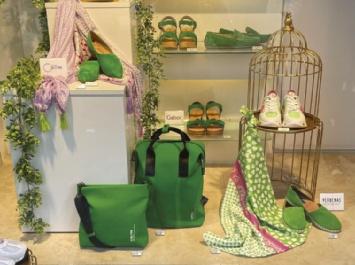
Let'stalkaboutwomen'sshoes.Areyouobservingashift towards more femininity?
Definitely. Elegant, feminine shoes are doing great. You can feel that events and celebrations of all kinds are attracting a lot of attention. For these festivities, women need special shoes. For some time now, we have been selling pumps and loafers in colour very well. Pointed ballerinas are also very popular. In our shop we carry a wide range of Italian shoes - it fits!
What is happening in men's shoes?

We have been selling shoes that go with suits very well since the middle of last year. We are noticing that younger men are also buying occasion-related, that means, they are looking for finer, kinds of business shoes. On the other hand, the buying behaviour of most men is still very demand-oriented. What always goes: white sneakers. More precisely: triple white – what means: white leather, white sole, white laces.
Which trade fairs do you attend?
I was always a Berlin fan, but the fairs there have unfortunately lost their appeal. Seek is still good, but it can't exist on its own. I travel to the ANWR fairs, go to the regional shoe order centers and to Essenz in Munich. I would like to visit Micam, but the hotel prices are far too high. Expo Riva Schuh would be nice - maybe it will work out in June.
100 years of Schuh-Neumann
Dopo la fondazione di Schuh-Neumann a Peine nel 1903 e un trasferimento, nel 1933 furono aperte cinque filiali ad Hannover. Tuttavia, a seguito dei bombardamenti aerei dell'ottobre 1943, questi negozi, come l'intero centro di Hannover, furono gravemente danneggiati. Nel 1949 le vendite ripresero nell'edificio di nuova costruzione all'angolo tra Seilwinderstr. e Osterstr. I decenni successivi furono caratterizzati da una crescita costante: ampliamenti, ristrutturazioni ed espansioni dei locali commerciali e modernizzazioni. Negli anni '90, il processo di modernizzazione in corso ha assunto un nuovo orientamento: la sostenibilità e la compatibilità ambientale, obiettivi che oggi sono sempre più essenziali. Su una superficie di 750 metri quadrati, Schuh-Neumann vende scarpe da donna, uomo e bambino. Oltre al negozio principale, Neumann gestisce il negozio Lloyd ad Hannover. Oltre a ricoprire la carica di amministratore delegato di SchuhNeumann, Carsten Obermeier è membro del presidio di BTE.
27 Market
White noise
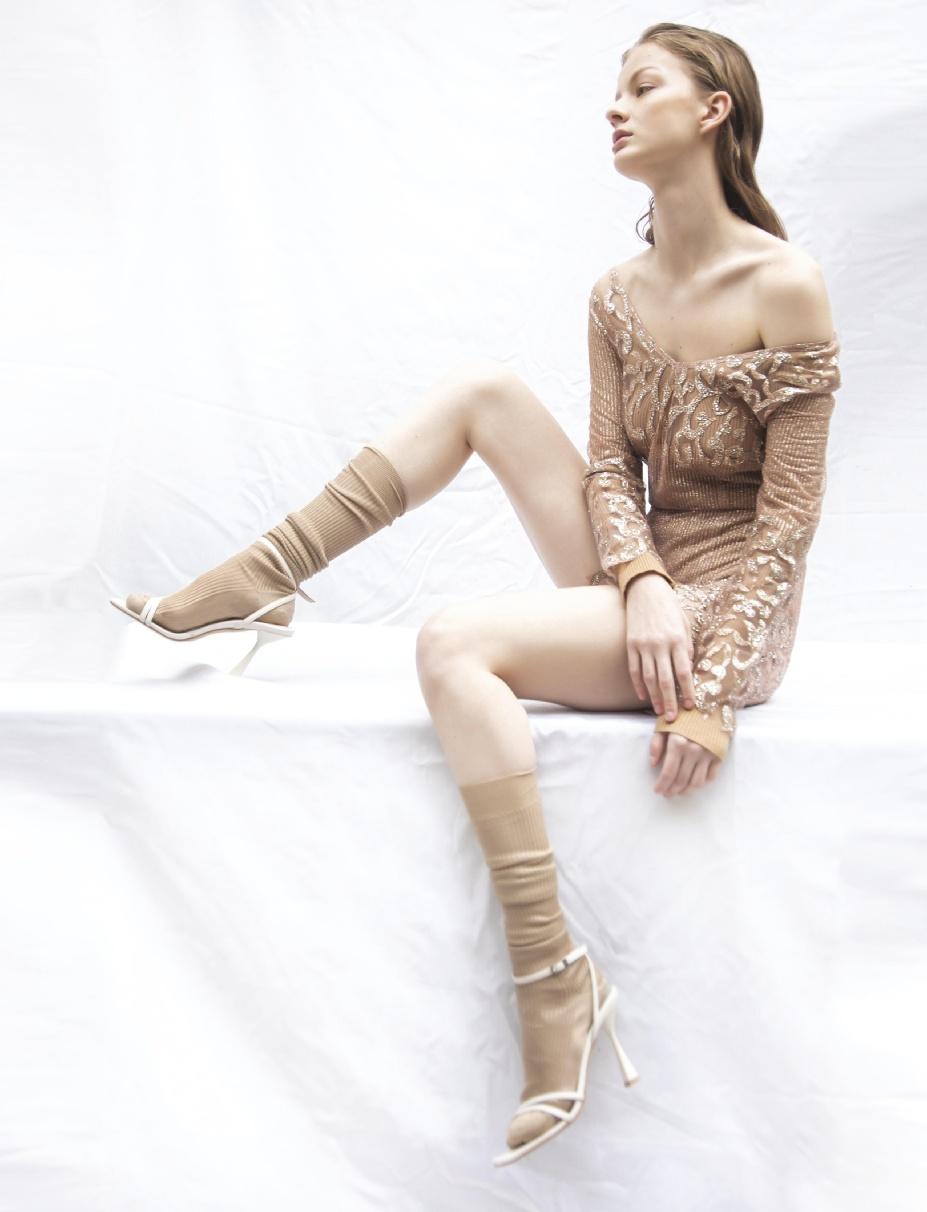
Shoes MARIO VALENTINO
Production
AF

Shoes FABIO RUSCONI

Shoes UGG
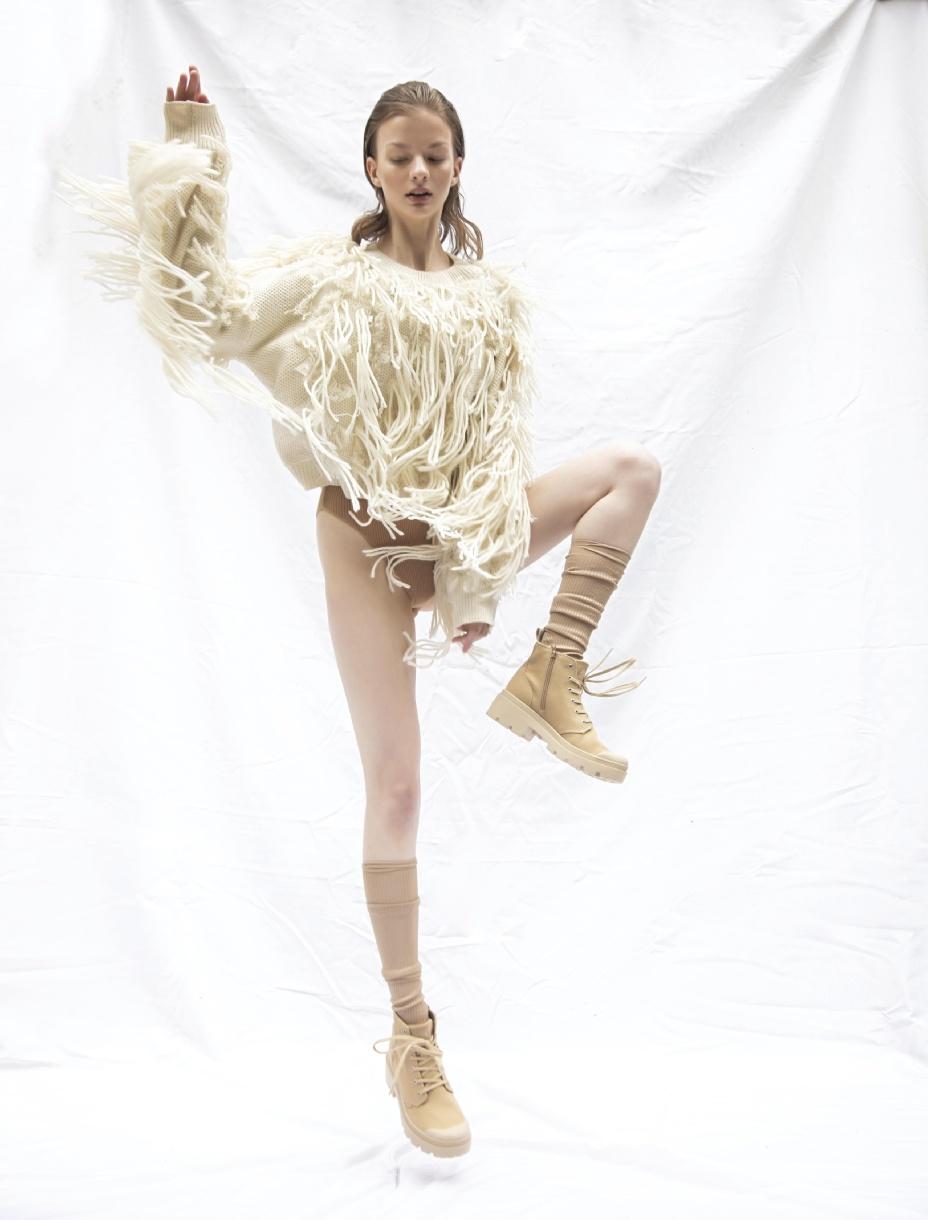
Shoes PALLADIUM
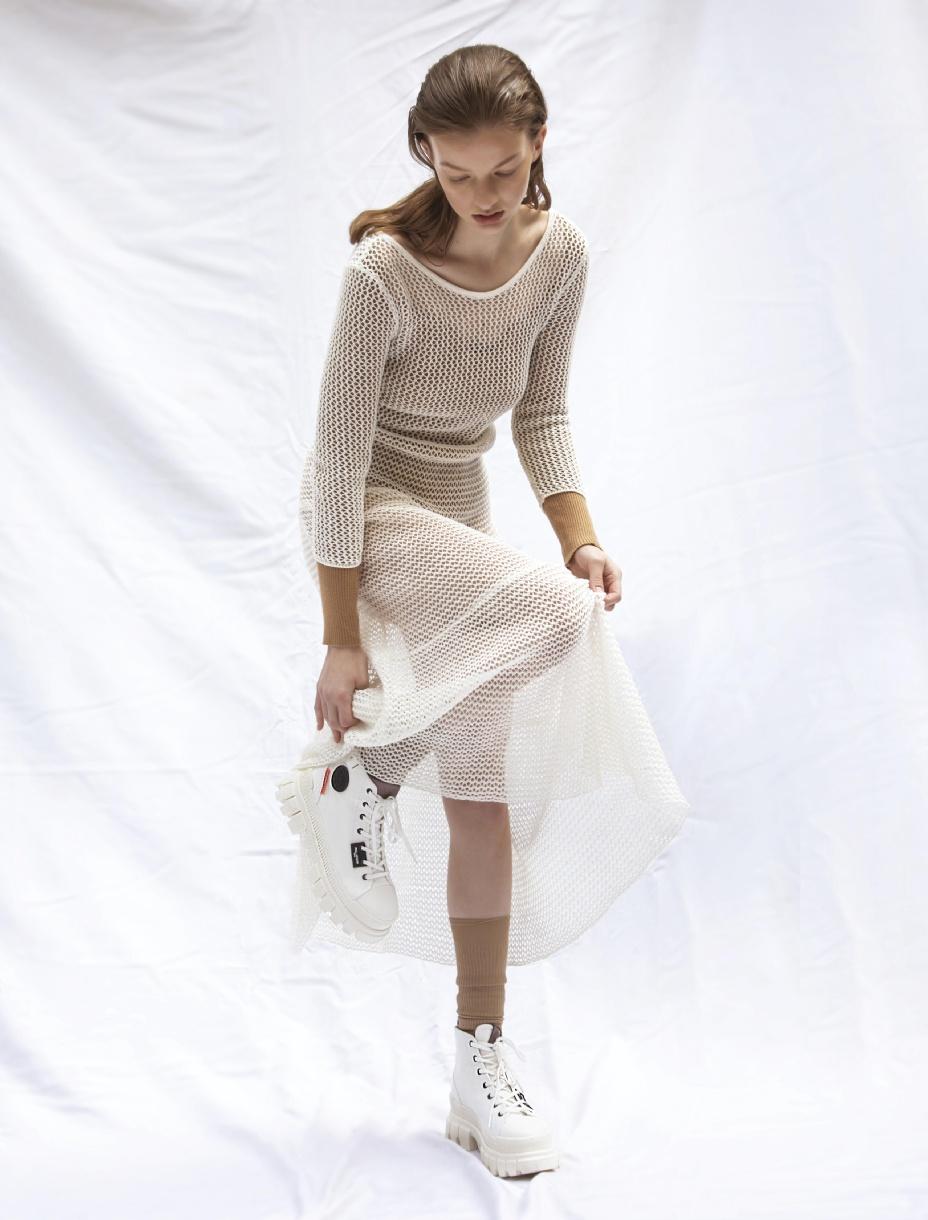
Shoes PALLADIUM

Shoes JEFFREY CAMPBELL
 Shoes VEJA
Make-up and Hair by Stefania D’Argenio @MKS Milano
Model: Olena Monzolevska @TheWolvesModels Milano
Shoes VEJA
Make-up and Hair by Stefania D’Argenio @MKS Milano
Model: Olena Monzolevska @TheWolvesModels Milano

Black mamba AF Production Shoes CATWALK
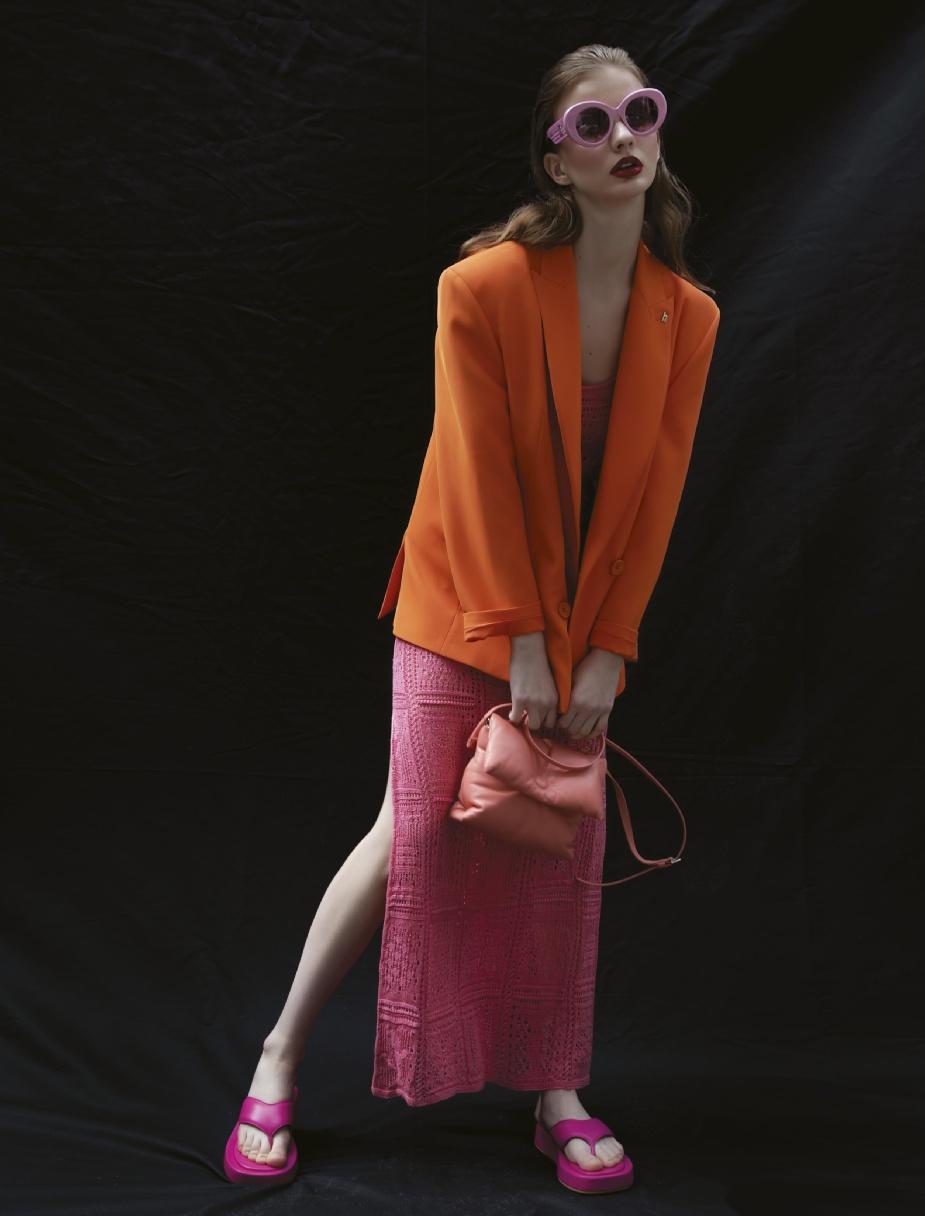
Shoes FABIO RUSCONI

Shoes JEFFREY CAMPBELL
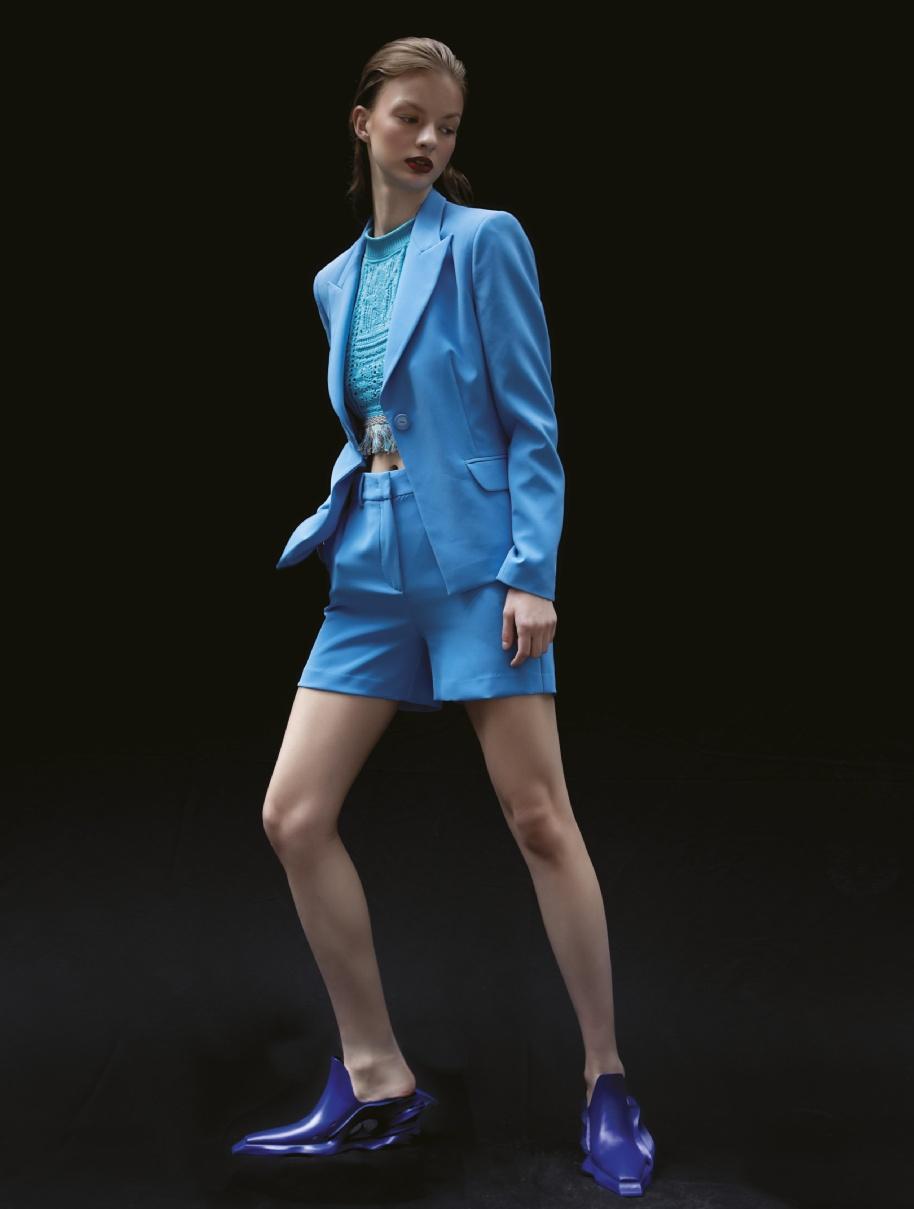
Shoes ANNAKIKI
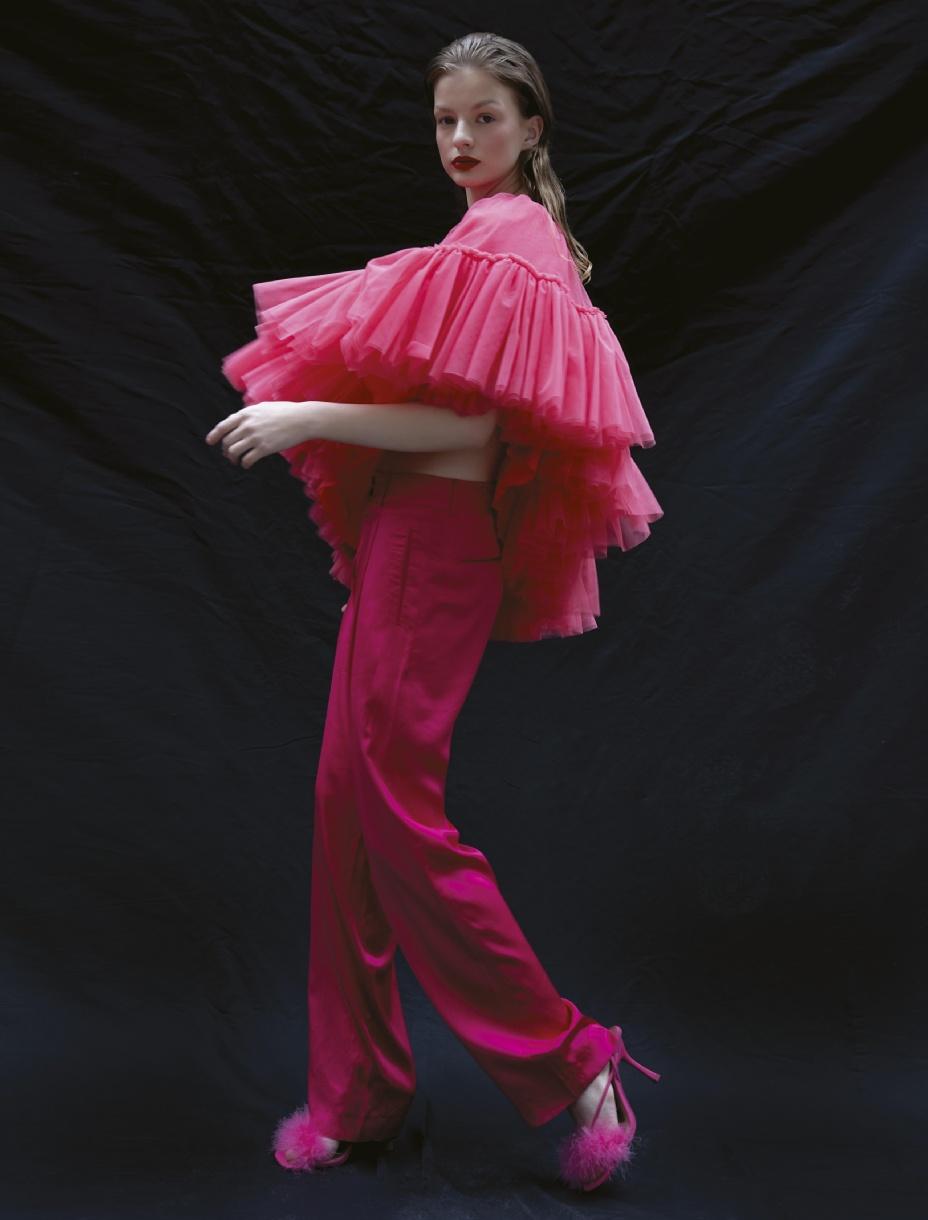
Shoes STEVE MADDEN
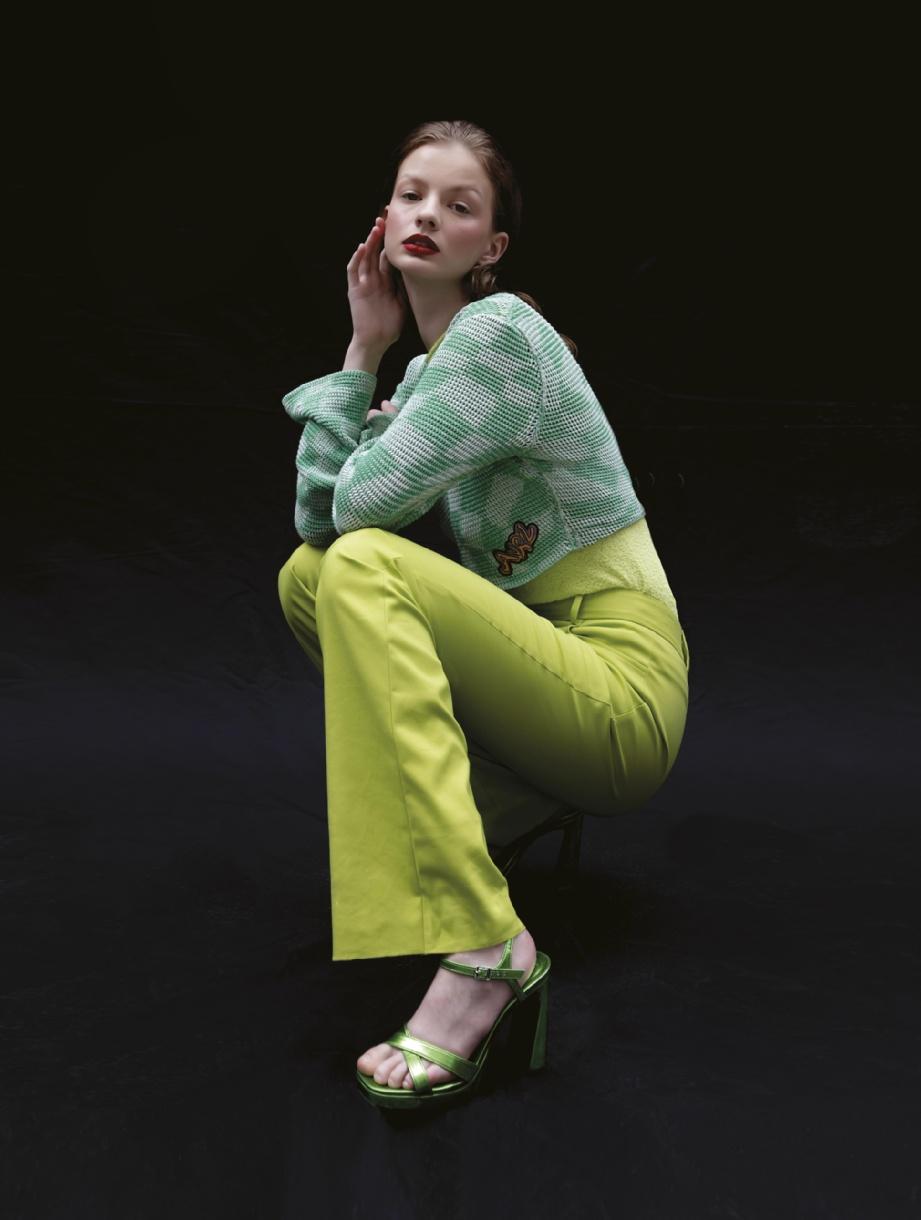
Shoes TONY BIANCO
Shoes VEJA
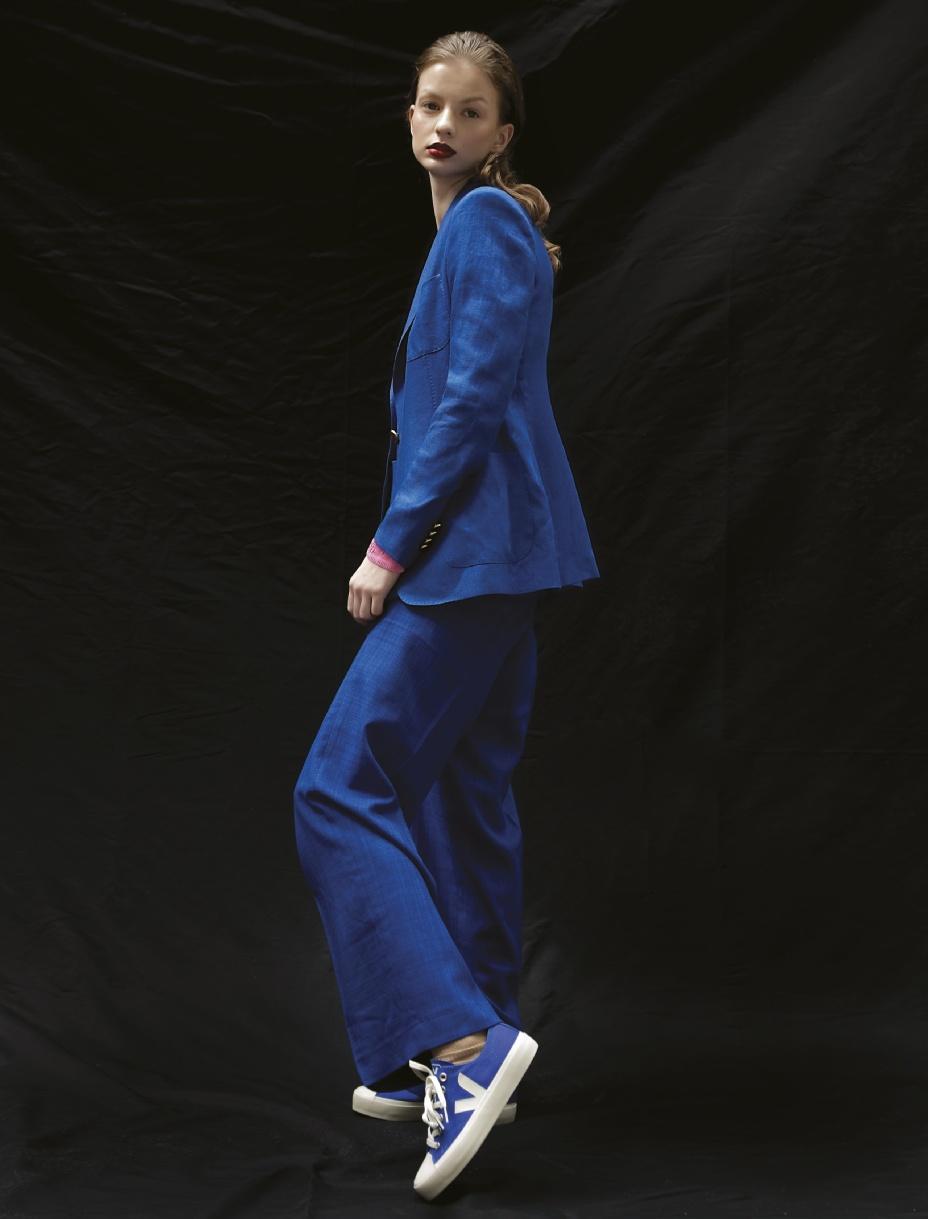 Make-up and Hair by Stefania D’Argenio @MKS Milano
Model: Olena Monzolevska @TheWolvesModels Milano
Make-up and Hair by Stefania D’Argenio @MKS Milano
Model: Olena Monzolevska @TheWolvesModels Milano
Quando moda e arte si fondono

Anno dopo anno, collezione dopo collezione, la moda amplia il suo orizzonte cercando e trovando sempre possibilità inedite di dialogo con le nuove tecnologie, il design, le arti visive. In questa costante ricerca, il ruolo dell’arte resta centrale. Lo dimostrano le continue incursioni, le collaborazioni, le influenze, gli scambi frequenti tra i due campi. Il confine tra moda e arte è stato forzato e superato moltissime volte in passato e in tempi più recenti come sulle passerelle delle ultimissime fashion week. Uno scambio fecondo che coinvolge senza sosta sia l’arte moderna che quella contemporanea.
Artemisia Gentileschi, pittrice del Seicento e prima donna ad avere successo in un campo dominato, fino a quel momento, esclusivamente dagli uomini, è la musa ispiratrice della collezione Autunno/Inverno 2023-24 presentata da Chloé durante la settimana della moda parigina. Tutta la collezione ruota intorno all’emancipazione femminile e alla capacità delle donne di imporre la propria visione. La sfilata, che non a caso si svolge all’interno del Centre Pompidou, diventa idealmente una trasposizione personificata delle opere della Gentileschi, che adorava i vestiti ed era solita rappresentare nei suoi quadri tessuti e gioielli con minuziosa dovizia di particolari. Via libera, dunque, a perle, mantelle, vestiti con le maniche Bishop, abiti sottoveste o con nastri di seta da cortigiane. Altra sfilata, altra ispirazione. È un omaggio alla storia della maison e all’indole sperimentale del suo fondatore, la collezione che Maximilian Davis propone per la collezione Autunno/Inverno 2023-24 di Salvatore Ferragamo. Niente fronzoli e abbellimenti eccessivi. Tutto è giocato sull’eleganza e la preziosità dei materiali: nappa, pelle spazzolata lucida, vernice, vinile, suede, ma anche plastica che viene nobilitata e utilizzata per gioielli design o per realizzare i manici delle nuove borse. Una collezione super grafica, caratterizzata da colori basici e puri: nero, bianco, blu e rosso. Ogni elemento superfluo è bandito come, ad esempio, nei tailleur in cui è eliminata ogni forma di decoro, addirittura in taluni anche i bottoni, per
42 Trends
Uno scambio coinvolgente tra il mondo del fashion e quello dell’arte che reciprocamente oltrepassano i loro confini virtuali per trovare compimento all’interno di un universo condiviso con un richiamo al passato e uno slancio al futuro.
Dior
di Mariacristina Ferraioli
evitare il rischio che possano diventare un elemento di distrazione. L’unico vezzo è rappresentato da una serie di tagli che squarciano il tessuto dell’abito per rivelarne l’essenza. Immediato il riferimento all’opera di Lucio Fontana, tra i massimi artisti del Novecento. Così come Fontana voleva oltrepassare la superficie della tela per svelare al mondo cosa ci fosse oltre, allo stesso modo, i tagli che Davis pratica su abiti total black scoprono lampi di colore rosso brillante. Dal giorno in cui è diventata direttrice creativa di Dior, Maria Grazia Chiuri non ha mai nascosto la sua predilezione per l’arte contemporanea e la volontà di sostenere artiste di ogni latitudine. Non c’è collezione o sfilata che non preveda la partecipazione di un’artista o un omaggio in chiave femminista all’arte del passato. È avvenuto anche durante l’ultima fashion week parigina che ha visto il coinvolgimento dell’artista di origini portoghesi Joana Vasconcelos che ha creato, per il set design della sfilata, un’opera monumentale e coloratissima in onore di Catherine Dior, sorella minore del fondatore della casa di moda e grande studiosa di piante e fiori. Lo spazio è stato invaso da una proliferazione di forme organiche, ispirate dalla natura e realizzate con tessuti di archivio della maison. Composizioni di stoffe, pizzi, ricami e crochet, tra cui "isole" su cui il pubblico è invitato a sedersi, interagiscono con l'architettura. Un omaggio alle origini della casa di moda e alla forza dell'artigianato. Gli artisti non rappresentano solo una fonte di ispirazione, ma a volte collaborano anche alla realizzazione di capi d’abbigliamento. È il caso dell’artista Paola Pivi che ha realizzato una capsule collection in edizione limitata per la prossima Primavera/Estate del marchio Canada Goove. Una collezione coloratissima ispirata alle iconiche sculture a forma di orsetto dell’artista italiana. Il progetto prevedeva una finalità benefica: sostenere l’organizzazione senza scopo di lucro Polar Bears International per la tutela degli orsi polari e del loro habitat naturale.



43 Trends
Dior A/W 2023
Chloé
Year after year, collection after collection, fashion broadens its horizon by always seeking and finding new possibilities for dialogue with new technologies, design and the visual arts. In this constant search, the role of art remains central. This is demonstrated by the constant incursions, collaborations, influences and frequent exchanges between the two fields. The boundary between fashion and art has been forced and crossed many times in the past and in more recent times as on the catwalks of the latest fashion weeks. A fruitful exchange that relentlessly involves both modern and contemporary art. Artemisia Gentileschi, a 17th century painter and the first woman to succeed in a field dominated, until then, exclusively by men, is the muse of the Autumn/Winter 2023-24 collection presented by Chloé during Paris Fashion Week. The entire collection revolves around female emancipation and the ability of women to impose their own vision. The fashion show, which not by chance takes place inside the Centre Pompidou, ideally becomes a personified transposition of the works of Gentileschi, who adored clothes and used to represent fabrics and jewellery
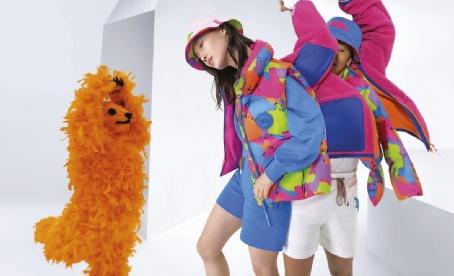
in her paintings with meticulous detail. Green light, therefore, to pearls, capes, dresses with Bishop sleeves, petticoats or silk courtesan ribbons.
Another fashion show, another inspiration. It is a tribute to the history of the maison and the experimental nature of its founder, the collection that Maximilian Davis proposes for Salvatore Ferragamo's Fall/Winter 2023-24 collection. No frills or excessive embellishments. Everything is played on the elegance and preciousness of the materials: nappa leather, glossy brushed leather, patent leather, vinyl, suede, but also plastic that is ennobled and used for designer jewellery or to make the handles of the new bags. A super graphic collection, characterised by basic and pure colours: black, white, blue and red. Every superfluous element is banished as, for example, in the suits in which every form of decoration is eliminated, even buttons in some, to avoid the risk of them becoming a distracting element. The only quirk is represented by a series of cuts that rip through the fabric of the suit to reveal its essence. The reference to the work of Lucio Fontana, one of the greatest artists of the 20th century, is immediate. Just as Fontana wanted to go beyond the surface of the canvas to reveal to the world

44 Trends
Canada Goove
Ferragamo
When fashion and art come together
An enthralling exchange between the worlds of fashion and art that mutually transcend their virtual boundaries to find fulfilment within a shared universe with a call to the past and a thrust to the future.
what lay beyond, in the same way, the cuts that Davis makes on total black dresses reveal flashes of bright red.

From the day she became Dior's creative director, Maria Grazia Chiuri has never hidden her predilection for contemporary art and her desire to support female artists from all latitudes. There is no collection or fashion show that does not include the participation of an artist or a feminist homage to the art of the past. This was also the case during the last Paris fashion week which saw the involvement of Portuguese-born artist Joana Vasconcelos who created a monumental and colourful work for the fashion show set design in honour of Catherine Dior, younger sister of the founder of the fashion house and a great student of plants and flowers. The space was invaded by a proliferation of organic shapes, inspired by nature and made with fabrics from the maison's archives. Compositions of fabrics, lace, embroidery and crochet, including "islands" on which the public is invited to sit, interact with the architecture. A tribute to the origins of the fashion house and the strength of craftsmanship.
Artists are not only a source of inspiration, but sometimes they also collaborate on clothing. This is the case of artist Paola Pivi, who has created a limited edition capsule collection for next Spring/Summer for the Canada Goove brand. A colourful collection inspired by the Italian artist's iconic bear-shaped sculptures. The project had a charitable purpose: to support the non-profit organisation Polar Bears International for the protection of polar bears and their natural habitat.

45 Trends
Canada Goove
Ferragamo
Trasparenza nella filiera della moda e della calzatura
La sostenibilità è un valore che dipende dall’impegno di tutti gli attori della catena di approvvigionamento, soprattutto nella lunga filiera della moda e della calzatura.
Quali sono i maggiori ostacoli alla sostenibilità? Qual è la posizione di brand e consumatori riguardo a questa tematica? Come si pensa di mettere davvero in atto le scelte virtuose affinché avvenga la trasformazione necessaria?
Il tema della sostenibilità, in particolare della trasparenza, continua ad essere al centro dell’interesse nel mondo della moda e della calzatura. Ci sono ancora molti passi da compiere per riuscire ad arrivare a una trasformazione dello stato attuale delle cose verso un loro miglioramento. Ecco perché a Expo Riva Schuh & Gardabags si continua ad affrontare l’argomento con alcuni dei maggiori esponenti del settore che hanno maturato anni di esperienza in questo campo. Durante l’edizione di gennaio 2023 si è tenuto uno speech sul palco di Expo Riva Show proprio sul tema della trasparenza in tutta la filiera. A parlarne sono stati Dave Kelley, fondatore e socio principale di Zefyr Consulting LLC, una società di consulenza che si occupa di trasformare le catene di fornitura di calzature e abbigliamento in modo che siano redditizie, dinamiche e sostenibili, ed Elias Gröndal, CEO e co-fondatore della piattaforma di sourcing findsourcing.com, che si dedica a rendere più semplice il processo che porta dall'idea alla realizzazione del prodotto.
A moderare il talk altri due personaggi di spicco quando si tratta di sourcing e sostenibilità: Ellen Schmidt-Devlin e William Wong, entrambi membri del Comitato Scientifico di Expo Riva Schuh & Gardabags.
I MAGGIORI OSTACOLI ALLA SOSTENIBILITÀ NELL’INDUSTRIA DELLA MODA
Entrambi i relatori, Dave Kelley ed Elias Gröndal, concordano su un primo grande ostacolo alla sostenibilità, ovvero la mancanza di una consapevolezza condivisa su quali materiali possono essere considerati sostenibili e sul concetto stesso di sostenibilità. “Senza queste basi fondamentali quello si rischia, e spesso lo vedo accadere, solo Greenwashing da parte delle aziende”, afferma Kelley. E continua: “La confusione causata dalle mancanza di linee guida comuni e condivise si ripercuote sui consumatori che non sanno cosa considerare veramente sostenibile”. Le istituzioni si stanno adoperando per creare gli stan-
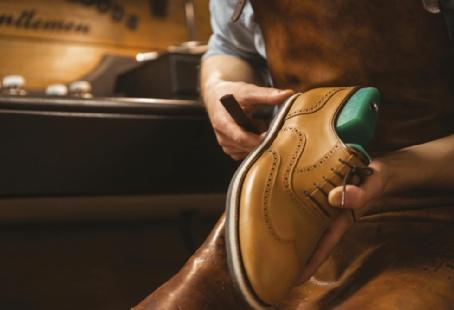
Sustainability 46
dard che ancora mancano e di cui si sente sempre più necessità, norme che la industry possa seguire. La sostenibilità dovrebbe essere parte del piano di business e della proposta di valore di un brand, ma in realtà è un aspetto che risulta ancora difficile implementare, per alcuni più che per altri. Gröndal sostiene che “i brand, soprattutto quelli piccoli, devono fare i conti con i costi, oltre che con la qualità e i tempi di produzione. Si crea, perciò, un triangolo di priorità che va a definire le decisioni prese da brand, buyers e produttori”. Nonostante questi ostacoli, Gröndal ha notato un progressivo avvicinamento dei buyers alle tematiche della sostenibilità, una maggiore attenzione alla ricerca di materiali e prodotti a basso impatto per l’ambiente. Un dato verificato soprattutto attraverso la sua piattaforma, utilizzata proprio per l’approvvigionamento online e per mettersi in contatto con aziende produttrici di calzature. I filtri adoperati per le ricerche hanno mostrato una spinta verso partner commerciali più green ed etici.
Interviene anche William Wong portando una prospettiva sul mercato asiatico: “I retailers cercano e sono in attesa di nuove idee e di trovare prodotti più sostenibili o dal minor impatto per l’ambiente. Ma molte aziende produttrici sono ancora riluttanti ad adottare i nuovi materiali perché li ritengono troppo costosi. Inoltre, l’ostacolo più grande, in cui si imbatte anche il mercato asiatico, è trovare la giusta via per verificare davvero la sostenibilità dei prodotti e dei processi”.

Un altro grande problema riguarda la trasparenza: c’è riluttanza a condividere modalità, fornitori e materiali utilizzati.
IL COMPORTAMENTO DI CONSUMATORI E BRAND NEI CONFRONTI DELLA SOSTENIBILITÀ
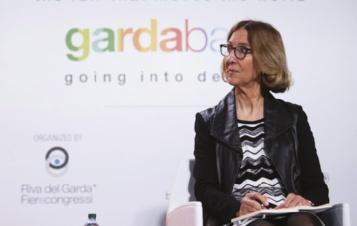
Un concetto emerso durante la discussione e che ha trovato i relatori in accordo è la responsabilità dei con-
sumatori di guidare la domanda di prodotti sostenibili. Più vengono scelti e acquistati e più le aziende prenderanno in considerazione la svolta green per rispondere a questa esigenza.
Afferma Gröndal: “C’è più attenzione oggi ai processi di produzione e al ciclo di vita del prodotto, all’impatto che si ottiene gettando via o riciclando. I brand iniziano a condurre analisi per rilevare quali siano le fasi della catena di produzione maggiormente impattanti per l’ambiente. Per esempio, pare che l’impronta di carbonio sia maggiore a monte della supply chain rispetto alle fasi successive all’acquisto e all’utilizzo. È davvero importante sviluppare questo tipo di consapevolezze ed educare le persone su come agire e come guidare i miglioramenti in modo che si producano veri benefici per l’industria e per il mondo”. Ma, aggiunge Kelley, “il potere in questo momento è nelle mani soprattutto dei grandi brand che dispongono delle risorse economiche per intraprendere percorsi sostenibili, tracciare una via virtuosa e dare l’esempio anche agli altri”. Tra i consumatori, sono le nuove generazioni quelle che esprimono maggiore interesse nei confronti del benessere dell’ambiente e della sostenibilità. Vanno alla ricerca di prodotti e di brand in cui possono identificarsi e con cui condividere i valori.
L’IMPORTANZA DELLA TRACCIABILITÀ AI FINI DI UNA PIÙ COMPLETA SOSTENIBILITÀ
Non sono solo i brand ad avere delle responsabilità, ma tutti coloro che fanno parte e contribuiscono alla catena di approvvigionamento. Entrano così in campo le sfide legate ai temi di tracciabilità e trasparenza legate alle informazioni limitate rispetto a materiali, prodotti e metodi di lavorazione.
“Per raggiungere trasparenza e tracciabilità è necessario dare vita a una catena di custodia”, sostiene Kelley.
Sustainability 47
William Wong
Ellen Schmidt-Devlin
“Qualcuno deve assumersi la responsabilità di tracciare i materiali, qualcun altro deve detenere il controllo sulle spedizioni e sui processi di lavorazione di quei materiali, e così, passo dopo passo, fino alla messa in commercio e all’acquisto del prodotto”.
Kelley continua affermando che le aziende devono rendersi conto di essere responsabili sia della propria parte del processo, così come del processo nel suo complesso “perché è dalle azioni positive di ognuno che si ottiene un risultato finale di successo complessivo”. Affinché si realizzino progetti sostenibili è necessaria una trasformazione a 360 gradi capace di coinvolgere tutta la catena del valore e tutti i reparti all’interno delle aziende: quello finanziario, della produzione, del marketing, delle vendite e così via.
Gröndal interviene aggiungendo quanto sia necessario creare un network che consenta alle diverse realtà di non lavorare più in maniera isolata ma collaborativa. Emerge ancora una volta la necessità di sinergie e di condivisione al fine di raggiungere uno stesso obiettivo. A chiudere e integrare il discorso ci pensa William Wong, che fa luce sulla condizione reale e attuale del mercato e delle industrie: “Le aziende dovrebbero riuscire ad andare oltre le scelte prese con l’intento di contenere i costi e focalizzarsi sul prendere decisioni sostenibili. Siamo, però, in un momento difficile per l’industria, le prospettive dell’economia non sono particolarmente ottimistiche ed emerge l’esigenza di trovare un compromesso tra questioni finanziarie e di qualità”.
IL RUOLO DELLA MOTIVAZIONE NEL VIAGGIO VERSO IL CAMBIAMENTO
È Ellen Schmidt-Devlin a introdurre il tema della motivazione come uno dei motori che muove le persone a impegnarsi per cambiare lo stato delle cose. Quindi, quali potrebbero essere le motivazioni delle aziende a voler
diventare più sostenibili? Secondo Kelley ci sono sicuramente la consapevolezza che sia la cosa giusta da fare - mettere sul mercato prodotti che rappresentino valori positivi e di cui andare fieri - e l’incontro con i desideri dei consumatori. “Ho letto di recente un articolo del World Economic Forum” - condivide Kelley - “in cui si diceva che il 75% dei consumatori della generazione Z sono disposti a pagare di più per prodotti che credono essere sostenibili e a comprare da brand in cui ripongono fiducia”. Un’altra motivazione sono le leggi promulgate in Europa e negli Stati Uniti che stanno cambiando lo stato dei fatti, costringendo le aziende a operare dei cambiamenti per risultare a norma e rispettare i requisiti necessari per percepire i fondi destinati alla sostenibilità. Sull’argomento interviene anche Gröndal: “La sostenibilità è anche un modo per essere rilevanti sul mercato, per tornare a guidarlo senza essere considerati come un problema da risolvere”. La sostenibilità è un valore e deve emergere come tale per favorire la crescita degli acquisti, esattamente come si sceglie di acquistare da un marchio di lusso per la sua qualità e lo status che esprime. I brand devono costruire la propria immagine e trovare il proprio posizionamento nella mente dei consumatori.
Grazie alla trasparenza nella catena di approvvigionamento sarà più semplice capire quali sono i prodotti che derivano da materie prime e processi sostenibili, e di conseguenza si potrà dare il via a un vero circolo virtuoso che coinvolga tutti.
Transparency in the fashion and footwear supply chain

Sustainability is a value that depends on the commitment of all actors in the supply chain, especially in the long fashion and footwear supply chain. What are the major obstacles to sustainability?
Where do brands and consumers stand on this issue? How are they really implementing the virtuous choices to bring about the necessary transformation?
Sustainability 48
The topic of sustainability, in particular transparency, continues to be the focus of interest in the world of fashion and footwear. There are still many steps to be taken to succeed in transforming the current state of things towards their improvement. This is why at Expo Riva Schuh & Gardabags we continue to address the topic with some of the industry's leading exponents who have gained years of experience in this field. During the January 2023 edition, a speech was held on the Expo Riva Show stage precisely on the topic of transparency in the entire supply chain. Speaking on the subject were Dave Kelley, founder and principal partner of Zefyr Consulting LLC, a consulting firm that focuses on transforming footwear and apparel supply chains so that they are profitable, dynamic and sustainable, and Elias Gröndal, CEO and co-founder of the sourcing platform findsourcing.com, which is dedicated to making the process from idea to product realisation easier. Moderating the talk were two other leading figures when it comes to sourcing and sustainability: Ellen Schmidt-Devlin and William Wong, both members of the Scientific Committee of Expo Riva Schuh & Gardabags.
MAIN HINDERS TO SUSTAINABILITY IN THE FASHION INDUSTRY
Both speakers, Dave Kelley and Elias Gröndal, agree on a first major obstacle to sustainability, namely the lack of a shared awareness of what materials can be considered sustainable and the concept of sustainability itself. "Without these basic foundations we risk, and I often see this happening, just greenwashing by companies," says Kelley. He continues: "The confusion caused by the lack of common, shared guidelines affects consumers who do not know what to consider truly sustainable. Institutions are working to create the standards that are still missing and increasingly needed, standards that the industry can follow. Sustainability should be part of a brand's business plan and value proposition, but in reality it is something that is still difficult to implement, for some more than others. Gröndal argues that 'brands, especially small ones, have to deal with costs as well as quality and production time. Therefore, a triangle of priorities is created that defines the decisions made by brands, buyers and producers'. In spite of these obstacles, Gröndal has noticed a progressive approach of buyers to sustainability issues, an increased focus on the search for materials and products with a low impact on the environment. A fact verified above all through its platform, used precisely for online sourcing and contacting footwear manufacturers. The filters used for the searches showed a push towards greener and more ethical business partners.
William Wong also intervenes, bringing a perspective on the
Asian market: "Retailers are looking and waiting for new ideas and to find products that are more sustainable or have less impact on the environment. But many manufacturers are still reluctant to adopt the new materials because they consider them too expensive. Moreover, the biggest hurdle, which the Asian market also runs into, is finding the right way to really check the sustainability of products and processes'.
Another big problem concerns transparency: there is reluctance to share how, which suppliers and materials are used.
CONSUMER AND BRAND BEHAVIOUR TOWARDS SUSTAINABILITY

One concept that emerged during the discussion and found the speakers in agreement was the responsibility of consumers to drive demand for sustainable products. The more they are chosen and purchased, the more companies will consider the green turn to meet this demand.
Says Gröndal: 'There is more attention today to production processes and product life cycle, to the impact of throwing away or recycling. Brands are starting to conduct analyses to find out which stages of the production chain have the greatest impact on the environment. For example, it appears that the carbon footprint is greater upstream in the supply chain than in the stages after purchase and use. It is really important to develop this kind of awareness and educate people on how to act and how to drive improvements so that real benefits for the industry and the world are produced".
Sustainability 49
But, adds Kelley, "the power right now is mainly in the hands of the big brands that have the economic resources to embark on sustainable paths, chart a virtuous course and set an example for others to follow". Among consumers, it is the younger generation that expresses the greatest interest in environmental well-being and sustainability. They are looking for products and brands with which they can identify and with which they can share values.
THE IMPORTANCE OF TRACEABILITY FOR A MORE COMPLETE SUSTAINABILITY
It is not only brands that have responsibilities, but all those who are part of and contribute to the supply chain. Thus, the challenges of traceability and transparency related to limited information about materials, products and processing methods come into play.

"To achieve transparency and traceability, a chain of custody has to be established," Kelley argues. "Someone has to take responsibility for tracking the materials, someone else has to have control over the shipping and processing of those materials, and so, step by step, until the product is put on the market and purchased."
Kelley goes on to say that companies must realise that they are responsible both for their own part of the process, as well as for the process as a whole "because it is from the positive actions of everyone that an overall successful end result is achieved". For sustainable projects to be realised, a 360-degree transformation is required that involves the entire value chain and all departments within companies: finance, production, marketing, sales and so on.
Gröndal intervenes, adding how necessary it is to create a network that allows the different realities to no longer work in isolation but collaboratively. Once again, the need for synergies and sharing in order to achieve the same goal emerges. Closing and supplementing the discussion is William Wong, who sheds light on the real and current state of the market and industries: 'Companies should be able to move beyond choices made with the intention of containing costs and focus on making sustainable decisions. We are, however, in a difficult time for the industry, the outlook for the economy is not particularly optimistic, and there is a need to find a compromise between financial and quality issues'.
THE ROLE OF MOTIVATION IN THE JOURNEY TOWARDS CHANGE
It is Ellen Schmidt-Devlin who introduces the topic of motivation as one of the drivers that moves people to strive to change the state of things. So, what might be the motivation for companies to want to become more sustainable? According to Kelley, there is definitely the knowledge that it is the right thing to do - to put products on the market that represent positive values and that they can be proud of - and meeting consumer desires. "I recently read an article by the World Economic Forum," Kelley shares, "which said that 75 per cent of Generation Z consumers are willing to pay more for products they believe are sustainable and buy from brands they trust." Another motivation is the laws enacted in Europe and the United States that are changing the status quo, forcing companies to make changes in order to be compliant and meet the requirements necessary to receive sustainability funding.
Gröndal also intervenes on the subject: 'Sustainability is also a way to be relevant in the market, to lead it again without being seen as a problem to be solved. Sustainability is a value and has to emerge as such in order to encourage more purchases, just as one chooses to buy from a luxury brand for its quality and the status it expresses. Brands must build their image and find their positioning in the minds of consumers. With transparency in the supply chain, it will be easier to understand which products are derived from sustainable raw materials and processes, and as a result a true virtuous circle involving everyone can be started.
Sustainability 50
Cresce in Italia l’eCommerce B2B
Secondo l’edizione 2023 dell’Osservatorio B2B Digital Commerce di Netcomm, il 61% delle aziende italiane usa l’online b2b, quasi il 12% in più rispetto al 2021. Nei prossimi tre anni, la quota di fatturato dalle vendite online B2B passerà dall’11% al 25%.
La IV edizione dell’Osservatorio B2B Digital Commerce di Netcomm, presentata lo scorso marzo a Milano, evidenzia la crescita esponenziale dell’online in chiave B2B: il 61% delle aziende italiane ha attività eCommerce B2B con proprio sito o su marketplace, l’11,7% in più rispetto a quanto rilevato nel 2021. Tra queste, prevalgono sempre di più le imprese focalizzate sull’utilizzo di marketplace B2Bcostituiscono il 34%, con una crescita del 10% rispetto al 2021 -, non solo per la vendita, ma anche in chiave di lead generation. Tra il 39% che non ha ancora adottato soluzioni di eCommerce B2B, il 13% intende svilupparle nei prossimi 12 mesi, una percentuale che risulta raddoppiata rispetto al 2021 e che dimostra il crescente interesse per gli strumenti di vendita online, soprattutto presso le aziende di maggiori dimensioni. La quota di fatturato dalle vendite digitali in ambito B2B si attesta all’11%, ma è prevista una crescita di 14 punti percentuali nel giro di tre anni.
“Nel post-pandemia, la possibilità di fidelizzare il cliente attraverso il miglioramento e l’innovazione del servizio offerto è diventata la ragione principale che spinge le aziende alla digitalizzazione delle transazioni commerciali B2B. Oggi, infatti, è ritenuta determinante dal 39% delle imprese e, con una cresciuta di ben 20 punti percentuali rispetto al 2021, ha superato persino le ragioni legate all’ampiamento del mercato verso nuove aree geografiche”, ha spiegato Roberto Liscia, Presidente di Netcomm. “Questo dimostra una maggiore maturità nel percorso di crescita del commercio B2B, che si trova oggi in una fase di maggiore attenzione rispetto alle diverse opportunità legate all’approdo online e all’utilizzo dei molteplici servizi digitali. Malgrado alcuni freni legati principalmente alla percezione di un’elevata complessità del progetto e ai timori di uno scarso ritorno in termini di vantaggi, prevediamo comunque che i ritmi di crescita siano ancora più serrati nei prossimi anni e che la quota di fatturato dalle vendite digitali raggiunga il 25% entro la fine del 2025”.
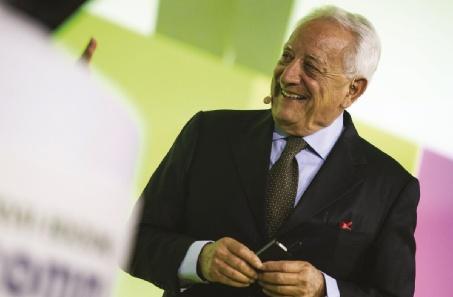
51 Market
Roberto Liscia
Prevalgono gli “eCommerce oriented”
Le aziende che hanno già attivato in modo strutturato processi e servizi per i canali digitali sono il 27% e possono essere definite “Heavy Digital”, in quanto il loro processo di digitalizzazione ha già toccato tutte le fasi canoniche, con particolare attenzione al pre-vendita orientato al marketing, alle vendite tramite sito diretto e al postvendita.
La quota maggiore, il 34%, è però costituita dai cosiddetti “eCommerce oriented”, ossia quelle aziende che si sono focalizzate sull’eCommerce e su di esso hanno fondato le loro strategie di vendita, sia ricorrendo a un sito diretto (8 su 10) sia attraverso un marketplace (3 su 10). Tra queste, una su 3 è entrata nell’universo delle vendite online B2B con l’inizio della pandemia, spinta principalmente dalla volontà di ampliare il proprio mercato in nuove aree geografiche e migliorare il servizio offerto ai clienti.
I ‘no digital’
Al di fuori della quota di aziende che fa uso di soluzioni eCommerce B2B (il 61%, in totale), è presente una piccola porzione di imprese (il 14%) che si trovano ancora in uno stato di sviluppo embrionale del percorso di adozione degli strumenti digitali. I cosiddetti “Light Digital” si concentrano solo su fasi legate al pre-vendita e/o al postvendita, ma sono propensi alla digitalizzazione e credono che possa rappresentare un’opportunità di sviluppo in ottica futura. Infatti, tra questi, 1 su 2 dichiara che nel corso del prossimo anno investirà in servizi di formazione e consulenza a supporto del processo di digitalizzazione e 4 su 10 sullo sviluppo del proprio eCommerce diretto tramite sito.
Rimane considerevole il numero di aziende che non hanno ancora attivato il processo di digitalizzazione in nessuna fase: esse costituiscono il 25%, che possiamo denominare come “No Digital” e che individua tra i principali ostacoli la complessità del progetto, unita alla mancanza di competenze interne e all’entità degli investimenti richiesti, oltre a difficoltà legate agli aspetti logistici e a timori di conflittualità con altri canali di vendita.
I servizi più utilizzati: sito eCommerce, marketing e post-vendita
La vendita online tramite il proprio sito eCommerce B2B è l’attività digitale più diffusa (il 40% delle aziende intervistate ne fa uso), seguita da servizi di marketing e postvendita, dove gli “Heavy Digital” sono campioni indiscussi. I Light Digital si dimostrano invece molto focalizzati
sulla fase di pre-vendita finalizzata alla lead generation, attivata dal 60% del cluster e in crescita rispetto al 2021.
Gli investimenti per la digitalizzazione
Per affrontare il processo di digitalizzazione le aziende hanno dovuto intraprendere iniziative di riorganizzazione interna e/o investimenti. Nel 53% dei casi, infatti, sono state sviluppate competenze del personale già impiegato, mentre per il 39% gli incarichi sono stati demandati a professionisti e aziende esterne - principalmente, web agency e aziende ICT. Solo il 26% delle aziende ha assunto personale dedicato alle nuove attività B2B con i canali digitali. Nei prossimi 12 mesi, gli investimenti si concentreranno primariamente su servizi di formazione e consulenza, ma anche sullo sviluppo di contenuti di digital marketing, entrambe voci in forte aumento rispetto al 2021. Inoltre, resterà elevata l’intenzione a investire nel proprio eCommerce diretto, soprattutto da parte di quelle aziende che lo hanno già adottato e, alla luce del ritorno positivo di cui hanno beneficiato, desiderano rafforzare questo strumento.
According to the 2023 edition of Netcomm's B2B Digital Commerce Observatory, 61% of Italian companies use online b2b, almost 12% more than in 2021. Over the next three years, the share of turnover from online B2B sales will rise from 11% to 25%.
The 4th edition of Netcomm's B2B Digital Commerce Observatory, presented last March in Milan, highlights the exponential growth of online B2B: 61% of Italian companies have B2B eCommerce activities with their own site or on marketplaces, 11.7% more than in 2021. Among these, companies focused on the use of B2B marketplaces are increasingly prevalent - they make up 34%, a 10% increase over 2021 - not only for sales, but also for lead generation. Among the 39% that have not yet adopted B2B eCommerce solutions, 13% intend to develop them in the next 12 months, a percentage that has doubled since 2021 and demonstrates the growing interest in online sales to-
52 Market B2BeCommercegrowsinItaly
ols, especially among larger companies. The share of turnover from digital sales in B2B stands at 11%, but is expected to grow by 14 percentage points within three years.
"In the post-pandemic, the possibility of customer loyalty through service improvement and innovation has become the main reason for companies to digitise their B2B business transactions. Today, in fact, it is considered decisive by 39% of companies and, with an increase of no less than 20 percentage points compared to 2021, it has even surpassed the reasons linked to the expansion of the market towards new geographical areas," explained Roberto Liscia, President of Netcomm. "This demonstrates a greater maturity in the growth path of B2B commerce, which is now in a phase of greater attention with respect to the various opportunities linked to going online and the use of multiple digital services. Despite some brakes mainly related to the perceived high complexity of the project and fears of a low return in terms of benefits, we nevertheless expect the pace of growth to be even faster in the coming years and the share of turnover from digital sales to reach 25 per cent by the end of 2025".
‘eCommerce oriented' prevails
The companies that have already activated digital channel processes and services in a structured way are 27% and can be defined as 'Heavy Digital', as their digitisation process has already touched all canonical stages, with a focus on marketing-oriented pre-sales, direct site sales and after-sales.

The largest share, 34%, however, is made up of the so-called 'eCommerce oriented', i.e. those companies that have focused on eCommerce and have based their sales strategies on it, either through a direct site (8 out of 10) or through a marketplace (3 out of 10). Of these, one in 3 entered the B2B online sales
universe with the onset of the pandemic, driven mainly by the desire to expand their market into new geographic areas and improve their customer service.
The 'non-digital'
Outside the share of companies that make use of B2B eCommerce solutions (61%, in total), there is a small portion of companies (14%) that are still in an embryonic state of development on the path to adopting digital tools. The so-called 'Light Digital' only focus on pre-sales and/or post-sales phases, but they are keen on digitisation and believe it can represent a development opportunity in the future. In fact, among them, 1 in 2 say that they will invest in training and consultancy services over the next year to support the digitisation process and 4 in 10 on the development of their own direct eCommerce via a website. The number of companies that have not yet activated the digitisation process at any stage remains considerable: they make up 25%, which we can refer to as 'No Digital' and which identify among the main obstacles the complexity of the project, combined with the lack of lining skills and the amount of investment required, as well as difficulties related to logistical aspects and fears of conflict with other sales channels.
The most used services: eCommerce site, marketing and after-sales
Online sales via their B2B eCommerce site is the most widespread digital activity (40% of the companies surveyed use it), followed by marketing and after-sales services, where the 'Heavy Digital' are the undisputed champions. Light Digital, on the other hand, prove to be very focused on the pre-sales phase aimed at lead generation, which is activated by 60% of the cluster and is growing compared to 2021.
Investments for digitalisation
To cope with the digitisation process, companies had to undertake lining reorganisation initiatives and/or investments. In 53% of cases, the skills of already employed staff were developed, while for 39% the tasks were delegated to external professionals and companies - mainly web agencies and ICT companies. Only 26% of the companies hired staff dedicated to new B2B activities with digital channels.
In the next 12 months, investments will focus primarily on training and consultancy services, but also on the development of digital marketing content, both of which will increase significantly compared to 2021. Furthermore, the intention to invest in direct eCommerce will remain high, especially by those companies that have already adopted it and, in light of the positive return they have enjoyed, wish to strengthen this tool.
53 Market
Sustainable Origin, il Brasile ha un piano per la sostenibilità
miglior contributo sociale e un'economia intelligente nei processi produttivi. Importanti partner (Bureau Veritas, SGS, ABNT, SENAI, Intertek, DNV) sono accreditati per verificare e attestare l'esecuzione di tutti gli indicatori di certificazione. Attualmente sono 90 le aziende brasiliane coinvolte nel progetto, delle quali circa 30 già certificate. Il Sustainable Origin rappresenta una grande opportunità per le aziende di allineare i processi produttivi a degli indicatori riconosciuti a livello internazionale, ampliando le opportunità nel mercato dell'export e guidando la crescita sostenibile dell'intera filiera produttiva.
L'Origine Sostenibile (Sustainable Origin) è tra le poche, se non l'unica, certificazione ESG e di sostenibilità al mondo rivolta alle aziende della filiera calzaturiera. Basata sulle migliori pratiche di sostenibilità, segue cinque indicatori dimensionali: economico, ambientale, sociale, culturale e di gestione della sostenibilità ed è promossa dalle associazioni di categoria brasiliane Abicalcados (industria della calzatura) e Assintecal (industria dei componenti). Si tratta di una delle più complete certificazioni di sostenibilità ed ESG rivolta alle aziende della filiera calzaturiera. Più che una certificazione, è una guida per le aziende brasiliane basata su ciò che è più aggiornato nelle pratiche di sostenibilità, in linea con altri importanti riferimenti a livello globale. Questa guida si basa su 104 indicatori, riguardanti 5 ambiti, che attestano come le aziende generino un minore impatto ambientale, un

Le fasi iniziali del programma sono state formulate con il supporto di ricercatori ed esperti dell'Università di San Paolo (USP) che, attraverso il lavoro del Laboratorio di Sostenibilità della Scuola Politecnica dell'USP (LASSU), hanno sviluppato una proposta di progetto con indicatori per orientare la valutazione della sostenibilità nel settore calzaturiero. Assintecal, in qualità di ente rappresentativo delle aziende di componenti dell'industria calzaturiera, ha giocato un ruolo primario nello stimolare la costruzione pratica di un programma che, nel 2013, è diventato un progetto pilota da applicare nella pratica di mercato e testarne il funzionamento e la fattibilità con le aziende di calzature e componenti.
Ricordiamo che il Brasile è il quinto paese produttore di calzature al mondo, con oltre 860 milioni di paia di scarpe prodotte ogni anno, esportate in oltre 170 paesi nel mondo, per un valore che supera i 6 miliardi di dollari, e 280 mila persone direttamente occupate. Ma non solo: il Brasile può contare su un’esperienza di oltre 130 anni nella produzione di calzature (la prima fabbrica è datata 1888), e 5600 sono aziende attualmente presenti sul territorio. Per quanto riguarda il mercato interno, il Brasile è il quarto consumatore mondiale di calzature e circa l’85% della produzione del Paese è destinata proprio ai propri cittadini. La catena di fornitura è tra le più organizzate al mondo e vede protagoniste circa 10mila aziende, che impiegano circa 355mila persone direttamente. Ma è anche una catena sostenibile. Il Brasile ha le più basse emissioni
54 Sustainability
Più che una certificazione, è un programma che guida l'evoluzione delle aziende brasiliane di calzature e componenti e, di conseguenza, dell'intera filiera produttiva verso uno sviluppo sostenibile, che fa bene all’uomo e al pianeta.
di CO2 (KG/PIL) rispetto ai maggiori produttori di scarpe nel mondo, nonché il più alto livello di energie rinnovabili sul consumo energetico (solare, eolica, energia idroelettrica e altre fonti di energia rinnovabili) rispetto ai maggiori produttori di scarpe del mondo. Inoltre, più di 450 milioni di dollari all'anno vengono investiti in attività innovative, il 47% delle quali riguardano innovazioni ambientali.

Sustainable Origin, Brazil has a plan for sustainability
Sustainable Origin represents a great opportunity for companies to align production processes with internationally recognised indicators, expanding opportunities in the export market and driving the sustainable growth of the entire production chain.
Sustainable Origin is among the few, if not the only, ESG and sustainability certification in the world aimed at companies in the footwear supply chain. Based on sustainability best practices, it follows five dimensional indicators: economic, environmental, social, cultural and sustainability management and is promoted by the Brazilian trade associations Abicalcados (footwear industry) and Assintecal (components industry). It is one of the most comprehensive sustainability and ESG certifications for companies in the footwear supply chain. More than a certification, it is a guide for Brazilian companies based on what is most up-to-date in sustainability practices, in line with other important global references. This guide is based on 104 indicators, covering five areas, which show how companies generate a lower environmental impact, a better social contribution and an intelligent economy in their production processes. Important partners (Bureau Veritas, SGS, ABNT, SENAI, Intertek, DNV) are accredited to verify and certify the performance of all certification indicators. There are currently 90 Brazilian companies involved in the project, of which about 30 are already certified.
The initial phases of the programme were formulated with the support of researchers and experts from the University of São Paulo (USP) who, through the work of the USP Polytechnic School of Sustainability Laboratory (LASSU), developed a project proposal with indicators to guide the assessment of sustainability in the footwear sector. Assintecal, as the representative body of component companies in the footwear industry, played a primary role in stimulating the practical construction of a programme that, in 2013, became a pilot project to be applied in market practice and test its operation and feasibility with footwear and component companies. We should point out that Brazil is the fifth largest footwear producing country in the world, with more than 860 million pairs of shoes produced every year, exported to over 170 countries worldwide, worth more than 6 billion dollars, and 280 thousand people directly employed. But that's not all: Brazil can count on over 130 years' experience in footwear production (the first factory dates back to 1888), and 5600 companies are currently present in the country. As far as the lining market is concerned, Brazil is the fourth largest consumer of footwear in the world and around 85% of the country's production is destined for its own citizens. The supply chain is among the most organised in the world and involves around 10,000 companies, employing around 355,000 people directly. But it is also a sustainable chain. Brazil has the lowest CO2 emissions (KG/GDP) compared to the largest shoe manufacturers in the world, as well as the highest level of renewable energy consumption (solar, wind, hydro and other renewable energy sources) compared to the largest shoe manufacturers in the world. In addition, more than USD 450 million a year is invested in innovative activities, 47% of which concern environmental innovations.
55 Sustainability
More than a certification, it is a programme that guides the evolution of Brazilian footwear and component companies and, consequently, the entire production chain towards sustainable development that is good for people and good for the planet.
Netcomm: la competitività
dalla logistica
Secondo i dati diffusi durante la settima edizione di Netcomm Focus Logistics & Packaging dal titolo “La nuova logistica & packaging sostenibili per l’e-commerce e il New Retail”. È la logistica dell’e-commerce a costituire “la punta di diamante del comparto: è veloce, moderna, avanzata tecnologicamente e, una volta sviluppata, può essere sfruttata anche in ottica multicanale, con enormi vantaggi ed efficienze. È quindi un elemento di modernizzazione e di profonda trasformazione digitale non solo per il proprio comparto, ma per tutte le attività commerciali”, secondo le parole di Roberto Liscia, Presidente di Netcomm.
Un’ulteriore spinta verso la sostenibilità dell’intero settore viene, oltre che dalle nuove direttive europee recentemente entrate in vigore, come il regolamento sull’etichettatura del packaging ai fini dello smaltimento, dall’attenzione crescente dei consumatori verso gli imballaggi.
Ed è proprio il cliente finale uno dei due ambiti di focus dell’inedito progetto di Netcomm “Delivery Index” che, in collaborazione con gli operatori del settore che aderiranno, mensilmente rileverà le spedizioni e-commerce italiane e analizzerà i comportamenti di un campione di consumatori online. “Grazie a ‘Delivery Index’ riusciremo a fornire un quadro ancora più completo sul settore delle spedizioni e sulla percezione del servizio di consegna da parte dei clienti”, afferma Roberto Liscia, Presidente di Netcomm.

Insomma, una buona logistica permette di migliorare il servizio al cliente e, di conseguenza, contribuisce alla trasformazione sostenibile delle attività del commercio. Per le imprese è quindi arrivato il momento di non trascurare più questo fattore, che comincia a pesare sempre di più sulla loro redditività.
Ma vediamo nel dettaglio quali sono i principali temi trattati durante il Netcomm Focus Logistics & Packaging 2023.

56 Innovation
delle imprese passa anche, e soprattutto,
La logistica in quanto fattore chiave per aumentare la redditività delle imprese ha portato Netcomm, Consorzio del Commercio Digitale Italiano, a lanciare il “Delivery Index”, il nuovo progetto che rileva le spedizioni e-commerce italiane e i comportamenti dei consumatori online.
Scarica qui lo studio completo
Dropshipping e prodotti delocalizzati
Vendere prodotti senza esserne realmente in possesso. L’evoluzione tecnologica e la flessibilità dei nuovi modelli di logistica hanno aperto la strada al fenomeno del cosiddetto dropshipping, un modello di business che permette di vendere prodotti online senza possederli fisicamente. Questo significa che quando un cliente fa un acquisto online presso un commerciante che vende in dropshipping, l'ordine viene inoltrato al fornitore ed è lui stesso a occuparsi dello stoccaggio, della spedizione e della consegna del prodotto. In questo modo il commerciante può ampliare il proprio catalogo senza preoccuparsi di tutti gli aspetti post-vendita.
Altro punto saliente è quello della delocalizzazione dei prodotti, ovvero della gestione dei magazzini virtuali di prodotti delocalizzati nei negozi, potendo così effettuare una consegna a partire dallo store più vicino al cliente, che beneficia di una spedizione più veloce.
Rivoluzione logistica consumatore-centrica
Il desiderio chiama, l’oggetto del desiderio risponde - subito! In una società sempre più tecnologizzata, il consumatore è abituato ad avere accesso immediato a tutte le informazioni che desidera, comprese quelle riguardanti il prodotto. E non c’è tempo per l’attesa. Il prodotto deve poter essere accessibile velocemente, e arrivare a destinazione nel minore tempo possibile. Perché è così che il cliente è abituato. Proprio per questo è necessario perfezionare e diversificare i modelli di consegna al cliente, sia in termini di modalità, tempistiche e personalizzazione del servizio.
Sempre in un’ottica consumatore-centrica è possibile interpretare anche il nuovo regolamento europeo sull’etichettatura del packaging ai fini dello smaltimento e del riciclo, pensato proprio per favorire comportamenti più etici tra i consumatori. Una normativa che fa pressione in favore di una più che mai necessaria logistica sostenibile, ma che comporta alcune modifiche nella gestione delle attuali scorte di magazzino, oltre che l’eventuale impiego di nuovi imballaggi che soddisfino i requisiti necessari.
Nuovi player logistici
Mercato che vai, player che trovi: potremmo reinterpretare così il famoso detto. Nel mercato pre e-commerce, il venditore poteva rivolgersi solo a operatori tradizionali, come corrieri o vettori, broker od operatori di magazzino. Nel mercato attuale, invece, dove i volumi delle spedizioni sono in constante aumento, moltissimi operatori sono en-
trati di recente con nuovi modelli di business, ampliando il ruolo degli intermediari delle consegne. Nuovi operatori di magazzino specializzati in e-commerce, grandi retailer e marketplace che diventano operatori logistici, oltre che nuove forme di intermediazione per realtà più piccole. Si moltiplicano quindi sia le opzioni sia gli intermediari, le piattaforme di consegna e i mezzi. Ed emergono anche gli “e-fulfillment provider”, che riescono a offrire gran parte di questi aspetti e servizi assieme, come magazzino, delivery, customer service e software gestionale.
“Assistiamo oggi a quella che potrebbe essere definita come una ‘delivery war’: c’è una forte competizione tra i grandi player del delivery, una vera e propria ‘guerra dei prezzi’, innescata dalla concorrenza sui volumi. Al contrario, i player minori della logistica giocano una partita differente e più sfaccettata, in cui prossimità, dimensione, investimenti e specializzazione - la categoria merceologica in cui operano - sono tutti aspetti cruciali per la propria competitività”, ha spiegato Roberto Liscia.
Logistics as a key factor in increasing business profitability led Netcomm, the Italian Digital Commerce Consortium, to launch the "Delivery Index," a new project that surveys Italian e-commerce shipments and online consumer behaviour.
According to data released during the seventh edition of Netcomm Focus Logistics & Packaging entitled "The New Sustainable Logistics & Packaging for E-commerce and New Retail". It is e-commerce logistics that is "the spearhead of the sector: it is fast, modern, technologically advanced and, once developed, can also be exploited in a multichannel perspective, with enormous advantages and efficiencies. It is therefore an element of modernisation and deep digital transformation not only for its own sector, but for all commercial activities," in the words of Roberto Liscia, President of Netcomm.
57 Innovation
Netcomm: business competitiveness also, and above all, comes from logistics
A further push toward the sustainability of the entire sector comes not only from the new European directives that have recently come into force, such as the regulation on packaging labelling for disposal purposes, but also from the growing attention of consumers to packaging.
And it is precisely the end customer that is one of the two focus areas of Netcomm's unprecedented "Delivery Index" project, which, in collaboration with participating industry players, will survey Italian e-commerce shipments monthly and analyse the behaviour of a sample of online consumers. "Thanks to 'Delivery Index' we will be able to provide an even more complete picture of the shipping industry and customers' perception of delivery service," says Roberto Liscia, president of Netcomm. In short, good logistics enables better customer service and, as a result, contributes to the sustainable transformation of commerce activities. Therefore, the time has come for companies to stop neglecting this factor, which is starting to weigh more and more on their profitability.
But let's see in detail what are the main topics discussed during the Netcomm Focus Logistics & Packaging 2023.
Drop-shipping and off-shored products

Selling products without actually owning them. Technological
evolution and the flexibility of new logistics models have paved the way for the phenomenon of so-called drop-shipping, a business model that allows products to be sold online without physically owning them. This means that when a customer makes an online purchase from a drop-shipping merchant, the order is forwarded to the supplier and he or she is responsible for storing, shipping, and delivering the product. In this way, the merchant can expand his catalog without worrying about all the after-sales aspects.
Another highlight is that of product offshoring, i.e., managing virtual warehouses of off-shored products in stores, thus being able to deliver from the store closest to the customer, who benefits from faster shipping.
Consumer-centric logistics revolution
Desire calls, the object of desire responds - now! In an increasingly technologised society, consumers are accustomed to having immediate access to all the information they want, including information about the product. And there is no time for waiting. The product must be able to be accessed quickly, and arrive at its destination in the shortest possible time. Because that is how the customer is used to it. This is precisely why it is necessary to refine and diversify the models of delivery to the customer, both in terms of mode, timing and personalisation of service.
Again from a consumer-centric perspective, it is also possible to interpret the new European regulation on packaging labelling for disposal and recycling purposes, designed precisely to encourage more ethical behaviour among consumers. A regulation that lobbies in favour of more sustainable logistics than ever before, but one that entails some changes in the management of current inventories, as well as the possible use of new packaging that meets the necessary requirements.
New logistics players
Market you go, player you find: we could reinterpret the famous saying this way. In the pre e-commerce market, the seller could only turn to traditional players, such as couriers or carriers, brokers or warehouse operators. In today's market, however, where shipping volumes are constantly increasing, a great many operators have recently entered with new business models, expanding the role of delivery brokers. New warehouse operators specialising in e-commerce, large retailers and marketplaces becoming logistics operators, as well as new forms of intermediation for smaller entities. Thus, both options and intermediaries, delivery platforms and vehicles are multiplying. And "e-fulfillment providers" are also emerging, which manage to offer most of these aspects and services together, such as warehousing, delivery, customer service and management software.
58 Innovation
Joy Harper: È un momento difficile per il mercato tedesco”
uyer della tedesca Joy Harper, Detlef Boschmann prende parte da oltre 25 anni a Expo Riva Schuh, appuntamento secondo lui imperdibile per mettere a punto, stagione dopo stagione, la nuova collezione di calzature prodotta in gran parte proprio in Italia. Lo abbiamo incontrato per far tesoro della sua lunga esperienza nel settore calzaturiero e conoscere gli sviluppi e l’attuale situazione del mercato.

Qual è la situazione del vostro mercato di riferimento?
Il nostro brand è ben conosciuto in Germania, dove siamo presenti in circa 300 punti vendita di calzature sparsi nel paese. La situazione del mercato tedesco dopo la pandemia è profondamente cambiata, perché molti negozi, anche di grandi dimensioni, hanno chiuso o sono in difficoltà. Per questo motivo la mia presenza a Expo Riva Schuh è quanto mai importante e volta alla ricerca di nuovi fornitori B2C che abbiano un ottimo rapporto qualità/prezzo.
Quale tipo di prodotto cercate?
Per la collezione invernale sono alla ricerca soprattutto di stivali di buona qualità, anche con fodera in pelliccia, che proteggano dal freddo e dalle intemperie. E poi, naturalmente, in collezione non possono mancare le sneaker, che ormai sono un passe-partout.
Quali sono i Paesi fornitori più interessanti per voi?
La maggior parte della nostra collezione è realizzata da aziende italiane, perché in Italia trovo produttori di buona qualità e con prezzi competitivi.
Che cosa apprezzate di più di Expo Riva Schuh?
Come ho detto, frequento Riva del Garda da ben 25 anni, perché ERS è la prima fiera di stagione che mi consente di farmi un’idea precisa dei trend, oltre a poter trovare un’ampia offerta di produttori molto competitivi.
A buyer for Germany’s Joy Harper, Detlef Boschmann has been taking part in Expo Riva Schuh for over 25 years, an appointment he considers unmissable for fine-tuning, season after season, the new collection of footwear produced largely in Italy. We met up with him to learn about his long experience in the footwear sector and to find out about developments and the current market situation.
What is the situation in your target market?
Our brand is well known in Germany, where we are present in some 300 shoe shops scattered around the country. The situation in the German market after the pandemic has changed profoundly, because many shops, even large ones, have closed or are in difficulty. This is why my presence at Expo Riva Schuh is so important and aimed at finding new B2C suppliers with an excellent price/quality ratio.
What type of product are you looking for?
For the winter collection I am mainly looking for good quality boots, also with fur lining, which protect against the cold and weather. And then, of course, the trainers, which are now a must-have, cannot be missing from the collection.
Which are the most interesting supplier countries for you?
Most of our collection is made by Italian companies, because I find good quality producers with competitive prices in Italy.
What do you appreciate most about Expo Riva Schuh?
As I said, I have been attending Riva del Garda for a good 25 years, because ERS is the first trade fair of the season that allows me to get a precise idea of trends, as well as being able to find a wide range of very competitive manufacturers.
59 Market
BJoyHarper:"Itisadifficulttime for the German market”
Il Sourcing Internazionale sceglie Expo Riva Schuh & Gardabags come piattaforma di business
Abbiamo senza dubbio riscoperto quanto sia importante e gratificante incontrare le persone faccia a faccia, poter stringere loro la mano e ritrovare nel dialogo in presenza tutta la forza di una relazione, sia umana che commerciale. Con tale consapevolezza lo staff di Expo Riva Schuh & Gardabags, appena calato il sipario sull’edizione di gennaio 2023, non si è fermato a godersi il successo che l’evento ha riscontrato, ma ha fatto le valigie e si è rimesso in viaggio. India, Pakistan e Turchia le mete da raggiungere. Alcuni dei Paesi produttori di calzature e pelletteria oggi più importanti per il sourcing internazionale. L'obiettivo era chiaro: rafforzare ulteriormente il presidio dei mercati e le relazioni internazionali con istituzioni e aziende leader del settore, al fine di incrementare, già dalla prossima edizione di Expo Riva Schuh & Gardabags, la varietà dell’offerta, in particolare di borse e pelletteria.
Lo staff di Expo Riva Schuh & Gardabags ha visitato alcuni dei più importanti paesi produttori di calzature e pelletteria (India, Pakistan e Turchia), incontrato le associazioni di categoria e le aziende leader, per consolidare le relazioni e ampliare ancora di più l’offerta a disposizione dei buyer internazionali che visiteranno la manifestazione rivana dal 17 al 20 giugno 2023.

INDIA Giù il carrello: il primo aereo atterra in India. Un paese la cui quota di produzione mondiale in volume di calzature si è impennata nel 2021 (rispetto alla stabilità che ha caratterizzato i 4 anni precedenti) e che ha toccato l’11,7% per 191 milioni di paia prodotte.
Le esportazioni indiane di prodotti in pelle e calzature hanno raggiunto i 4,25 miliardi di dollari da aprile a dicembre 2022 e si prevede che a marzo 2023 possa raggiungere i 5,7 miliardi di dollari. Un paese centrale nel panorama internazionale della produzione. Lo dicono i numeri. Proprio con l’intento di ampliare l’offerta di borse e pelletteria di Gardabgs, durante la Chennai Leather Fair e la Designers Fair, Mauro Di Molfetta, Project Leader Gardabags, e Caterina Bricolo, Sales & Exhibition Executive di ERS, hanno incontrato Sanjay Leekha e Rajendra Kumar Jalan, Presidente e Vicepresidente di CLE - Council For Leather Exports India,con l’ausilio di Amit Chopra, CEO di DC International e Delegato di Expo Riva Schuh & Gardabags per l'India. Una riunione che ha maturato i suoi frutti.
60 Fair
Il CLE, infatti, si è impegnato a portare un nutrito gruppo di aziende produttrici di borse alla prossima edizione di giugno di Gardabags. PAKISTAN Si scendono i gradini della scaletta e i piedi poggiano sul suolo pakistano. 260 milioni di paia di calzature prodotte all’anno e una quota di mercato che nel 2021 si attestava al 4,9% fanno del Pakistan uno dei paesi in più rapida espansione. Grazie a queste cifre significative risulta ancor più interessante la firma di un importante memorandum d'intesa fra Expo Riva Schuh & Gardabags e PFMA - Pakistan Footwear Manufacturers Association volto a rafforzare la presenza pakistana nella fiera di Riva del Garda nei prossimi tre anni. Il documento, sottoscritto da Roberto Pellegrini, Presidente di Riva del Garda Fierecongressi e Mansoor Ehsan Sheikh, Direttore della PFMA, alla presenza di Zubair Motiwala, Chief Executive of the Trade Development Authority of Pakistan e GianPaola Pedretti, Exhibition Manager di Expo Riva Schuh & Gardabags, consolida le relazioni fra il Pakistan e la fiera di Riva del Garda.
La visita in Pakistan è stata anche occasione per incontri istituzionali con la rappresentanza italiana in Pakistan grazie a ITA - Italian Trade Agency per conoscere più da vicino le aziende espositrici al Mega Leather Show di Lahore, per prendere contatto con l'associazione delle industrie conciarie PTA - Pakistan Tanners Association e dei guanti PLGMEA - Pakistan Gloves Manufacturers and Exporters Association e invitare i loro associati a prendere parte alla prossima Gardabags. È stata anche occasione per visitare una delle aziende storiche espositrici a Expo Riva Schuh & Gardabags.
SGF, infatti, presenta il suo marchio Servis a Riva del Garda da 35 anni. Un’azienda leader del mercato, con oltre 500 punti vendita di proprietà in Pakistan; che esporta, nella sola Italia, 1,5 milioni di paia di scarpe l’anno; che complessivamente esporta 4,5 milioni di paia l’anno. TURCHIA I cartelli della sala arrivi danno il benvenuto in Turchia. Alessandra Albarelli, Direttore Generale di Riva del Garda Fierecongressi, e Ying Zhang, Sales Exhibition Assistant, hanno preso parte alla fiera Aymod per incontrare Berke İçten e Yavuz Uçan, rispettivamente Presidente e Vicepresidente di TASD - Türkiye Ayakkabı Sanayicileri Derneği, l’associazione turca dei produttori calzaturieri. Un meeting che ha rafforzato le già ottime relazioni con il mondo produttivo turco, la cui presenza e offerta a Expo Riva Schuh & Gardabags è sensibilmente cresciuta negli ultimi anni, a dimostrazione di come la Turchia rappresenti uno dei Paesi chiave per il mercato internazionale
delle calzature: 147 milioni di paia prodotte all’anno che hanno permesso al paese di accrescere la propria quota di mercato, passando dall’1,7% del 2017 al 2,5% del 2021. Missione compiuta. Gli aerei rullano sulla pista di atterraggio e ci si incontra di nuovo in Italia. Si tirano le somme e il bilancio è più che positivo: Expo Riva Schuh & Gardabags è per tutti la piattaforma di business a cui prendere parte se si vogliono ampliare i propri mercati di sbocco e trovare la più ampia offerta internazionale di sourcing. Sulla scrivania ci sono già i biglietti pronti. Expo Riva Schuh & Gardabags Around the World ripartirà alla volta di Spagna, Inghilterra e Stati Uniti per rendere quell’offerta ancora più ampia, a partire già dal prossimo evento: 17-20 giugno 2023.
International Sourcing chooses Expo Riva Schuh & Gardabags as a business platform
The staff of Expo Riva Schuh & Gardabags has visited some of the biggest footwear and leather goods producing countries (India, Pakistan and Turkey), met with trade associations and leading companies, in order to consolidate relations and further expand the offer available to international buyers who will attend the Riva del Garda event from 17 to 20 June 2023.
We certainly rediscovered how important and rewarding it is to meet people face-to-face, to be able to shake their hands and to find through conversation in-person all the strength of a relationship, both human and commercial. With this in mind, as soon as the curtain had come down on the January 2023 edition, the staff of Expo Riva Schuh & Gardabags did not stop to bask in the event’s success, but packed their bags and set off again. They headed for India, Pakistan and Turkey, among the leading shoe and leather goods producing countries for inter-
61 Fair
national sourcing today. They had a clear objective: to further strengthen market coverage and international relations with institutions and leading sector companies, in order to increase the variety of the offer, particularly bags and leather goods, at the very next edition of Expo Riva Schuh & Gardabags.
INDIA The first plane lands in India, a key country in international manufacturing, according to the numbers. India’s share of global footwear production by volume soared in 2021 (after being stable for the previous four years), reaching 11.7% with 191 million pairs produced. Its exports of leather and footwear products totalled USD 4.25 billion from April to December 2022 and are expected to reach USD 5.7 billion by March 2023. Precisely with a view to expanding Gardabags’ offer of bags and leather goods, during the Chennai Leather Fair and the Designers Fair, Mauro Di Molfetta, Project Leader for Gardabags, and Caterina Bricolo, ERS Sales & Exhibition Executive, met Sanjay Leekha and Rajendra Kumar Jalan, President and Vice-President of CLE - Council For Leather Exports India, supported by Amit Chopra, CEO of DC International and Delegate of Expo Riva Schuh & Gardabags for India. The meeting was fruitful: the CLE committed to bringing a strong group of bag manufacturers to the next edition of Gardabags in June. PAKISTAN Down the steps and they’re on Pakistani soil. Pakistan produces 260 million pairs of shoes per
year and had a market share of 4.9% in 2021, making it one of the fastest growing countries in the sector. In light of these significant figures, the signing of an important memorandum of understanding between Expo Riva Schuh & Gardabags and PFMA - Pakistan Footwear Manufacturers Association aimed at strengthening the Pakistani presence at the Riva del Garda trade show over the next three years even more interesting. The document, signed by Roberto Pellegrini, Chairman of Riva del Garda Fierecongressi and Mansoor Ehsan Sheikh, Director of the PFMA, in the presence of Zubair Motiwala, Chief Executive of the Trade Development Authority of Pakistan and GianPaola Pedretti, Exhibition Manager of Expo Riva Schuh & Gardabags, consolidates the relationship between Pakistan and the Riva del Garda show. The visit to Pakistan was also an opportunity for institutional meetings with the Italian representation in Pakistan through the Italian Trade Agency (ITA), with a view to getting to know the exhibiting companies at the Mega Leather Show in Lahore more closely, making contact with the PTA - Pakistan Tanners Association and the PLGMEA - Pakistan Gloves Manufacturers and Exporters Association and inviting their members to the next Gardabags. It was also an opportunity to visit a long-standing exhibitor at Expo Riva Schuh & Gardabags. SGF has been presenting its Servis brand in Riva del Garda for 35 years. This market leader, with more than 500 sales outlets of its own in Pakistan, exports 1.5 million pairs of shoes a year to Italy alone, and exports a total of 4.5 million pairs a year. TURKEY The signs in the arrivals hall welcome visitors to Turkey. Alessandra Albarelli, General Manager of Riva del Garda Fierecongressi, and Ying Zhang, Sales Exhibition Assistant, attended the Aymod fair to meet Berke İçten and Yavuz Uçan, respectively President and VicePresident of TASD - Türkiye Ayakkabı Sanayicileri Derneği, the Turkish footwear manufacturers’ association. The meeting strengthened the already excellent relations with the Turkish manufacturing sector, whose presence and offer at Expo Riva Schuh & Gardabags has grown significantly in recent years, reflecting Turkey’s position as one of the key countries for the international footwear market: 147 million pairs produced per year, allowing the country to increase its market share from 1.7% in 2017 to 2.5% in 2021. Mission accomplished. The plane rolls onto the runway, back in Italy. The calculations are done and the results are really positive: Expo Riva Schuh & Gardabags is the business platform for everyone who wants to expand their markets and find the widest international sourcing offer. The tickets are already on the desk. Expo Riva Schuh & Gardabags Around the World will leave for Spain, the UK and the US to make that offer even broader, starting from the next event: 17-20 June 2023.

62 Fair

Chelsea, biker & Co.
L’inverno è li tempo degli stivali e la prossima stagione fredda non fa eccezione: la moda punta su chelsea boots con il pratico elastico e fondi ben strutturati, ma anche anfibi e combat boots, spesso personalizzati da accessori metallici o inserti in pelliccia.



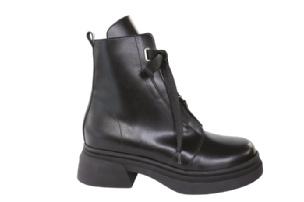
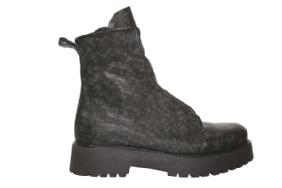
Winter is the time for boots, and the upcoming cold season is no exception: fashion is focusing on chelsea boots with practical elastic and well-structured bottoms, as well as military and combat boots, often personalized with metal accessories or fur inserts.
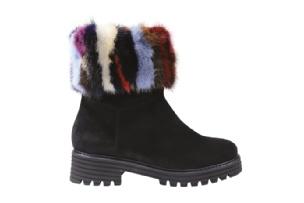
64
FW 23-24
SCOLARO
COMART
J. REINALDO LARA MAY
LE BABE PATRIZIA BONFANTI



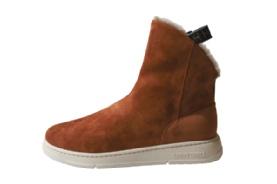

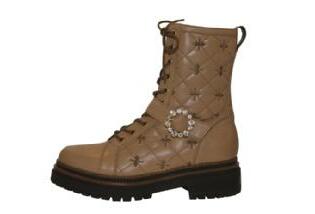


65 Chelsea, biker & Co.
STEP
SAFE
TAMARIS
CANDICE COOPER
SALLE DE MODE
MARCOS NALINI
JOSE SAENZ
GIANLUCA PISATI VIA MERCANTI
Lady with a capital letter
Non mancano anche nella prossima stagione le proposte più femminili e accattivanti, dove la silhouette della donna è enfatizzata da tacchi slanciati verso l’alto (anche se non mancano modelli flat altrettanto femminili), mentre le forme sono di preferenza sinuose e sfilate e i colori vivaci, senza però mai tradire l’elegantissimo total black.
There is no shortage of more feminine and eye-catching proposals in the coming season as well, where the woman’s silhouette is emphasized by slender upward heels (although there is no shortage of equally feminine flat models), while the shapes are preferably sinuous and slender and the colors bright, without, however, ever betraying the very elegant total black.
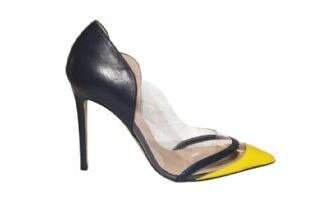





66
FW 23-24
LUCIANO PADOVAN
DANIELE ANCARANI
SOPHIE BENEL PARIS GIANMARCO F.
SELVA SHOES MENBUR
Lady with a capital letter




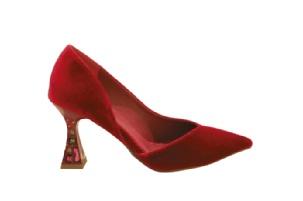

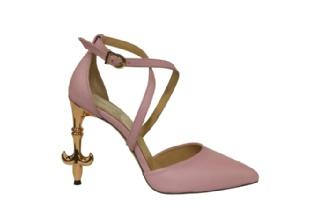

67
STAR RAL
LUCIANO PADOVAN
MENBUR
SALLE DE MODE
PROSPERINE
AIZHAN ASSENBAYEVA
AZUREE AZUREE
Sporty & trendy sneakers



Accanto alle sneaker di impronta più prettamente sportiva, troviamo qui tante proposte super trendy per tutta la famiglia, con inserti in lana, shearling e peluche, ispirazioni mountain, con gli iconici lacci a cordoncino, la chiusura a gancetti e la suola a carrarmato, così come mix and match di pellami e colori. Senza dimenticare le chunky sneakers.


Next to sneakers with a more purely sporty imprint, we find here many super trendy proposals for the whole family, with wool, shearling and peluche inserts, mountain inspirations - with the iconic drawstring laces, hook-and-eye closure and carrarmato sole -, as well as mix and match of leathers and colors. Not forgetting the chunky sneakers.
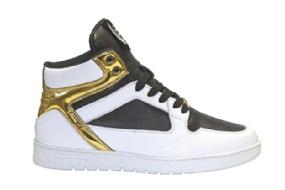
68
FW 23-24
BUFFALO
THE MILLIONAIRE CARTEL
LIU JO
TOSCA BLU GIO+
FESSURA
Sporty & trendy sneakers

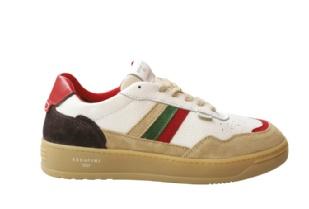

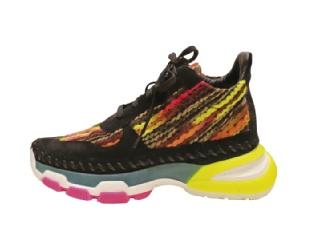


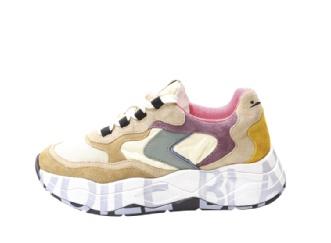
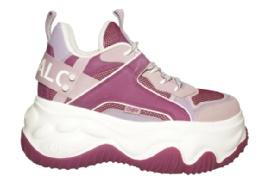
69
ALEX BY MERCURY
ID EIGHT JUST SAY WIZZ
SERAFINI PAUL FRANK
VOILE BLANCHE
BUFFALO FLOWER MOUNTAIN
Classic elegance...
Lo stile elegante maschile non abbandona la modelleria classica e i pellami pregiati, ma introduce molte innovazioni mutuate dalla scarpa sportiva come fondi in gomma, anche dentellati, che spesso sostituiscono i tradizionali in cuoio, oppure inserti colorati, fino ad arrivare a modelli ibridi con la sneaker.
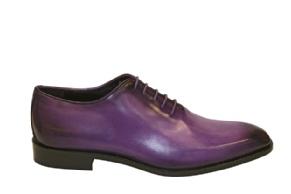
The elegant men’s style does not abandon classic modeling and fine leathers, but introduces many innovations borrowed from the sports shoe such as rubber bottoms, even notched, which often replace the traditional leather ones, or colored inserts, up to hybrid models with the sneaker.

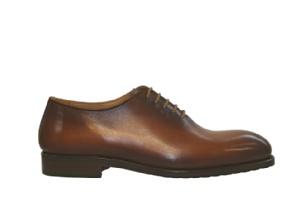

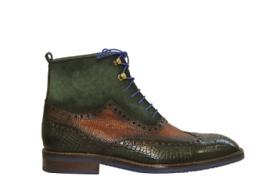

70
FW 23-24
MERCANTI FIORENTINI
CENTENARIO
CENTENARIO CERBERO
AURELIO GIOCONDI ARBITER
FRANCESCHETTI
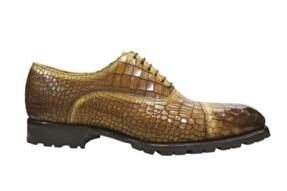
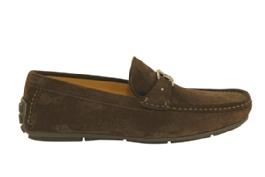
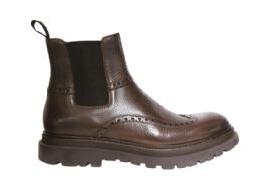



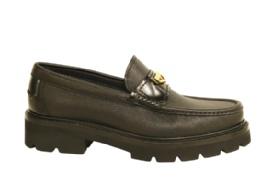

71
Classic elegance...
DINO DRAGHI MABELLINI
ENZO VERDICCHIO BRECOS
ENZO VERDICCHIO
MISTER ROBERTO BOTTICELLI
“La bellezza utile”, un racconto del Made in Italy attraverso l’arte fotografica di Heinz Schattner
Made in Italy, letteralmente “fatto in Italia”. Ma è solo questo? O c’è ben altro dietro alla produzione dei manufatti moda italiani?
Dall’ideazione alla progettazione del design, passando per la ricerca del materiale e dei giusti elementi decorativi: la creazione di abiti e accessori Made in Italy attraenti agli occhi dei consumatori è frutto di un’operazione straordinaria che, ancora oggi, unisce creatività e tecnica, arte e industria.
Alcuni degli scatti più famosi del maestro della fotografia di moda

Heinz Schattner sono stati raccolti da Confindustria Moda in una Mostra immersiva
Attraverso la mostra immersiva “La bellezza utile”, tenutasi il 13 febbraio scorso al Meet Digital Center in Porta Venezia a Milano, Confindustria Moda ha voluto raccontare attraverso l’arte di Heinz Schattner, maestro della fotografia di moda, il potere del “saper fare” italiano. La straordinaria capacità delle aziende italiane di dare forma al ‘bello’ ha portato la moda Made in Italy a diventare sinonimo di lusso ed eleganza in tutto il mondo, attraverso una narrazione che si fonda su prodotti che sono veri e utili, e che racconta le competenze tecnico-scientifiche, le relazioni, la capacità di pensare, percepire e dare forma al bello che si celano dietro a questi prodotti.
"Come le foto di Schattner i prodotti moda del made in Italy non sono neutri ma raccontano la perfezione manifatturiera utilizzando immagini nitide, ordinate, quasi spoglie nella loro intensità, oggetti che sono bellezza assoluta ma anche utilità contestualizzata”, dichiara Ercole Botto Paola, Presidente di Confindustria Moda.
L’esposizione è stata realizzata grazie a un attento lavoro di selezione nell’archivio fotografico che custodisce oltre 40 anni di lavoro di Schattner: un viaggio che è iniziato nel mondo della fotografia analogica, che ha saputo evolversi e attualizzarsi per essere oggi un racconto digitale, sperimentazione di spazio fuori dal tempo e uso di tecniche che trasformano le foto in quadri. Un dialogo senza
72 Trends
“La bellezza utile” per raccontare i segreti del successo della moda Made in Italy nel mondo.
soluzione di continuità tra tradizione e innovazione, che si ritrova anche nella storia del Made in Italy per cui il nostro paese è famoso nel mondo.
"La bellezza utile amalgama la sincerità del bianco e nero con la forza dirompente del colore. La macchina fotografica cattura l’esistenza di oggetti e persone, consentendo a chi guarda di sentirsi in un momento infinito e nello stesso tempo immerso nella contemporaneità del qui e ora”, commenta Heinz Schattner.
La visione armonica proposta dalla Mostra, scandita per sezioni dedicate a tutti i settori che compongono il sistema moda italiano, è stata pensata per veicolare un messaggio forte e chiaro, un “tutti per uno, uno per tutti” che vede nella diversità la più forte sintesi di unità.
La Mostra immersiva è stata realizzata con il contributo delle fiere internazionali che fanno capo alle associazioni di Confindustria Moda, tra cui Milano Unica, Micam Milano, Mipel, TheOneMilano, e Lineapelle.
“La bellezza utile”, a story tale about Made in Italy through Heinz Schattner’s photographic art
Some of the most famous photographs by the Master of fashion photography
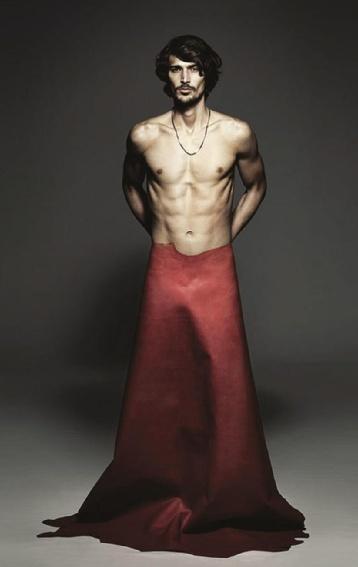
Heinz Schattner was collected by Confindustria Moda in an immersive Exhibition “La bellezza utile" to tell the secrets of Made in Italy fashion success in the world.

73 Trends
Made in Italy, literally ‘produced in Italy’. But is that all it is? Or is there more behind the production of Italian fashion artefacts?
From conception to design planning, passing through the search for the material and the right decorative elements: the creation of Made in Italy clothes and accessories attractive in the eyes of consumers is the result of an extraordinary operation that, even today, combines creativity and technique, art and industry.
Through the immersive Exhibition “La bellezza utile”, held on Feb. 13 at the Meet Digital Center in Porta Venezia in Milan, Confindustria Moda wanted to tell through the art of Heinz Schattner, the Master of fashion photography, the power of Italian "savoir faire".

The extraordinary ability of Italian companies to give shape to 'beauty' has led Made in Italy fashion to become synonymous with luxury and elegance around the world, through a narrative based on products that are real and useful, and that tells of the technical and scientific skills, relationships, and ability to think, perceive and give shape to beauty that lie behind these products.

"Like Schattner's photos, made-in-Italy fashion products are not neutral but tell the story of manufacturing perfection using sharp, uncluttered images, almost bare in their intensity, objects

74 Trends
that are absolute beauty but also contextualised utility," says Ercole Botto Paola, President of Confindustria Moda. The exhibition was made possible thanks to careful selection work in the photographic archive that holds more than 40 years of Schattner's work: a journey that began in the world of analog photography, which has evolved and actualised to be today a digital narrative, experimentation with space outside of time and use of techniques that transform photos into paintings. It is a seamless dialogue between tradition and innovation, which is also found in the history of Made in Italy for which our country is world famous.
“‘La bellezza utile’ amalgamates the sincerity of black and white with the disruptive power of color. The camera captures the existence of objects and people, allowing the viewer to feel in an infinite moment and at the same time immersed in the contemporaneity of the here and now," comments Heinz Schattner. The harmonious vision proposed by the Exhibition, scanned by sections dedicated to all the sectors that make up the Italian fashion system, was designed to convey a strong and clear message, an "all for one, one for all" that sees diversity as the strongest synthesis of unity.

The Immersive Exhibition was realised with the contribution of the international fairs that are part of the Confindustria Moda associations, including Milano Unica, Micam Milano, Mipel, TheOneMilano, and Lineapelle.

75 Trends
Cina e Hong Kong: sfide e opportunità per i marchi globali della moda
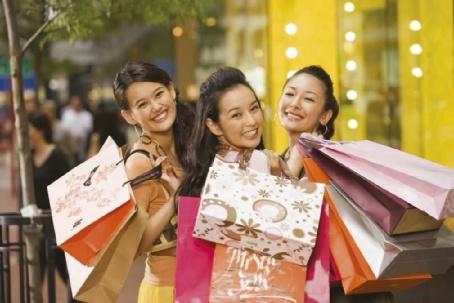
Nonostante il panorama sfidante, la Cina rimane uno dei mercati più interessanti al mondo per i brand di moda internazionali capaci di trovare un equilibrio tra globale e locale, e tra on e offline. Quanto alla regione amministrativa speciale di Hong Kong, questa può continuare a giocare un ruolo-chiave nello shopping globale del fashion luxury purché punti su esclusività dei prodotti e sull’offerta di una shopping experience cosmopolita.
Secondo uno studio pubblicato da McKinsey Global Institute, tra i 2 miliardi di persone che negli ultimi 20 anni hanno raggiunto standard di vita elevati (con un PIL procapite di almeno 8,300 dollari e un’aspettativa di vita di almeno 72,5 anni), 1,1 miliardi vivono in Cina e quasi un altro miliardo in microregioni sparse in 75 Paesi. Questo significa che oltre la metà di questi due miliardi di persone sono cinesi. Sempre secondo McKinsey, (Studio di Alice Scalco, Michael Straub, Jacob Wang e Daniel Zipser), il mercato dell'abbigliamento, della moda e del lusso (AF&L) in Cina continua ad essere uno dei più grandi e dinamici al mondo, con previsioni di crescitadopo un difficile 2022 – nuovamente a due cifre, grazie soprattutto alla crescita della classe media. Questo insieme di dati ci dà il quadro di un mercato che appare immenso e dall’immenso potenziale per i brand internazionali del settore moda. Ma questo non significa che per le multinazionali globali sia facile fare business in Cina. Molti brand cinesi top del settore moda, infatti, stanno superando i loro colleghi globali e molti di loro stanno adottando un modello operativo e una supply chain sempre più agili, che consentono una maggiore reattività rispetto ai cambiamenti nelle preferenze e nei gusti dei consumatori. Non solo: si tratta di marchi che appaiono sempre più abili nell’operare sui vari canali social-media e del commercio on line, capaci di coinvolgere gli opinion leader locali per entrare in contatto diretto con i consumatori. Per questo motivo – secondo McKinsey – i marchi globali del settore AF&L che mirano a rafforzare la loro competitività a lungo termine nel mercato cinese dovrebbero partire da un posizionamento ben definito del proprio marchio, cui far seguire una comunicazione coerente on/ off-line. Andrebbero, quindi, inquadrate in modo coerente le strategie per le catene di negozi fisici, così come per le piattaforme digitali, investendo in attività omnichannel e nel coinvolgimento diretto dei consumatori (D2C). Infine, i ‘fattori abilitanti’ - che vanno dallo sviluppo del pro-
76 Market
dotto e della catena di fornitura, alla tecnologia e all'infrastruttura digitale - possono aiutare i marchi globali a migliorare la loro rilevanza sul mercato locale.
Brand positioning, strategie e comunicazione
I gusti e i trend in Cina sono in continua evoluzione e spesso seguono percorsi diversi da quelli di altri mercati. Per questo motivo, i marchi globali che intendono affermarsi sul mercato cinese devono essere pronti ad adattare il loro posizionamento ai gusti locali e sviluppare un vero e proprio motore di marketing locale. Per tenere il passo con l'agguerrita concorrenza dei marchi locali, i marchi globali possono anche riconfigurare la loro struttura organizzativa e accelerare il time-to-market, adottando un modello “test and chase” per testare e rivedere le caratteristiche dei prodotti proposti. Inoltre, guardando più da vicino le preferenze riguardanti i canali di vendita in Cina, si nota come i consumatori si stiano progressivamente spostando dai grandi magazzini tradizionali, ai centri commerciali localizzati in zone di prestigio, che vantano un'offerta lifestyle più ampia e completa, oltre ad opzioni di cibo e bevande.
Sempre più verso un approccio omnichannel D2C
I consumatori cinesi hanno abbracciato sempre di più l'approccio omnichannel, e passano facilmente dal contatto online a quello offline prima di prendere una decisione d'acquisto. Per questo motivo è importante, per i brand globali di moda, adottare e sviluppare una strategia omnichannel D2C efficace, in grado di coinvolgere e fidelizzare il consumatore (dall’upgrading dei digital touchpoints che migliorano l’esperienza di acquisto, alla formazione del personale dei punti vendita per un migliore coinvolgimento dei clienti). Importante è anche lo sfruttamento efficace dell’insieme di dati raccolti dai consumatori, in grado di offrire un valore esponenziale. Inoltre, dal momento che per i consumatori cinesi fare acquisti sulle piattaforme sociali è diventato un passaggio naturale, i fashion brand globali dovrebbero sviluppare dei posizionamenti su misura lungo il percorso decisionale del consumatore, con lo sviluppo, ad esempio, di contenuti locali oppure operazioni di live streaming.
Supply chain agile, localizzazione tecnologica e digitale I modelli di domanda sono più dinamici in Cina rispetto a quelli dei mercati maturi. Per questo i fashion brand globali possono riconfigurare in modo più personalizzato la loro supply chain adottando una pianificazione ‘data-
driven’ e sviluppando una catena di fornitura “China for China”. I brand globali dovrebbero, inoltre, privilegiare la localizzazione tecnologica e digitale per una maggiore resilienza: è necessario avere la giusta tecnologia e la giusta infrastruttura digitale in loco per creare un’esperienza di valore per i consumatori locali, al contempo sviluppando collaborazioni con gli operatori locali.
Il mercato del lusso a Hong Kong
Secondo uno studio PwC (il network globale di servizi professionali di revisione e alle imprese), le previsioni sui mercati al consumo di Hong Kong per il 2023 sono ottimistiche: le vendite al dettaglio dovrebbero crescere del 13%, arrivando a circa 395 miliardi di HK$.
Erika Andreetta, Emea Fashion & Luxury leader e partner di PwC Italia, afferma: “L’abolizione dei requisiti di quarantena da parte della Cina continentale per i viaggiatori in ingresso farà rimbalzare le vendite al dettaglio relative al 2023. Il turismo inizierà una lenta ripresa: Hong Kong stima 20 milioni di visitatori, un terzo del picco da 65 milioni del 2018. Le vendite al dettaglio trarranno beneficio dal recente piano da 100 milioni di HK$ dell’Ente per il Turismo per attirare i turisti con omaggi e promozioni, come ad esempio i buoni di consumo che possono essere spesi presso più di 130 punti di attrazione, negozi e ristoranti. Hong Kong regalerà anche 500.000 biglietti aerei a viaggiatori di tutto il mondo per contribuire a far ripartire il turismo. È vero che la riapertura dei confini sarà di aiuto; ma considerando che nei primi mesi il settore del retail a Hong Kong continuerà a fare affidamento sui consumi locali, potrebbe rivelarsi difficile tornare ai livelli cui abbiamo assistito prima della pandemia”.
Continua Erika Andreetta: “Guardando al futuro, nel 2023 i grandi magazzini e il settore del lusso, inclusi i gioielli, continueranno a crescere di circa il 40%, rispetto a circa il 20% di abbigliamento, calzature e prodotti affini, sostenuti dalla ripresa del turismo e dal rafforzamento del renminbi”.
Il mercato del lusso sta recuperando in fretta rispetto alla pandemia e con maggior vigore, resilienza e agilità, e i luxury brand dovrebbero prepararsi a rispondere alla ripresa e alle nuove opportunità. Malgrado Hong Kong si trovi tuttora ad affrontare alcune sfide, il mercato del lusso trarrà beneficio dalla ripresa nazionale e globale, continuando a potenziare il proprio vantaggio rispetto alla concorrenza come paradiso dello shopping. La città può ulteriormente diventare una piattaforma per la diffusione dell’e-commerce nel nord dell’Asia.
77 Market
Il futuro del retail del lusso a Hong Kong
Secondo il Mainland China/HK Luxury Market Insights di PwC per il 2023, il panorama del retail a Hong Kong è stato profondamente trasformato da tre anni di chiusura delle frontiere. I brand hanno, infatti, rivisitato l’impronta dei loro negozi e ridotto la propria presenza a Hong Kong, a favore della Cina continentale. Questo perché la differenza tra i prezzi di Hong Kong e quelli della Cina continentale si è progressivamente assottigliato a causa dei tassi di cambio e della forte penetrazione dell’ecommerce in quest’ultima. La trasformazione del mercato di Hong Kong probabilmente proseguirà, mentre la Cina continentale diventerà sempre più una valida alternativa. E tuttavia, in quanto hub finanziario internazionale senza imposte di vendita o dazi doganali, Hong Kong può ancora rivestire una posizione unica e privilegiata. Come? In questo quadro diventa fondamentale per Hong Kong puntare con forza sulla proposta di prodotti ancora più esclusivi, personalizzati e all’avanguardia, nonché sull’offerta di una shopping experience cosmopolita e in grado di soddisfare gli altospendenti asiatici e differenziarsi dalla Cina continentale. Il futuro del retail a Hong Kong sarà anche collegato alla Greater Bay Area (GBA); alcuni distretti di Shenzhen e Guangzhou, insieme a grandi aree della Provincia di Guangdong, non sono ancora serviti in termini di centri commerciali e punti vendita di alta gamma, e i clienti che vivono nella GBA continueranno probabilmente a essere attratti da Hong Kong come destinazione per lo shopping.
Il ruolo dell’e-commerce a Hong Kong
Nel 2022, le vendite al dettaglio online costituivano il 10% di quelle totali in termini di valore, con un aumento del 21% anno su anno. Negli ultimi tre anni, il settore retail di Hong Kong è cambiato radicalmente, in quanto è cresciuto il numero di persone che hanno comprato online. Molti negozianti hanno aumentato gli investimenti nelle piattaforme di vendita online per migliorare l’esperienza complessiva di acquisto su Internet. Secondo PwC Hong Kong, tuttavia, nel 2023 le vendite al dettaglio online continueranno a crescere, ma ad un ritmo più lento. La crescita dell’e-commerce dipenderà da diversi fattori, tra cui lo sviluppo della tutela dei dati dei consumatori, l’intelligenza artificiale etica e altre caratteristiche chiave di un’economia digitale. L’intelligenza artificiale (AI) giocherà un ruolo particolarmente importante nello sviluppo della customer experience, con strumenti come le raccomandazioni sui prodotti, la realtà virtuale, le biometriche o
i chatbot avanzati, che possono migliorare la ricerca da parte del cliente, offrire una maggiore personalizzazione e portare a decisioni di acquisto più consapevoli. Tuttavia, afferma Erika Andreetta: “Il Governo di Hong Kong deve agire per rafforzare le normative sul settore dell’ecommerce. I rivenditori online devono proteggere i dati personali dei consumatori, il modo in cui questi vengono raccolti e l’uso dei cookie negli acquisti su Internet. È fondamentale che si legiferi al fine di garantire che i modelli di AI siano costantemente implementati con trasparenza e divulgazione, il che darà una grande spinta al settore della vendita al dettaglio, aumentando la fiducia dei consumatori e promuovendo ulteriormente l'economia digitale. Tutte le parti coinvolte nel digitale e nel retail dovrebbero incentivare l’AI nell’e-commerce e garantire sicurezza dei dati raccolti”.
China and Hong Kong: challenges and opportunities for global fashion brands
Despite the challenging landscape, China remains one of the most interesting markets in the world for international fashion brands able to strike a balance between global and local, and between on and offline. As for the Hong Kong Special Administrative Region, it can continue to play a key role in global luxury fashion shopping as long as it focuses on product exclusivity and offering a cosmopolitan shopping experience.
According to a study published by McKinsey Global Institute, among the 2 billion people who have achieved high standards of living over the past 20 years (with a GDP per capita of at least USD 8,300 and a life expectancy of at least 72.5 years), 1.1 billion live in China and almost another billion in micro-regions
78 Market
spread across 75 countries. This means that more than half of these two billion people are Chinese.
Also according to McKinsey, (Study by Alice Scalco, Michael Straub, Jacob Wang and Daniel Zipser), the apparel, fashion and luxury (AF&L) market in China continues to be one of the largest and most dynamic in the world, with growth forecastsafter a difficult 2022 - again in double digits, thanks mainly to the growth of the middle class. This set of data gives us a picture of a market that appears immense and with immense potential for international fashion brands. But this does not mean that it is easy for global multinationals to do business in China. In fact, many top Chinese fashion brands are outperforming their global peers and many of them are adopting an increasingly agile operating model and supply chain, allowing for greater responsiveness to changes in consumer preferences and tastes. Not only that, but these brands appear increasingly adept at operating on the various social-media and online commerce channels, able to engage local opinion leaders to connect directly with consumers. For this reason, according to McKinsey, global AF&L brands aiming to strengthen their long-term competitiveness in the Chinese market should start with a well-defined brand positioning, followed by consistent on/off-line communication. Therefore, strategies for physical chain shops, as well as digital platforms, should be consistently framed by investing in omnichannel activities and direct consumer engagement (D2C). Finally, 'enabling factors' - ranging from product and supply chain development to technology and digital infrastructure - can help global brands improve their relevance in the local market.
Brand positioning, strategies and communication
Tastes and trends in China are constantly evolving and often follow different paths from those in other markets. For this reason, global brands wishing to establish themselves in the Chinese market must be prepared to adapt their positioning to local tastes and develop a true local marketing engine. In order to keep
up with the fierce competition from local brands, global brands can also reconfigure their organisational structure and speed up time-to-market by adopting a 'test and chase' model to test and review product features. In addition, a closer look at sales channel preferences in China shows that consumers are progressively shifting from traditional department stores, to shopping malls located in prime locations, which boast a wider and more comprehensive lifestyle offering, as well as food and beverage options.
Increasingly towards a D2C omnichannel approach
Chinese consumers have increasingly embraced the omnichannel approach, and easily switch from online to offline contact before making a purchasing decision. This is why it is important for global fashion brands to adopt and develop an effective omnichannel D2C strategy that engages and builds consumer loyalty (from upgrading digital touchpoints that enhance the shopping experience, to training shop staff for better customer engagement). Also important is the effective exploitation of the consumer data set, which can offer exponential value.
Furthermore, as shopping on social platforms has become a natural step for Chinese consumers, global fashion brands should develop tailor-made placements along the consumer's decisionmaking path, e.g. by developing local content or live streaming operations.
Agile supply chain, technology and digital localisation
Demand patterns are more dynamic in China than in mature markets. Therefore, global fashion brands can reconfigure their supply chain in a more customised way by adopting 'data-driven' planning and developing a 'China for China' supply chain. Global brands should also prioritise technology and digital localisation for greater resilience: it is necessary to have the right technology and digital infrastructure in place to create a valuable experience for local consumers, while developing partnerships with local players.
The luxury market in Hong Kong
According to a study by PwC (the global network of professional audit and business services), Hong Kong's consumer market forecasts for 2023 are optimistic: retail sales are expected to grow by 13% to around HK$395 billion.
Erika Andreetta, Emea Fashion & Luxury leader and partner at PwC Italy, says: 'Mainland China's lifting of quarantine requirements for inbound travellers will rebound retail sales for 2023. Tourism will start a slow recovery: Hong Kong estimates 20 million visitors, one-third of the 65 million peak in 2018. Retail sales will benefit from the Tourism Authority's recent HK$100
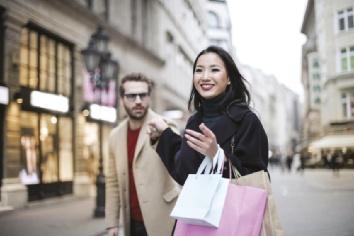
79 Market
million plan to attract tourists with free gifts and promotions, such as consumer vouchers that can be spent at more than 130 attractions, shops and restaurants. Hong Kong will also give away 500,000 airline tickets to travellers from around the world to help revive tourism. It is true that the re-opening of the borders will help; but considering that the retail sector in Hong Kong will continue to rely on local consumption in the first few months, it may prove difficult to return to the levels we saw before the pandemic. Erika Andreetta continues: "Looking ahead, department stores and the luxury sector, including jewellery, will continue to grow by around 40 per cent in 2023, compared to around 20 per cent for clothing, footwear and related products, supported by the recovery of tourism and the strengthening of the renminbi."The luxury market is recovering fast from the pandemic and with greater vigour, resilience and agility, and luxury brands should prepare to respond to the recovery and new opportunities. Although Hong Kong still faces some challenges, the luxury market will benefit from the national and global recovery, continuing to strengthen its edge over competitors as a shopping paradise. The city can further become a platform for e-commerce in North Asia.
The future of luxury retail in Hong Kong

According to PwC's Mainland China/HK Luxury Market Insights for 2023, the retail landscape in Hong Kong has been profoundly transformed by three years of closed borders. Brands have, in fact, revisited their shop footprints and reduced their presence in Hong Kong in favour of Mainland China. This is because the difference between prices in Hong Kong and mainland China has gradually narrowed due to exchange rates and the strong penetration of e-commerce in the latter. The transformation of the Hong Kong market is likely to continue, while Mainland China will increasingly become a viable alternative. And yet, as an international financial hub with no sales tax or customs duty, Hong Kong can still hold a unique and privileged
position. How? Against this backdrop, it becomes crucial for Hong Kong to focus strongly on offering even more exclusive, customised and cutting-edge products, as well as a cosmopolitan shopping experience that can cater to Asian high-end shoppers and differentiate itself from Mainland China. The future of retail in Hong Kong will also be linked to the Greater Bay Area (GBA); some districts in Shenzhen and Guangzhou, along with large areas in Guangdong Province, are still underserved in terms of high-end malls and outlets, and shoppers living in the GBA are likely to continue to be attracted to Hong Kong as a shopping destination.
The role of e-commerce in Hong Kong
In 2022, online retail sales constituted 10 per cent of total retail sales in value terms, an increase of 21 per cent year-on-year. In the past three years, Hong Kong's retail sector has changed dramatically as the number of people buying online has grown. Many retailers have increased investment in online sales platforms to improve the overall Internet shopping experience. According to PwC Hong Kong, however, online retail sales will continue to grow in 2023, but at a slower pace. The growth of e-commerce will depend on several factors, including the development of consumer data protection, ethical artificial intelligence and other key features of a digital economy. Artificial intelligence (AI) will play a particularly important role in the development of the customer experience, with tools such as product recommendations, virtual reality, biometrics or advanced chatbots, which can improve customer research, offer greater personalisation and lead to more informed purchasing decisions. However, says Erika Andreetta: 'The Hong Kong government must act to strengthen regulations on the e-commerce sector. Online retailers need to protect consumers' personal data, how it is collected and the use of cookies in Internet shopping. It is crucial that legislation is made to ensure that AI models are consistently implemented with transparency and disclosure, which will give the retail sector a big boost, increasing consumer trust and further promoting the digital economy. All parties involved in digital and retail should incentivise AI in e-commerce and ensure security of collected data."

80 Market
Il mercato indonesiano e la CIFA
Alternativa sempre più attraente per la delocalizzazione produttiva dei grandi brand dello sportswear globale, l’Indonesia fa parte del CIFA e accoglierà la prossima edizione della Conferenza Internazionale della Calzatura (IFC) organizzata dalla confederazione. Del mercato indonesiano e del CIFA parliamo con Eddy Widjanarko, attuale
Presidente dell’Associazione
Calzaturiera Indonesiana e di CIFA.
Partiamo da una breve introduzione alla CIFA?
A metà del 1960, Hong Kong, Corea, Giappone e Taiwan rappresentavano i quattro principali esportatori di calzature nel mercato asiatico. Competitors, ma anche ‘colleghi’, i quattro Paesi decisero di creare una piattaforma dove condividere informazioni e opinioni, oltre che aiutarsi vicendevolmente. Così, diedero vita alla prima edizione della Conferenza internazionale dei produttori di calzature in gomma, che si svolse a Taipei, Taiwan, nel 1971. Nel 1982, il nome della conferenza fu cambiato in "International Footwear Conference" (IFC). Nel corso del tempo, i membri dell'IFC sono progressivamente aumentati, fino ad arrivare alle 17 associazioni attuali. Nel 2008 è stato indetto il Concorso Internazionale di Design Calzaturiero (IFDC), la cui prima edizione si è svolta nel 2009 a Guangzhou (Cina) in concomitanza con la Shoes & Leather International Exhibition. Nel 2011 si è deciso di istituire un'organizzazione per il settore, che si è chiamata "Confederation of International Footwear Association". È nata così la CIFA, le cui attività principali sono l'organizzazione della Conferenza Internazionale della Calzatura (IFC) e l'organizzazione del Concorso Internazionale di Design della Calzatura (IFDC). Le associazioni che prendono parte all'IFC sono anche membri della CIFA. “La 40° Conferenza Internazionale della Calzatura del 2023 sarà ospitata dall'Associazione calzaturiera indonesiana nell'agosto 2023”, specifica Eddy Widjanarko, attuale Presidente dell’Associazione Calzaturiera Indonesiana e di CIFA.

Parliamo del mercato calzaturiero in Indonesia: qual è la situazione attuale?
L’Indonesia è stata tra i grandi protagonisti della delocalizzazione produttiva calzaturiera da Taiwan, Giappone e Corea dagli anni ‘80 fino alla metà degli anni ‘90, quando la situazione è cambiata con l’arrivo sulla scena
81 Market
Eddy Widjanarko
globale della Cina. Oggi il paese può comunque contare su un’importante presenza di aziende calzaturiere, circa 400, che producono soprattutto per i grandi brand dello sportswear globale come Nike, Reebok e Adidas, tanto che circa l’80% dell’export è rappresentato da calzature sportive e casual.
Come è cambiata la situazione del mercato indonesiano dopo il Covid?
Con l’avvento del Covid la Cina ha risentito dei vari lockdown, che hanno influito negativamente sulle esportazioni di calzature. Inoltre, attraversa un momento di notevoli rivendicazioni salariali da parte dei lavoratori, con conseguente aumento dei costi. Questi fattori hanno spinto molti importanti brand globali di calzature sportive a riallocare parte della loro produzione in Indonesia e Vietnam, a discapito della Cina. Per questo motivo, a partire dal 2020 la produzione di calzature in Indonesia ha conosciuto un forte aumento e le esportazioni hanno superato, nel 2021, i 6,1 miliardi di dollari. Con un aumento del 29% rispetto al 2020. Nel 2022, l’export è cresciuto di 7,7 miliardi di dollari rispetto al 2020 (+25%). Parliamo soprattutto di calzature sportive e casual di marca, molte delle quali in pelle.
Quale previsione può immaginare, quindi, per i prossimi anni?
La previsione è senza dubbio positiva, anche se i dati relativi ai primi sei mesi del 2023 mostrano come un eccesso di scorte e l’aumento dell’inflazione abbiano determinato una diminuzione degli ordini. Tuttavia, sono stati messi in campo importanti investimenti per la produzione di calzature, in particolare sportive, il che dovrebbe portare la produzione ad attestarsi sugli stessi numeri dell'anno scorso, con un aumento delle esportazioni di circa il 20% per il prossimo anno. Ed è proprio in questo quadro generale di crescita della produzione e delle esportazioni che acquisisce una particolare rilevanza ILF - Indo Leather & Footwear Fair, che si terrà a Jakarta in agosto.
Ci vuole parlare più nel dettaglio di Indo Leather & Footwear Exhibition 2023?

Puntiamo molto su questo appuntamento per promuovere la nostra industria calzaturiera e il nostro export. La fiera, organizzata da Krista Exhibitions, si terrà dal 3 al 5 agosto al JIExpo Kemayoran, di Jakarta (Indonesia) e proporrà una panoramica completa della produzione indonesiana di calzature, pelletteria e articoli in pelle, ma
anche macchinari, materiali e prodotti chimici per l’industria calzaturiera e pellettiera. Saranno presenti quasi 300 aziende espositrici, in rappresentanza di oltre 33 paesi, e sono attesi circa 8300 visitatori. Proprio in quel contesto si terrà la 40° Conferenza Internazionale della Calzatura del 2023.
Nell’estate 2023 passerete anche dall’Italia?
Con una delegazione di aziende parteciperemo a Expo Riva Schuh & Gardabags, e prenderemo parte all’importante evento/seminario che si terrà a Riva del Garda durante i giorni di fiera. Per i nostri associati la piattaforma rivana rappresenta un ottimo trampolino di lancio per ampliare le prospettive di export.
An increasingly attractive alternative for the manufacturing relocation of major global sportswear brands, Indonesia is part of CIFA and will host the next edition of the International Footwear Conference (IFC) organised by the confederation. We talk about the Indonesian market and CIFA with Eddy Widjanarko, current President of the Indonesian Footwear Association and CIFA.
82 Market
The Indonesian market and CIFA
Shall we start with a brief introduction to CIFA?
In the mid-1960s, Hong Kong, Korea, Japan and Taiwan were the four main shoe exporters in the Asian market. Competitors, but also 'colleagues', the four countries decided to create a platform where they could share information and opinions as well as help each other. Thus, they created the first International Rubber Footwear Manufacturers Conference, which took place in Taipei, Taiwan, in 1971. In 1982, the name of the conference was changed to 'International Footwear Conference' (IFC). Over time, the membership of the IFC has gradually increased to the current 17 associations. In 2008, the International Footwear Design Competition (IFDC) was launched, the first edition of which was held in 2009 in Guangzhou (China) in conjunction with the Shoes & Leather International Exhibition. In 2011, it was decided to set up an organisation for the sector, which was called the Confederation of International Footwear Association. Thus CIFA was born, whose main activities are the organisation of the International Footwear Conference (IFC) and the organisation of the International Footwear Design Competition (IFDC). The associations taking part in the IFC are also members of CIFA. "The 40th International Footwear Conference 2023 will be hosted by the Indonesian Footwear Association in August 2023," specifies Eddy Widjanarko, current President of the Indonesian Footwear Association and CIFA.
Let's talk about the footwear market in Indonesia: what is the current situation?
Indonesia was a major player in the relocation of footwear production from Taiwan, Japan and Korea from the 1980s until the mid-1990s, when the situation changed with the arrival of China on the global scene. Today, the country can still count on an important presence of footwear companies, around 400 in number, which produce mainly for the big global sportswear brands such as Nike, Reebok and Adidas, so much so that around 80% of exports are sports and casual footwear.
How has the situation in the Indonesian market changed after Covid?

With the advent of Covid, China was affected by the various lockdowns, which negatively affected footwear exports. In addition, it is going through a period of significant wage claims by workers, resulting in higher costs. These factors have prompted many major global sports shoe brands to relocate part of their production to Indonesia and Vietnam, at the expense of China. As a result, footwear production in Indonesia has increased sharply since 2020, with exports exceeding USD 6.1 billion in 2021. This is a 29% increase from 2020. In 2022,
exports grew by USD 7.7 billion compared to 2020 (+25%). We are mainly talking about branded sports and casual footwear, much of it leather.
What forecast can you imagine, then, for the coming years?
The forecast is undoubtedly positive, even if the figures for the first six months of 2023 show that overstocking and rising inflation have led to a decrease in orders. However, major investments have been made in the production of footwear, particularly sports footwear, which should lead to production remaining at the same numbers as last year, with an increase in exports of around 20% next year. And it is within this general framework of growth in production and exports that ILF - Indo Leather & Footwear Fair, which will be held in Jakarta in August, acquires particular relevance.
Would you tell us more about Indo Leather & Footwear Exhibition 2023?
We are betting a lot on this event to promote our footwear industry and our exports. The fair, organised by Krista Exhibitions, will be held from 3 to 5 August at JIExpo Kemayoran, Jakarta (Indonesia) and will offer a complete overview of Indonesian footwear, leather goods and leather goods production, as well as machinery, materials and chemicals for the footwear and leather goods industry. Nearly 300 exhibiting companies representing more than 33 countries will be present and some 8300 visitors are expected. It is in this context that the 40th International Footwear Conference 2023 will be held.
Will you also be passing through Italy in the summer of 2023?
With a delegation of companies we will participate in Expo Riva Schuh & Gardabags, and we will take part in the important event/seminar that will be held in Riva del Garda during the trade fair. For our associates the Riva platform represents an excellent springboard to expand export prospects.
83 Market
L’olandese Wout Speyers vince ‘Craft The Leather 2022’
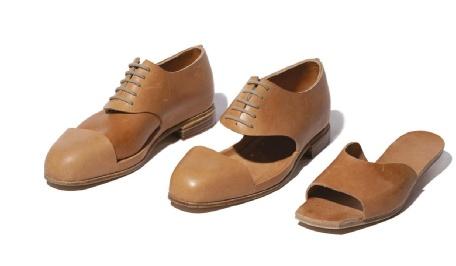
Il vincitore della nona edizione del concorso internazionale rivolto a giovani designer, promosso dal Consorzio Vera Pelle Italiana
Conciata al Vegetale, è uno studente dell’Istituto René Van den Berg Academy con la sua collezione
“The World is a Natural Product”.
Adecretarlo sono state le votazioni espresse dalla Giuria tecnica, che si sono aggiunte a quelle del pubblico raccolte a Lineapelle e sui canali social del Consorzio. Al termine di uno stage presso il Consorzio, Wout Speyers ha presentato una capsule collection composta da tre accessori che invitano a “viaggiare con l’essenziale”, realizzati interamente in pelli conciate al vegetale messe a disposizione dalle aziende associate.
In particolare la borsa “Viaggia leggero” multifunzionale da viaggio, dove la silhouette del classico bauletto da medico si incontra con una sella da bicicletta. ”In questa borsa –ha spiegato Speyers - vengono utilizzati solo materiali che appartengono al nostro equilibrio naturale; pelle (a umido), compensato di aeroplano leggero (piegato) e sughero. Ma c’è un altro messaggio ancora: vivi con leggerezza, viaggia con poco e prenditi del tempo per riflettere. Per integrare il subconscio nella vita di tutti i giorni”. La Scarpa double è la proposta innovativa della calzatura scomponibile costituita da una tomaia modello Oxford e da una pantofola. Efficiente, multifunzionale, adatta a tutte le esigenze vuole essere anche un invito a godere della tranquillità. Il Mappamondo dove i continenti interamente cuciti a mano, e a rilievo, mettono in risalto la duttilità della pelle al vegetale e l’arte dei Maestri artigiani: “C’è un luogo in cui il rispetto ha sempre fatto parte della vita quotidiana. In Toscana gli artigiani producono pelle fin dal medioevo. Conciata al vegetale, senza metalli pesanti. Pelle morbida naturale e persistente. È ora di smettere di giocare con la terra e di mettere il mondo su un piedistallo”, ha aggiunto Wout Speyers. Ricordiamo che Craft The Leather è un progetto di formazione del Consorzio Vera Pelle Conciata al Vegetale, dedicato ad una selezione di giovani talentuosi stilisti degli istituti di moda e design internazionali più prestigiosi e innovativi. Sette talenti sono stati così chiamati ad interpretare la Pelle Conciata al Vegetale in Toscana attraverso la lente dell’arte contemporanea, della creatività manuale e dell’innovazione. Il concorso si è articolato in due fasi e ha previsto un workshop formativo nell’estate 2022 nel Distretto Conciario Toscano, per conoscere le qualità e le potenzialità di una pelle trattata secondo una tradizione secolare. Nella seconda parte dell’anno, invece, ogni designer ha creato una collezione di accessori utilizzando esclusivamente Pelle conciata al vegetale in Toscana. Tutor del progetto era Diane Ellen Becker, Consulente d’immagine, con un’esperienza professionale che ha spaziato in tutti gli aspetti del settore moda pelle (da visual merchandiser a buyer, a stilista di scarpe e accessori in pelle di alta gamma).
84
Trends
Wout Speyers
Secondo classificato di Craft The Leather 2022 è stato Gonçalo Camboa, della Central Saint Martins nel Regno Unito, mentre il terzo posto è andato a Marie With, della Kolding Design School in Danimarca.
Hanno inoltre partecipato: Hannah Andregassen – NABA
Nuova Accademia di Belle Arti – Italia, Lea Katrin Ellemann – Amsterdam Fashion Institute – Paesi Bassi, Mirko Michelacci – ISIA Design – Italia, Jennifer Sims – Royal College of Art – Regno Unito.
Dutchman, Wout Speyers, wins ‘Craft The Leather 2022’
The winner of the ninth edition of the international competition aimed at young designers, promoted by Consorzio Vera Pelle Italiana Conciata al Vegetale, is a student from the René Van den Berg Academy with his collection
The winner was decided by the votes cast by the Technical Jury, which were added to those of the public collected at Lineapelle and on the Consortium’s social channels. At the end of an internship at the Consortium, Wout Speyers presented a capsule collection consisting of three accessories that invite “travel with essentials,” made entirely of vegetable-tanned leathers provided by member companies. In particular, the multifunctional “Travel Light” travel bag, where the silhouette of the classic doctor’s case meets a bicycle saddle. “In this bag,” Speyers explained, “only materials that belong to our natural balance are used; leather (wet), lightweight airplane plywood (folded) and cork. But there is yet another message: live lightly, travel with little and take time to reflect. To integrate the subconscious into everyday life.”
The Double Shoe is the innovative proposal of the decomposable footwear consisting of an Oxford model upper and a slipper. Efficient, multifunctional, suitable for all needs it also wants to be an invitation to enjoy peace of mind.
The Mappamondo where the continents entirely hand-stitched, and embossed, highlight the pliability of vegetable-tanned leather and the art of Master Craftsmen: “There is a place where respect has always been part of daily life. In Tuscany, artisans
have been producing leather since the Middle Ages. Vegetabletanned, without heavy metals. Natural and persistent soft leather.It’s time to stop playing with the earth and putting the world on a pedestal,” added Wout Speyers.
Recall that Craft The Leather is a training project of Consorzio Vera Pelle Italiana Conciata al Vegetale( the Genuine Vegetable Tanned Leather Consortium), dedicated to a selection of talented young designers from the most prestigious and innovative international fashion and design institutes. Seven talents were thus called upon to interpret Vegetable Tanned Leather in Tuscany through the lens of contemporary art, manual creativity and innovation. The competition was divided into two phases and included a training workshop in the summer of 2022 in the Tuscan Tanning District to learn about the qualities and potential of a leather treated according to a centuries-old tradition. In the second part of the year, however, each designer created a collection of accessories using only vegetable-tanned leather in Tuscany. Tutor for the project was Diane Ellen Becker, an Image Consultant with professional experience spanning all aspects of the leather fashion industry (from visual merchandiser to buyer to designer of high-end leather shoes and accessories).
Runner-up for Craft The Leather 2022 was Gonçalo Camboa, from Central Saint Martins in the United Kingdom, while third place went to Marie With, from Kolding Design School in Denmark.
Also participating were Hannah Andregassen - NABA Nuova Accademia di Belle Arti - Italy, Lea Katrin Ellemann - Amsterdam Fashion Institute - Netherlands, Mirko Michelacci - ISIA Design - Italy, Jennifer Sims - Royal College of Art - UK.
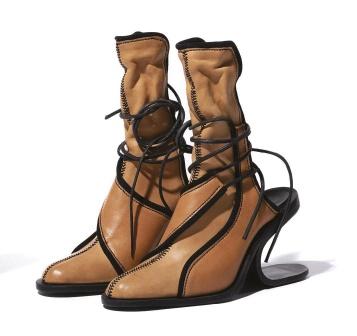
85
“The World is a Natural Product.”
Trends
Marie With
Alla scoperta del mercato coreano
al mondo: si tratta di una sorta di ‘showroom del Made in Italy’, composta da due piani espositivi, dove le aziende italiane hanno la possibilità di esporre i loro prodotti, e in determinati casi di venderli, cui si aggiungono altri due piani adibiti ad eventi organizzati da ITA o da altre istituzioni del Sistema Italia come mostre, seminari, workshop ecc. High Street Italia funge come una sorta di ‘pop up’ store di grande visibilità per i prodotti del Made in Italy, perché si trova nel distretto di Gangnam, in una delle zone di ritrovo dei giovani, dove risiedono anche i ceti più abbienti e si concentrano le arterie principali dello shopping cittadino.
Quali sono le caratteristiche del mercato coreano?
Con Ferdinando Gueli, direttore dell’ufficio di Seul di ITA - Italian Trade Agency, andiamo a conoscere il mercato coreano, sempre più importante e di riferimento anche per l’accessorio di fascia alta.

ome ITA, quale attività svolgete in Corea?
La Corea è uno dei mercati che vede ITA maggiormente impegnata a livello promozionale, perché rappresenta il settimo paese al mondo per risorse promozionali investite e il terzo in Asia, dopo Giappone e Cina. Come ITA, oltre a portare avanti il nostro programma promozionale annuo per le imprese italiane, operiamo in Corea attraverso una struttura situata a Seul inaugurata nel 2019 che si chiama High Street Italia, e che rappresenta un caso unico
In Corea l’Italia riveste un ruolo dominante nell’ambito della moda e dei beni di lusso, settori che totalizzano oltre il 50% del nostro export e che rappresentano la voce più importante delle esportazioni italiane verso la Corea (cosa che non avviene, ad esempio, negli Usa, dove la voce principale del nostro export è rappresentata dalla tecnologia e dai macchinari). Inoltre, considerando un valore procapite sull’export dei beni di lusso-moda, emerge come in Corea questo si attesti a 76 dollari pro-capite, contro, ad esempio, i 20 dollari del Giappone e i 4 dollari della Cina: un dato che dimostra l’apprezzamento della popolazione coreana per i prodotti italiani.
Quale tipologia è più richiesta?
Senza dubbio, anche in Corea la brand identity riveste un ruolo molto importante, a tutto vantaggio delle grandi griffe. Tuttavia, va rilevato come una componente crescente della popolazione presti un’attenzione via via maggiore verso il ‘vestire bene’, nonché la qualità, l’originalità e l’artigianalità del prodotto, premiando anche le proposte di piccole e medie aziende. È comunque fondamentale investire e lavorare sempre di più sulla comunicazione e la visibilità dei marchi e delle piccole e medie imprese che costituiscono il tessuto portante dell’economia italiana.
Cosa emerge entrando un po’ più nel dettaglio del settore calzature e pelletteria?
Le calzature rappresentano la terza voce dell’export ita-
86 Market
C
Ferdinando Gueli
liano in Corea. L’Italia è il terzo fornitore di scarpe per la Corea, dopo Cina e Vietnam. Se, però, ci riferiamo più nello specifico al prodotto di gamma alta e lusso, notiamo come l’Italia balzi nettamente al primo posto. Analizzando i dati, si nota come, dopo una fase stagnante nel 2020, legata al periodo pandemico, si assista, a partire dal 2022, a una ripresa delle esportazioni, seppur lieve (pari al +2% sull’anno precedente), per un totale di 570 milioni di dollari su un totale di 3,9 miliardi di dollari di import dall’estero (14% di quota di mercato). Distinguendo per tipologia di prodotto, per il Made in Italy appaiono dominanti le calzature in pelle (70% dell’export italiano), con un valore del 41% di import coreano per questa tipologia di prodotto, mentre le calzature in tessuto rappresentano il 21% dell’export italiano, con un trend in leggera flessione. Hanno invece segnato una notevole crescita (+27%) le calzature con suola in gomma, in linea con i trend globali di mercato che premiano la scarpa comoda, casual e confortevole, anche se formale.
Infine, una tipologia di prodotto molto apprezzata nel paese è quella della scarpa da trekking, attività molto praticata in Corea, anche dalla popolazione meno giovane. Una notevole opportunità per chi produce calzature tecniche, dove è richiesta qualità e performance.
È diffusa l’idea che il mercato coreano, come in generale i mercati asiatici, sia caratterizzato da una componente giovanile con un elevato potere d’acquisto. Cosa ci può dire in proposito?
Le giovani generazioni hanno un ruolo-chiave negli acquisti nell’ambito della fascia alta del mercato, anche di calzature. I giovani sono sempre più attenti ai trend globali messi in risalto dalle passerelle di moda internazionali e, soprattutto dopo la pandemia, sono molto attratti dalle griffe di moda, soprattutto sportive.
Quali sono le richieste del consumatore coreano rispetto alle aziende italiane, non solo in termini di prodotto, ma anche per esempio di sostenibilità…
Il consumatore coreano, nel Made in Italy cerca prima di tutto la qualità: una qualità tangibile, che si percepisca dai materiali utilizzati, dalle finiture, dallo stile ecc., capace quindi di contraddistinguersi dagli altri, e che posizioni il prodotto nella fascia più alta del mercato. È importante anche il servizio post-vendita. In tal senso va tenuta in considerazione l’importanza delle partnership locali per soddisfare appieno le aspettative del consumatore. Infine, è importante valorizzare la storia e le caratteristiche,
anche artigianali, del brand, che conferiscono identità e unicità al prodotto. In ambito B2C, inoltre, conta anche la diffusione del marchio, sia in Italia che all’estero, e la sua notorietà.
Se un marchio italiano volesse approcciare il mercato coreano, a quali eventi dovrebbe prendere parte a suo parere?
In Corea non esistono eventi fieristici di riferimento ed è quindi per i buyer coreani cruciale prendere parte alle più importanti fiere internazionali, come Expo Riva Schuh & Gardabags. Per il futuro, abbiamo in progetto di organizzare alcuni eventi mirati, B2B e B2C, e sfruttare al massimo le potenzialità della nostra struttura High Street Italia. Abbiamo anche in programma delle collaborazioni con le piattaforme e-commerce più importanti del paese.
With Ferdinando Gueli, director of the Seoul office of ITA - Italian Trade Agency, we get to know the Korean market, which is becoming increasingly important and a reference point for high-end accessories.
As ITA, what activities do you carry out in Korea?
Korea is one of the markets in which ITA is most involved at a promotional level, because it represents the seventh country in the world in terms of promotional resources invested and the third in Asia, after Japan and China. As ITA, in addition to carrying out our annual promotional programme for Italian companies, we operate in Korea through a structure located in Seoul inaugurated in 2019, which is called High Street Italia, and which represents a unique case in the world: it is a sort of 'Made in Italy showroom', composed of two exhibition floors, where Italian companies have the opportunity to display their products, and in certain cases to sell them, to which are added two more floors used for events organised by ITA or other institutions of Sistema Italia such as exhibitions, seminars, workshops, etc. High Street Italia acts as a sort of highly visible 'pop-up' store for Made in Italy products, because it is located
87 Market DiscoveringtheKoreanmarket
in the Gangnam district, in one of the areas where young people congregate, where the wealthier classes also reside, and where the city's main shopping arteries are concentrated.

What are the characteristics of the Korean market?
In Korea, Italy plays a dominant role in fashion and luxury goods, sectors that account for over 50% of our exports and represent the most important item of Italian exports to Korea (which is not the case, for example, in the USA, where the main item of our exports is technology and machinery). Moreover, considering the per capita value of luxury-fashion goods exports, it emerges that in Korea this stands at 76 dollars per capita, against, for example, 20 dollars in Japan and 4 dollars in China: a figure that demonstrates the appreciation of the Korean population for Italian products.
Which type is most in demand?
Undoubtedly, brand identity also plays a very important role in Korea, to the advantage of the big brands. However, it should be noted that a growing component of the population is paying more and more attention to 'dressing well', as well as to the quality, originality and craftsmanship of the product, also rewarding the proposals of small and medium-sized companies. However, it is essential to invest and work more and more on the communication and visibility of brands and small and medium-sized enterprises that make up the backbone of the Italian economy.
Whatemergeswhenwegointoalittlemoredetailabout the footwear and leather goods sector?
Footwear represents the third largest item of Italian exports to Korea. Italy is the third largest supplier of shoes to Korea, after China and Vietnam. If, however, we refer more specifically to high-end and luxury products, we notice how Italy jumps clearly into first place. Analysing the data, we can see how, after a stagnant phase in 2020, linked to the pandemic period, we are witnessing, starting from 2022, a recovery in exports, albeit slight (equal to +2% on the previous year), for a total of USD 570 million out of a total of USD 3.9 billion of imports from abroad (14% market share). Distinguishing by product type, for Made in Italy, leather footwear appears to be dominant
(70% of Italian exports), with a value of 41% of Korean imports for this type of product, while fabric footwear accounts for 21% of Italian exports, with a slightly downward trend. On the other hand, footwear with rubber soles showed considerable growth (+27%), in line with global market trends that reward the comfortable, casual shoe, even if formal. Finally, a product type that is very popular in the country is the trekking shoe, an activity that is very popular in Korea, even among the less young population. This is a considerable opportunity for those who produce technical footwear, where quality and performance are in demand.
There is a widespread idea that the Korean market, like Asian markets in general, is characterised by a youth component with high purchasing power. What can you tell us about this?
The younger generation plays a key role in purchasing at the high end of the market, including footwear. Young people are increasingly aware of global trends highlighted by international fashion catwalks and, especially after the pandemic, are very attracted to fashion labels, especially sportswear.
What are the demands of the Korean consumer with respecttoItaliancompanies,notonlyintermsofproduct, but also for example sustainability?
The Korean consumer, in Made in Italy, looks first of all for quality: a tangible quality, which can be perceived in the materials used, the finishes, the style, etc., and which is therefore able to distinguish itself from others, and which places the product in the highest bracket of the market. After-sales service is also important. In this regard, the importance of local partnerships must be taken into account in order to fully meet consumer expectations. Finally, it is important to emphasise the history and characteristics, including craftsmanship, of the brand, which give identity and uniqueness to the product. In the B2C sphere, the spread of the brand, both in Italy and abroad, and its notoriety also count.
If an Italian brand wanted to approach the Korean market, which events should it take part in, in your opinion?
There are no trade fair events in Korea, so it is crucial for Korean buyers to take part in the most important international fairs, such as Expo Riva Schuh & Gardabags. For the future, we plan to organise some targeted B2B and B2C events, and exploit the full potential of our High Street Italia structure. We are also planning collaborations with the most important e-commerce platforms in the country.
88 Market
Made in Nigeria: un sogno che diventa realtà
CEO e fondatore di Nibiru footwear Pte Ltd, Chizzy Nnamchi è tornato nella nativa Nigeria dopo aver trascorso oltre 30 anni in Asia, a Singapore. Nel 2014 ha fondato la sua azienda, che operava come franchisee di Bata Shoe Company per l'Africa occidentale (Angola, Nigeria e Costa d'Avorio) e nel giro di tre anni ha aperto 12 negozi al dettaglio a marchio Bata e oltre 120 punti vendita. Nel 2018 ha deciso di lanciare i propri marchi: Black & Brawn, che offre calzature, borse e accessori di lusso con una forte identità africana, e attualmente ha 4 negozi ad Abidjan; Green Shield, un marchio di sicurezza industriale che serve grandi aziende in Nigeria.

Abbiamo incontrato Chizzy Nnamchi per approfondire con lui un mercato dalle grandi potenzialità, come quello africano, e per conoscerne le peculiarità rispetto ad atre realtà come l’Asia, di cui è un profondo conoscitore.
Partiamo dai vostri marchi: qual è la visione a lungo termine?
Ci stiamo muovendo in due direzioni. Da un lato, l'obiettivo è proporre marchi di respiro internazionale, ma con una forte identità africana, in grado di competere con i marchi di fascia alta.
Dall'altro, attraverso la nostra piattaforma, vogliamo operare come una sorta di "vetrina" che accolga i migliori designer africani di moda e accessori, per dare loro la visibilità che meritano a livello globale. Ma non ci fermiamo agli accessori: l'idea è di ampliare l'offerta a varie tipologie di prodotti, seguendo l'esempio di Nordstrom. La mia visione è quella di sostenere e promuovere la produzione e i marchi africani e creare un "Made in Africa" distintivo e unico.
In questo progetto avete anche il supporto del governo o di alcune istituzioni locali?
Al momento si tratta di un progetto privato, ma stiamo lavorando per ricevere il sostegno delle istituzioni, in particolar modo per avviare uno stabilimento di produzione locale. Puntiamo anche a creare partnership internazionali, ad esempio con aziende italiane, per realizzare prodotti finiti con pellami africani di ottima qualità e, nel tempo, sviluppare nuovi materiali. La Nigeria, infatti, ha un enorme potenziale per la progettazione e lo sviluppo di prodotti di alta qualità, con una lavorazione eccellente e un carattere unico e originale...
89 Market
Nigeriano, ma da oltre 30 anni di stanza in Asia, Chizzy Nnamchi ha operato come franchisee Bata in Africa occidentale, ed ora si propone con i suoi marchi, "orgogliosamente africani" ma con lo sguardo rivolto al mondo.
Chizzy Nnamchi
Tuttavia, la vostra azienda opera anche nel settore delle calzature di volume: come conciliate queste due realtà?
Avendo lavorato per anni con Bata, abbiamo iniziato con il mercato di volume, anche perché questo ci dà una capacità produttiva molto importante e una solida base finanziaria. Siamo partiti dalle calzature di volume per poi elevare la qualità, la ricerca e la creatività e indirizzarci, con i nostri marchi, verso un mercato di fascia alta con una forte anima africana.
Vogliamo creare e offrire ai consumatori prodotti distintivi, che riflettano le nostre realtà culturali uniche. Naturalmente non è facile industrializzare una produzione tradizionalmente artigianale, ma stiamo lavorando in questa direzione.
Tornando alla vostra attività di approvvigionamento, quali sono i Paesi fornitori da cui preferite acquistare?
Inizialmente acquistavamo principalmente dalla Cina, ma con l'avvento del Covid e i conseguenti ritardi nelle forniture, e a causa di alcuni problemi riscontrati con i prodotti in pelle, abbiamo cercato delle alternative, come la Malesia e il Vietnam. Poi, nel tentativo di offrire prodotti finiti di alta qualità, ci siamo rivolti ai produttori italiani. L'Italia è ora la nostra scelta preferita per la produzione di accessori di fascia medio-alta, mentre per il livello medio ci concentriamo principalmente sulla Cina, e guardiamo con interesse a Spagna, Portogallo e Brasile. Ecco perché una fiera come Expo Riva Schuh & Gardabags rappresenta per noi un appuntamento da non perdere, dove possiamo trovare produttori da tutto il mondo, che offrono tipologie di prodotto e fasce di prezzo molto varie.
Nigerian, but for over 30 years stationed in Asia, Chizzy Nnamchi operated with his company as a Bata franchisee in Western Africa but now presents his own brands, 'proudly African' and with an eye on the world.


CEO and founder of Nibiru footwear Pte Ltd, Chizzy Nnamchi returned to his native Nigeria after spending over 30 years in Asia, in Singapore. In 2014, he founded his company, which operated as a franchisee of Bata Shoe Company for West Africa (Angola, Nigeria and Cote d'Ivoire) and within three years opened 12 Bata branded retail shops and over 120 point of sale outlets. In 2018, he decided to launch his own brands: Black & Brawn, which offers luxury footwear, bags and accessories with a strong African identity, and currently has 4 shops in Abidjan; Green Shield, an industrial safety brand serving large companies in Nigeria.
We met Chizzy Nnamchi to discuss with him a market with great potential, such as the African market, and to learn about its peculiarities compared to other realities such as Asia, of which he is a profound connoisseur.
90 Market
Made in Nigeria: a dream comes true
Let's start with your brands: what is the long-term vision?
We are moving in two directions. On the one hand, the objective is to propose brands with an international outlook, but with a strong African identity, capable of competing with high-end brands. On the other hand, through our platform, we want to operate as a sort of 'showcase' that welcomes the best African fashion and accessories designers, to give them the visibility they deserve globally. But we do not stop at accessories: the idea is to expand the offer to various types of products, following the example of Nordstrom. My vision is to support and promote African production and brands and create a distinctive and unique 'Made in Africa'.
Doyoualsohavethesupportofthegovernmentorsome local institutions in this project?
At the moment it is a private project, but we are working to receive support from institutions, especially to set up a local production plant. We also aim to create international partnerships, for example with Italian companies, to make finished products using African hides which are of excellent quality, and over time to develop new materials. Nigeria, in fact, has enormous potential for the design and development of high quality products, with excellent workmanship, and a unique and original character...
However, your company also works in the volume footwear sector: how do you reconcile these two realities?
Having worked with Bata for years, we started with the volume market, also because this gives us a very important produc-

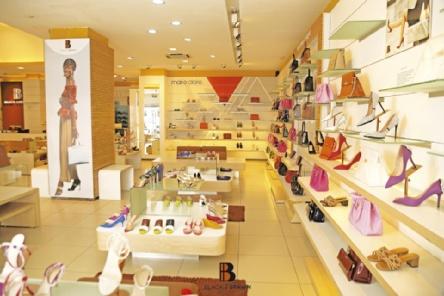
tion capacity and a solid financial base.
We started with volume footwear to then raise the quality, research and creativity and direct ourselves, with our brands, towards a high-end market with a strong African soul. We want to create and offer consumers distinctive products that reflect our unique cultural realities. Of course it is not easy to industrialise a traditionally artisanal production, but we are working in this direction.
Goingbacktoyoursourcingactivity,whicharethesupplier countries you prefer to buy from?
Initially, we mainly bought from China, but with the advent of Covid and the consequent delays in supply, and due to some problems we had with leather products, we looked for alternatives, such as Malaysia and Vietnam.
Then, in our quest to offer high quality finished products, we turned to Italian manufacturers. Italy is now our preferred choice for the production of mid-high-end accessories, while for the medium level we focus mainly on China while we explore new sources in Sapin, Portugal and Brazil. This is why a trade fair like Expo Riva Schuh & Gardabags represents for us an appointment not to be missed, where we can find manufacturers from all over the world, offering very varied product types and price ranges.
91 Market
When colors speak
Chi ha detto che in inverno non ci si possa concedere un po’ di colore, qualche spunto fuori dalle righe. E allora se anche nella stagione fredda è possibile uno spunto vitale questo lo si applica a ogni tipologia di scarpa: dalla sneaker, scelta scontata, alle meno ovvie decolleté o mocassini super classici fino ai moon boot modaioli.



Who said that in winter you can’t indulge in a little color, some cues outside the lines. So, if even in the cold season a vital cue is possible this is applied to every type of shoe: from the sneaker, an obvious choice, to the less evident pumps or super classic loafers, to the fashionable moon boots.


92
FW 23-24
IACOBELLA
CUPLE PASSION BLANCHE
PONS QUINTANA AZAREY
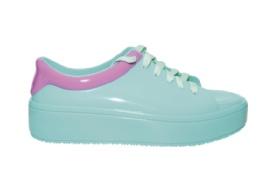


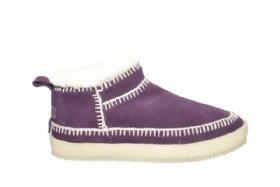
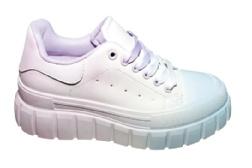



93
ALL ABOUT YOU
When colors speak SMF
COLORS OF CALIFORNIA LAIDBACK LONDON
VICTORIA
LOLA CASADEMUNT BY MAITE
DISORDER
DISORDER
COLORS OF CALIFORNIA
Let’s play
Grafiche ben evidenti, talvolta estreme, rendono queste proposte particolarmente giocose nell’approccio ai prossimi trend. Oltre alle disegnature più o meno geometriche, sono ancora una volta i colori a rafforzare un mood decisamente originale, non per tutti.
Well-evident, sometimes extreme graphics make these proposals particularly playful in their approach to upcoming trends. In addition to the more or less geometric designs, it is once again the colors that reinforce a decidedly original mood, not for everyone.





94
FW 23-24
YAN SHUANG
L4K3 ONE & ONE
DANSKO EBARRITO





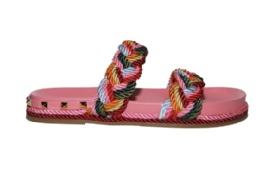


95
Let’s play
LOLA CASADEMUNT BY MAITE
EXE EXE
CALLA CUPLE
LA MILANESA
G.H. BASS & CO.
GABRIELA VLAD
Off the ground

I volumi alti, importanti, sovradimensionati, quelli che ti staccano da terra e regalano centimetri possono risultare ben evidenti e aggressivi, ma anche nascondersi un poco, puntare su un aspetto minimalista, a patto che si stacchi da terra.
Tall, important, oversized volumes, those that take you off the ground and give centimeters can be eye-catching and aggressive, but also hide themselves a little, aiming for a minimalist look, as long as it is off the ground.

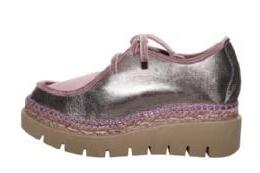

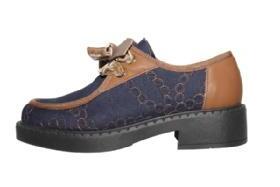
96
FW 23-24
CIVICO 93
GAIMO KONTESSA
JUNCAL AGUIRRE JUNCAL AGUIRRE
Off the ground





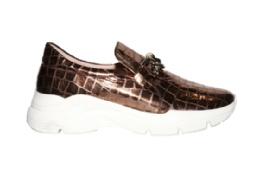
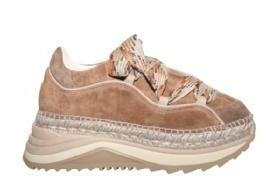

97
LOLA CASADEMUNT BY MAITE
MONTE SPORT ARGILLA
PONS QUINTANA
JUNCAL AGUIRRE
GAIMO
SMF ALL ABOUT YOU
DANIELA SHOES
Warm and cozy

Lana e pelliccia, ma anche velluti corposi. Sono questi i materiali prediletti da calzature e pelletteria per avvolgere l’atmosfera invernale in un mood caldo e rassicurante. Talvolta basta solo qualche dettaglio, talaltra si punta su accenti di colore. L’accostamento di materiali differenti è anch’esso molto apprezzato. È sempre un tocco di eleganza.
Wool and fur, but also full-bodied velvets. These are the materials favored by footwear and leather goods to wrap the winter atmosphere in a warm and comforting mood. Sometimes just a few details are enough, sometimes the focus is on color accents. The combination of different materials is also popular. It is always a touch of elegance.


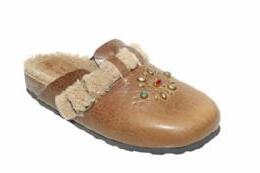


98 FW 23-24
IACOBELLA
IACOBELLA
CHEVILLE
MARIANNA MAZZA
DUCA D’ASCALONA POST & CO
Warm and cozy
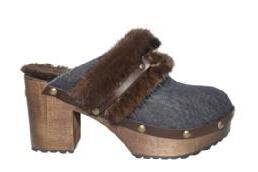
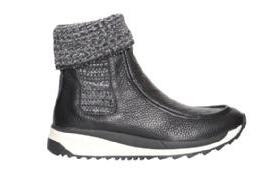






99
VIAMAIL BAG
LO ZOCCOLAIO GAIMO
GAIMO CUPLE
GABRIELA VLAD
POST & CO MONTE SPORT
Focus su Danimarca e mercato scandinavo
Come Camera di Commercio ci occupiamo di supportare le imprese italiane sul mercato scandinavo, promuoviamo il Made in Italy e consigliamo le aziende danesi che cercano collaborazioni, come spesso avviene nell’ambito del settore moda, per produzioni conto terzi o per forniture, afferma Luca Cavinato. “Pur essendo la Danimarca un paese molto piccolo, rappresentiamo sul territorio la prima o la seconda Camera di Commercio in ordine di grandezza su scala mondiale, con uno staff di 22 persone. Siamo l’unica Camera di Commercio dislocata su due uffici, uno a Copenaghen e uno a Roma. Operiamo, inoltre, nei paesi scandinavi in cui non esiste una Camera di Commercio italiana, vale a dire Finlandia e Norvegia”.

Qual è la situazione del mercato della moda, in particolare degli accessori, nel mondo scandinavo?
Abbiamo incontrato Luca Cavinato
- Vice Segretario Generale della Camera di Commercio Italiana in Danimarca - per approfondire con lui questo mercato così importante e dall’elevato potere d’acquisto, oltre che tradizionalmente attento al tema della sostenibilità.
A partire dal dopoguerra in avanti, il mercato del tessile e della moda nei paesi scandinavi ha conosciuto un forte sviluppo, prima in ambito locale e poi internazionale. La Danimarca, in particolare, ha molti brand affermati su scala mondiale e ha ricoperto per decenni un ruolochiave nel settore della pellicceria (e degli accessori in pelliccia), settore che nel corso degli ultimi 10 anni è via via entrato in crisi, fino ad essere completamente abbandonato con l’avvento della pandemia.
Nel corso degli anni, inoltre, si è delineato e affermato anche a livello internazionale uno ‘stile nordico’ che ritroviamo in diversi settori - dal design alla moda, alla cucina -, caratterizzato da concetti come funzionalità, semplicità, linearità, minimalismo e attenzione alla salute dell’uomo e dell’ambiente. Guardando ai giorni nostri, nel 2021 la Danimarca ha registrato due record per quanto riguarda l'abbigliamento e gli accessori, con esportazioni per un valore di oltre 4 miliardi di euro e vendite complessive in Danimarca per oltre 6 miliardi di euro. Anche il consumo di abbigliamento e accessori in Danimarca è aumentato.
100 Market
Luca Cavinato
Così come sono in aumento le importazioni dall'Italia, che registrano una crescita graduale, ma continua. Il mercato danese, come in generale i mercati scandinavi, restano ancor oggi – nonostante l'inflazione e le crisi energetiche - mercati tradizionalmente ad alta capacità di spesa e con bassissima disoccupazione. Quindi ottimi mercati a cui rivolgersi per l’export italiano.
Come è cambiata la situazione dopo l’avvento del Covid?
La Danimarca è un paese che produce poco al suo interno, soprattutto nel settore moda, e con un elevato costo del lavoro, il che porta molti brand a rivolgersi all'estero per la produzione, in particolare ai paesi a basso costo dell'estremo oriente (Cina, Vietnam, Bangladesh). Con l’avvento del Covid, le chiusure in estremo oriente e le difficoltà nei trasporti, molti brand scandinavi hanno deciso di riportare parte della loro produzione ‘a casa’, anche in considerazione di una crescente pressione del mercato riguardo le tematiche di sostenibilità ambientale e sociale. In realtà, più che nei paesi scandinavi, molta parte della produzione sta tornando in Europa (in particolare in Turchia, Portogallo, Italia, Germania), il che rappresenta una considerevole opportunità per le imprese italiane, per la loro capacità di offrire prodotti di alta qualità a prezzi concorrenziali. Si tratta di un trend che ha interessato prima i big player e, poi, anche i brand mediograndi. Il Covid ha, inoltre, accelerato l’espansione delle vendite online, favorite dal fatto che la Danimarca, e la Scandinavia in generale, è una delle zone più sviluppate al mondo in termini di logistica e commercio su strada, con consegne veloci e sicure, oltre che con una politica di tutela del consumatore che senza dubbio ha favorito lo sviluppo dell’e-commerce.
Nel commercio online ci sono dei player locali particolarmente rilevanti?
In Danimarca non abbiamo Amazon, ma sono presenti diversi e importanti player locali, come Boozt, che si occupa di abbigliamento e articoli per la casa, e grandi catene o magazzini che operano anche online come Magasin du Nord, Selling, Ilum (di proprietà del Gruppo LaRinascente).
Quale tipologia di prodotto è più ricercata dai buyer di Danimarca, Svezia, Finlandia e Norvegia?
Se dovessi tracciare una linea rossa che abbracci tutti i prodotti moda - dall’abbigliamento all’accessorio, per
uomo come per la donna – questa è sicuramente la funzionalità, l'affidabilità del prodotto, la sostenibilità, ma anche il rapporto qualità/prezzo e la possibilità di personalizzazione. In particolare, sul tema della funzionalità, va detto che il consumatore scandinavo è molto più informale rispetto a quello italiano. In generale, si predilige uno stile casual, minimale, pratico, adatto a più occasioni della giornata e della vita quotidiana, e che tenga in considerazione le esigenze climatiche, caratterizzate da un tempo atmosferico sempre molto variabile e piovoso. Gli scandinavi, inoltre, trascorrono molto tempo all’aria aperta, nonostante la pioggia frequente, e l’abbigliamento deve permettere loro di sentirsi sempre a proprio agio. ‘Non esiste il cattivo tempo, ma solo cattivi vestiti’, affermano in Danimarca!
Ha già accennato al tema della sostenibilità, confermando come sia più sentito nel Nord Europa rispetto ad altre parti del mondo. Può dire qualcosa in più a proposito?
La Scandinavia ha da decenni messo al centro del dibattito politico ed economico la sostenibilità, favorendo la cultura green per la protezione della salute dell’uomo e dell’ambiente, ma anche interpretandola come opportunità di business per le imprese. Già negli anni Ottanta, ad esempio, era all’avanguardia per il riciclo di plastica, vetro ecc. Per quanto riguarda nello specifico il settore moda, diverse ricerche hanno dimostrato che anche nel commercio online il consumatore scandinavo premia i prodotti sostenibili ed etici, attenti al benessere dei lavoratori, che non sfruttano manodopera minorile ecc. Così come ha avuto uno sviluppo importante, anche nella moda, il tema biologico: prodotti bio e naturali, certificati da etichette come la popolare Nordic Swan Ecolabel.

101 Market
Perché Expo Riva Schuh & Gardabags rappresenta una piattaforma di business interessante per i compratori scandinavi?
Il Made in Italy - inteso in un’accezione globale di moda, design, cucina - è molto amato in Scandinavia e i consumatori scandinavi apprezzano la qualità e l’artigianalità della moda e degli accessori italiani. Inoltre, Expo Riva Schuh è una piattaforma dal carattere fortemente internazionale che propone, accanto alle aziende italiane, molte aziende estere e dal Far East. Un aspetto che la rende sicuramente molto interessante per gli operatori scandinavi che, come ho già evidenziato, realizzano la maggior parte della loro produzione al di fuori del paese, dove trovano costi del lavoro più bassi. Infine, ma non meno importante, l’Italia rappresenta la seconda destinazione turistica per i danesi e il Lago di Garda è una delle mete privilegiate e più amate.
Focus on Denmark and the Scandinavian market

We met Luca Cavinato - Deputy Secretary General of the Italian Chamber of Commerce in Denmark - to discuss with him this important market with its high purchasing power, as well as its traditional focus on sustainability.
"As a Chamber of Commerce we are involved in supporting Italian companies on the Scandinavian market, promoting Made in Italy and advising Danish companies looking for collaborations, as is often the case in the fashion industry, for contract production or supplies," says Luca Cavinato.
"Although Denmark is a very small country, we represent the first or second largest Chamber of Commerce in the world, with a staff of 22. We are the only Chamber of Commerce with two offices, one in Copenhagen and one in Rome. We also operate in the Scandinavian countries where there is no Italian Chamber of Commerce, namely Finland and Norway.
What is the situation of the fashion market, particularly for accessories, in the Scandinavian world?
From the post-war period onwards, the textile and fashion market in the Scandinavian countries has developed strongly, first locally and then internationally. Denmark, in particular, has many globally established brands and has played a key role in the fur industry (and fur accessories) for decades, a sector that has gradually entered a crisis over the last 10 years, until it was completely abandoned with the advent of the pandemic.
Over the years, a 'Nordic style' has also emerged and established itself internationally, which we find in various sectorsfrom design to fashion to the kitchen -, characterised by concepts such as functionality, simplicity, linearity, minimalism and attention to human and environmental health. Looking at the present day, in 2021 Denmark set two records for clothing and accessories, with exports worth over EUR 4 billion and total sales in Denmark of over EUR 6 billion. The consumption of clothing and accessories in Denmark has also increased. So have imports from Italy, which are growing gradually but steadily. The Danish market, like the Scandinavian markets in general, still remain - despite inflation and energy crises - tradi-
102 Market
tionally high-spending markets with very low unemployment. Therefore excellent markets to turn to for Italian exports.
HowhasthesituationchangedsincetheadventofCovid?
Denmark is a country with little production lining, especially in the fashion sector, and high labour costs, which leads many brands to turn abroad for production, especially to the low-cost countries of the Far East (China, Vietnam, Bangladesh). With the advent of Covid, the closures in the Far East and the difficulties in transport, many Scandinavian brands have decided to bring part of their production 'back home', also in view of increasing market pressure regarding environmental and social sustainability issues. In fact, more than in the Scandinavian countries, much of the production is returning to Europe (particularly Turkey, Portugal, Italy, Germany), which represents a considerable opportunity for Italian companies, due to their ability to offer high quality products at competitive prices. This is a trend that first interested the big players and then also the medium-large brands. Covid has also accelerated the expansion of online sales, favoured by the fact that Denmark, and Scandinavia in general, is one of the most developed areas in the world in terms of logistics and road trade, with fast and safe deliveries, as well as a consumer protection policy that has undoubtedly favoured the development of e-commerce.
Are there any particularly relevant local players in online trade?
In Denmark we do not have Amazon, but there are several important local players, such as Boozt, which deals in clothing and household goods, and large chains or stores that also operate online such as Magasin du Nord, Selling, Ilum (owned by the LaRinascente Group).
What type of product is most sought after by buyers in Denmark, Sweden, Finland and Norway?
If I had to draw a red line encompassing all fashion products - from clothing to accessories, for men as well as women - this is definitely functionality, product reliability, sustainability, but also value for money and customisation. In particular, on the subject of functionality, it must be said that the Scandinavian consumer is much more informal than the Italian one. In general, there is a preference for a casual, minimalist, practical style, suitable for several occasions of the day and everyday life, and which takes into account climatic needs, characterised by ever-changing and rainy weather. Scandinavians also spend a lot of time outdoors, despite frequent rain, and clothing must allow them to feel comfortable at all times. 'There is no such thing as bad weather, only bad clothes', they say in Denmark!
You have already mentioned the topic of sustainability, confirming how it is more felt in Northern Europe thaninotherpartsoftheworld.Canyousaysomething more about this?
Scandinavia has put sustainability at the centre of political and economic debate for decades, promoting a green culture for the protection of human health and the environment, but also interpreting it as a business opportunity for companies. Already in the 1980s, for example, it was in the vanguard for recycling plastic, glass, etc. With regard to the fashion sector specifically, several studies have shown that even in online trade the Scandinavian consumer rewards products that are sustainable and ethical, that take care of workers' welfare, that do not exploit child labour, etc. Just as the organic theme has had an important development, also in fashion: organic and natural products, certified by labels such as the popular Nordic Swan Ecolabel.
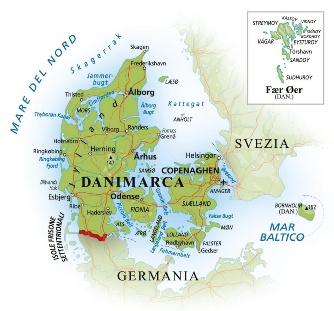
Why does Expo Riva Schuh & Gardabags represent an interesting business platform for Scandinavian buyers?
Made in Italy - understood in a global sense of fashion, design, cuisine - is very popular in Scandinavia and Scandinavian consumers appreciate the quality and craftsmanship of Italian fashion and accessories. Furthermore, Expo Riva Schuh is a platform with a strongly international character that offers, alongside Italian companies, many companies from abroad and the Far East. An aspect that certainly makes it very interesting for Scandinavian operators who, as I have already pointed out, carry out most of their production outside the country, where they find lower labour costs. Last but not least, Italy is the second most popular tourist destination for the Danes, and Lake Garda is one of the most popular.
103 Market
Lucky Shoes: timing perfetto e
dell’offerta i tratti vincenti di ERS
Lucky Shoes è una storica catena di negozi, creata nel 1919 ad Akron, e che oggi conta su 14 punti vendita di calzature per tutta la famiglia localizzati nello Stato dell’Ohio, in USA. In particolare, scarpe sportive e scarpe comode con un tocco di moda. Abbiamo incontrato, a Expo Riva Schuh di gennaio 2023, John Luck, discendente del fondatore, che ci ha fornito un interessante fermo immagine dell’attuale mercato statunitense e, in particolare, dello Stato dell’Ohio.
Qual è la situazione del vostro mercato di riferimento?
La nostra clientela ama ancora avere un bell'aspetto, ma al contempo non vuole più rinunciare a sentirsi bene e al massimo comfort. Quindi, come si faceva un tempo, partiamo ancora da un’analisi del piede per consigliare la calzatura più adeguata e al contempo dall’estetica capace di soddisfare il cliente e il suo bisogno di presentarsi con un look curato.

Quale tipo di prodotto cercate per i vostri avventori?
Come dicevo, sono alla ricerca di calzature che facciano stare bene il piede ma che, allo stesso tempo, presentino caratteristiche fashion. Cerchiamo soprattutto scarpe da donna, ma in fiera a Riva del Garda ho trovato anche un'ottima linea di calzature da uomo.
Quali sono i Paesi fornitori più interessanti per voi?
Beh, naturalmente l'Italia, ma a Expo Riva Schuh abbiamo trovato proposte interessanti anche da parte di aziende brasiliane, portoghesi e turche. Un aspetto che mi ha particolarmente colpito è che, a differenza degli Stati Uniti, le aziende con cui siamo entrati in contatto si sono tutte dimostrate molto flessibili e disponibili a venirci incontro rispetto a particolari richieste, come la possibilità di cambiare un colore o modificare un dettaglio. Un aspetto che ci permette di offrire un prodotto speciale ai nostri clienti.
E per la prossima stagione invernale, verso quale tipologia di prodotto vi orientate?
Siamo alla ricerca di proposte che non sono disponibili
104 Market
varietà
La storica catena di negozi dell’Ohio conferma come le date anticipate sul calendario fieristico e la varietà dell’offerta facciano della fiera di Riva del Garda l’appuntamento di riferimento per la calzatura anche per il mercato statunitense.
LUCKY Lucky Shoes:
perfect timing and variety of offerings the winning traits of ERS
negli Stati Uniti: mix di materiali, come pelle, nabuk, tessuti, ma anche colori… Qualcosa di unico, interessante e diverso. Per il prossimo inverno, in particolare, siamo focalizzati su quelle che appaiono le tendenze dominanti, quindi stivali, chunky soles e un’ampia varietà di sneaker. Le nostre donne sono in generale più orientate alla moda, mentre gli uomini sono più conservatori negli Stati Uniti. Richiedono qualità, vestibilità e comfort.
Qual è la sua valutazione dell’evento fieristico Expo
Riva Schuh?
In fiera ho visto molte nuove proposte, diverse e accattivanti, e la fiera è ben organizzata e facile da visitare. Inoltre, non si può non sottolineare la bellezza del luogo, incastonato fra un magnifico lago e splendide montagne! In un contesto così spettacolare, è facile e piacevole lavorare! Siamo così entusiasti che di sicuro torneremo anche per la prossima stagione.
Che cosa apprezzate di più della manifestazione?
Senza dubbio è fondamentale il timing, perché poter vedere le nuove collezione con un buon anticipo, richiedere eventuali modifiche e assicurarsi che siano in negozio nelle date utili, è molto importante. Dopo il Covid, con le varie interruzioni della catena di approvvigionamento, abbiamo avuto molte difficoltà a far arrivare i prodotti stagionali in negozio in tempo per la stagione. Il che ci ha creato non pochi problemi, tanto più che l'Ohio ha due stagioni di riferimento, l’inverno e l’estate, mentre la primavera e l’autunno sono spesso brevi e poco significative. Per questo è per noi fondamentale una fiera come Expo Riva Schuh, che apre la stagione moda e permette di visionare le collezioni con ampio anticipo.
The historic Ohio-based chain of stores confirms how the early dates on the trade show calendar and the variety of offerings make the Riva del Garda trade show the benchmark footwear event for the U.S. market as well.
Lucky Shoes is a historic chain of stores, established in 1919 in Akron, and now has 14 family footwear outlets located in the state of Ohio, USA. Specifically, sports shoes and comfortable shoes with a fashionable twist. We met, at Expo Riva Schuh in January 2023, John Luck, a descendant of the founder, who gave us an interesting freeze frame of the current U.S. market and, in particular, the state of Ohio.
What is the situation in your target market?
Our clientele still likes to look good, but at the same time they no longer want to give up feeling good and maximum comfort. So, as it used to be done in the old days, we still start with an analysis of the foot to recommend the most appropriate footwear and at the same time the aesthetics able to satisfy the customer and his need to present himself with a well-groomed look.
SHOES
105 Market
What type of product are you looking for your patrons?
As I said, I am looking for footwear that makes the foot feel good but at the same time has fashionable features. We mainly look for women's shoes, but at the fair in Riva del Garda I also found a very good line of men's footwear.
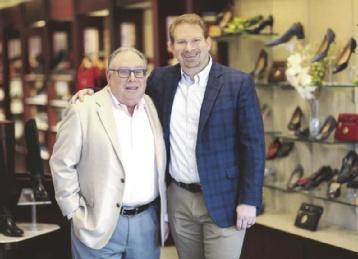
What are the most interesting supplier countries for you?
Well, Italy of course, but at Expo Riva Schuh we also found interesting proposals from Brazilian, Portuguese and Turkish companies. One aspect that particularly impressed me was that, unlike in the United States, the companies we came into contact with were all very flexible and willing to meet us with respect to particular requests, such as the possibility of changing a color or modifying a detail. An aspect that allows us to offer a special product to our customers.
And for the coming winter season, what type of product are you leaning toward?
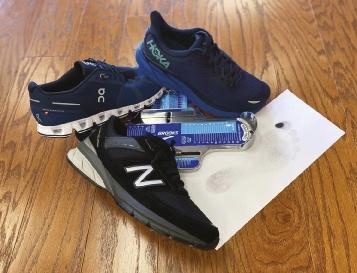
We are looking for proposals that are not available in the United States: mixes of materials, such as leather, nubuck, fabrics, but also colors... Something unique, interesting and different. For next winter, in particular, we are focused on what appear to be the dominant trends, so boots, chunky soles and a wide variety of sneakers. Our women are generally more fashion-
oriented, while men are more conservative in the United States. They demand quality, fit and comfort.
What is your assessment of the Expo Riva Schuh trade show event?
At the fair, I saw many new, diverse and eye-catching proposals, and the fair is well organized and easy to visit. In addition, one cannot fail to emphasize the beauty of the location, nestled between a magnificent lake and beautiful mountains! In such a spectacular setting, it is easy and pleasant to work! We are so excited that we will certainly come back for the next season as well.
What do you appreciate most about the event?
Undoubtedly the timing is key, because being able to see the new collections well in advance, request any changes, and make sure they are in the store on the useful dates is very important. After Covid, with the various supply chain disruptions, we had a lot of difficulty getting seasonal products into the store in time for the season. Which has created quite a few problems for us, especially since Ohio has two core seasons, winter and summer, while spring and fall are often short and insignificant. This is why a trade show like Expo Riva Schuh, which opens the fashion season and allows us to view the collections well in advance, is crucial for us.
106 Market
Il mondo delle calzature per bambini: quali i modelli più in voga
All’interno del variegato mondo della calzatura trova un posto speciale il settore bambino che, se da una parte segue tendenze comuni a quello dell’adulto, dall’altra vive di regole proprie. Dunque, qual è la situazione attuale nel mercato del bambino e quali sono i modelli di scarpa maggiormente richiesti in questo momento? Abbiamo approfondito l’argomento grazie al punto di vista di sei aziende che si dedicano ai prodotti Kids: Luck Company (Cina), Pablosky (Spagna), KTrend (Cina), Klin (Brasile), Orion Group (Italia) e Coriex (Italia).
Di nuovo in crescita il settore delle calzature per bambini. Gli espositori intervenuti a Expo Riva Schuh & Gardabags parlano di ottimismo per il futuro, di novità riguardo ai prodotti e di modelli ibridi destinati a varie occasioni di utilizzo.


Coriex
LA
SITUAZIONE
ATTUALE NEL MERCATO DELLE CALZATURE PER BAMBINI
Partendo dal presupposto che tutto il mercato sta soffrendo negli ultimi anni, facendo riferimento al settore delle calzature, forse il mercato del bambino soffre meno rispetto a quello dell’adulto. Secondo Pablosky “la situazione è abbastanza buona perché i bambini sono in costante fase di crescita, perciò hanno spesso necessità di nuove scarpe. Inoltre, secondo la nostra esperienza, i genitori sono più propensi a prestare un occhio di riguardo per le esigenze dei figli e a cercare l’abbinamento perfetto tra abiti e calzature quasi più per loro che per sé stessi. Per noi significa lavorare in un mercato in salute”.
D’altra parte, per ovviare alla necessità di calzature diverse per occasioni differenti “i consumatori si stanno dirigendo verso prodotti ibridi, ovvero scarpe che possano essere utilizzate in differenti situazioni, sia in città che per delle escursioni”, come afferma Orion Group.
È opinione comune, tra gli operatori intervistati, che la situazione del comparto sia in ripresa, se messa a confronto con i tre anni appena trascorsi. Luck Company afferma:
“Con la riapertura della Cina e la ritrovata possibilità di viaggiare e fare affari, siamo più ottimisti riguardo un futuro in crescita del mercato”. Concorda K-Trend che aggiunge: “Dopo tre anni siamo finalmente tornati ad
107 Sourcing
esporre a Expo Riva Schuh & Gardabags, un fatto che, oltre a renderci felici, dimostra come la situazione stia tornando alla normalità. O meglio, a una nuova normalità in cui fiere come questa rappresentano l’occasione per mantenere rapporti personali e dar vita a ulteriori occasioni di business”.

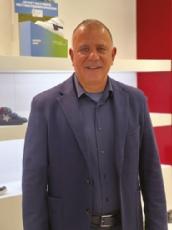
I MODELLI DI CALZATURA MAGGIORMENTE RICHIESTI IN QUESTO MOMENTO
Mantenendo il focus sulla prossima stagione invernale, i modelli più richiesti per maschietti e femminucce sono scarponcini e sneakers. In entrambi i casi si tratta soprattutto di prodotti ibridi che uniscono estetica e specificità tecniche. Per i più piccoli questo si traduce in suole anatomiche e confortevoli in grado di prendersi cura della postura dei bambini sin dai primi passi, senza però dimenticare inserti e colori esteticamente accattivanti. Come il modello presentato da Pablosky (immagine 1), realizzato totalmente in pelle, con un materiale resistente ai graffi e un supporto nella parte del tallone per favorire la camminata. O come il modello di K-Trend (immagine 2): una scarpa molto leggera e semplice da indossare, anche grazie alla comoda chiusura a strappo. Caratteristiche simili vanta il modello di Klin (immagine 3), che punta sulla comodità di utilizzo e sul benessere plantare del bambino. Per i bambini/e dai dieci fino ai ragazzini/e di quindici anni, sono richieste calzature che possano essere utilizzate in città, per andare a scuola, oppure nelle attività all’aperto. I modelli presentati da Orion Group (immagine 4) sono calzature all’avanguardia studiate per un utilizzo sportivo così come per quello cittadino, presentano una membrana termica che le rende adatte alle basse temperature e alla neve, grazie alla suola Vibram che permette prestazioni di carattere superiore. Ma il dettaglio estetico non può mancare, coma si può notare anche dal modello


femminile di Luck Company (immagine 5), che presenta inserti luminosi di paillettes o brillantini.
La situazione è un po’ diversa per Coriex che lavora con marchi in licenza e si occupa di uno sviluppo trasversale di prodotto, dalla calzatura (immagine 6) all’accessorio. “Non abbiamo una tipologia di scarpa più richiesta rispetto ad altre. La nostra prerogativa più importante, oltre a realizzare prodotti di qualità e in linea con le tendenze del mercato, è andare alla ricerca di personaggi dei cartoni animati che sono un riferimento per i più piccoli e a cui sono più affezionati”.
Within the variegated world of footwear, the children's sector has a special place, which, while on the one hand follows trends common to that of adults, on the other hand lives by its own rules. So, what is the current situation in the children's market and which shoe models are in greatest demand at the moment? We delved into this topic from the point of view of six companies dedicated to Kids products: Luck Company (China), Pablosky (Spain), K-Trend (China), Klin (Brazil), Orion Group (Italy) and Coriex (Italy).
108 Sourcing
The world of children's footwear: which models are most in demand
The children's shoe sector is growing again. Exhibitors at Expo Riva Schuh & Gardabags speak of optimism for the future, new products and hybrid models for various uses.
Pablosky (Spagna)
Luck Company (Cina)
Orion Group (Italia) Coriex (Italia)
THE CURRENT SITUATION IN THE CHILDREN'S FOOTWEAR MARKET

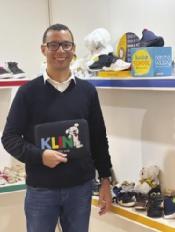
Assuming that the whole market has been suffering in recent years, referring to the shoe sector, perhaps the children's market suffers less than the adult market. According to Pablosky, “the situation is quite good because children are constantly growing, so they often need new shoes. Also, in our experience, parents are more likely to pay attention to their children's needs and look for the perfect match between clothes and shoes almost more for them than for themselves. For us, this means working in a healthy market”.
On the other hand, to obviate the need for different footwear for different occasions, "consumers are moving towards hybrid products, i.e. shoes that can be used in different situations, whether in the city or for outings" as Orion Group puts it. There is a consensus among the operators interviewed that the situation in the industry is on the upswing compared to the past three years. Luck Company says: “With the reopening of China and the newfound possibility to travel and do business, we are more optimistic about a growing future for the market”. Agrees K-Trend who adds: “After three years we are finally back to exhibiting at Expo Riva Schuh & Gardabags, a fact that not only makes us happy but also shows how the situation is returning to normal. Or rather, to a new normality in which trade fairs like this represent an opportunity to maintain personal relationships and create further business opportunities”.

THE FOOTWEAR MODELS MOST IN DEMAND AT THE MOMENT
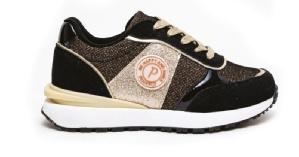
Keeping the focus on the coming winter season, the most popular models for boys and girls are boots and sneakers. In both cases these are mainly hybrid products that combine aesthetics and technical specificities. For little ones, this translates into anatomical and comfortable soles that take care of children's posture from the very first steps, without forgetting aesthetically appealing inserts and colours. Such as the model presented by Pablosky (image 1), made entirely of leather, with a scratch-resistant material and a support in the heel area to facilitate walking. Or like the model by K-Trend (image 2): a very light shoe that is easy to wear, also thanks to its convenient strap closure. Similar features boast the Klin model (image 3), which focuses on wearing comfort and the child's foot well-being.

For children aged ten to fifteen, footwear is required that can be used in the city, on the way to school, or in outdoor activities. The models presented by the Orion Group (image 4) are stateof-the-art footwear designed for sports as well as city use. They feature a thermal membrane that makes them suitable for low temperatures and snow, and a Vibram sole that allows for superior performance. But the aesthetic detail is not to be missed, as can also be seen in the women's model by Luck Company (image 5), which features shiny inserts of sequins or glitter.
The situation is somewhat different for Coriex, which works with licensed brands and deals with cross product development, from footwear (image 6) to accessories. "We do not have one type of shoe that is more in demand than others. Our most important prerogative, in addition to making quality products in line with market trends, is to go in search of cartoon characters that are a reference for the little ones and to which they are most attached".

109 Sourcing
K-Trend Orion Group Pablosky
K-Trend (Cina) Klin (Brasile)
Luck Company
Should be classic?
Un richiamo alla terra, sia nelle tonalità che nelle texture, accompagna questi materiali capaci di trasmettere un gusto elegante pur se con un tocco antico, quasi primitivo. Il cuoio fornisce una dimensione naturale che ben si sposa con questo mood.
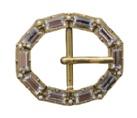

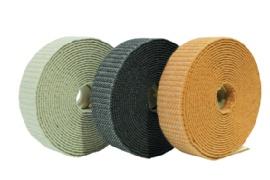
A reminder of the earth, both in hues and textures, accompanies these materials capable of conveying an elegant taste even if with an ancient, almost primitive touch. Leather provides a natural dimension that goes well with this mood.



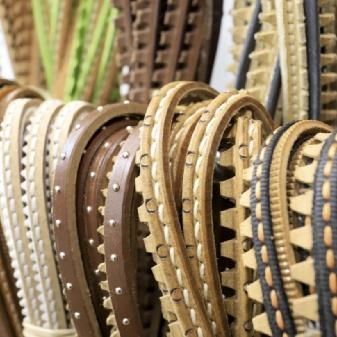
SS24
Accessories RIFRA NASTRI Accessories SOPREFA AccessoriesCIMITALY Accessories F. & G. LeatherBONAUDO LeatherFISAP PELLAMI
LeatherLEATHERS MALAIGIA

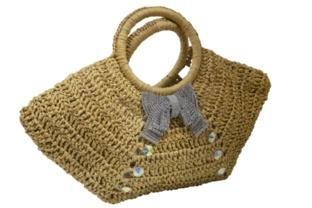

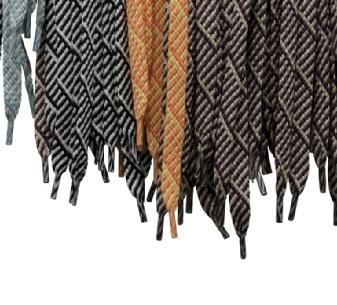
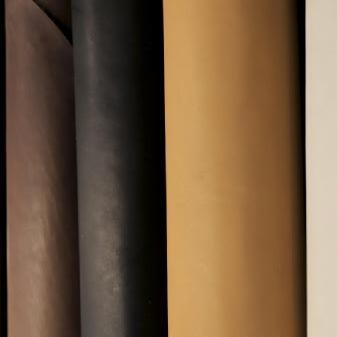

LeatherPRIANTE CONCERIA
LeatherCARBIPEL

GAIERA GIOVANNI
LeatherCONCERIA
LeatherDIMAR CONCERIA

111
Should be classic?
Accessories PUNTO FIBBIA
Accessories PRETALASER
FIUME GROUP
Accessories
Free hand in motion

Good colors, good floral details, good surfaces moved by lines and graphics in which repetition and randomness create agile and sometimes frenetic paths of style. If it is dynamism you seek for your products, these are the materials and accessories to look to.





Bene i colori, bene i dettagli fiorati, bene le superfici mosse da linee e grafiche in cui ripetizione e casualità creano percorsi di stile agili e talvolta frenetici. Se è dinamicità che si cerca per i propri prodotti, sono questi i materiali e gli accessori a cui guardare.

112
SS24
VALTER MaterialVEGA Accessories MODIMEX ACCESSORI Accessories GAMAR ITALIA AccessoriesTM SERVICE MaterialIMTEX
Accessories
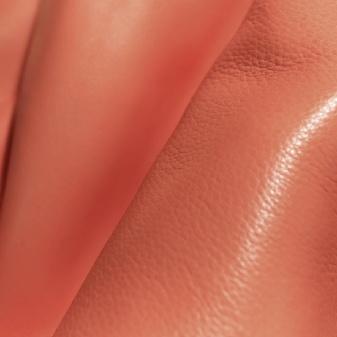







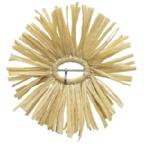

113 Free hand in motion leatherPOLARIS Accessories INDUSTRIE CHIMICHE FORESTALI SERENA CECCHINI DESIGN Accessories MODIMEX ACCESSORI Material CORONET Accessories SERENA CECCHINI DESIGN LeatherGRUPPO PACCAPELO MaterialCOLOR-DECdistributedbyDAAT+T
Fresh metal
Riflessi, luminosità, superfici lunari metallizzate. L’arte di catturare la luce per poi restituirla con stile connota sem pre proposte affascinanti, intente a incantare e stupire. Quando ci si abbina il colore, il gioco è fatto!


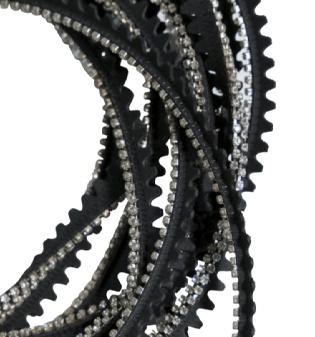

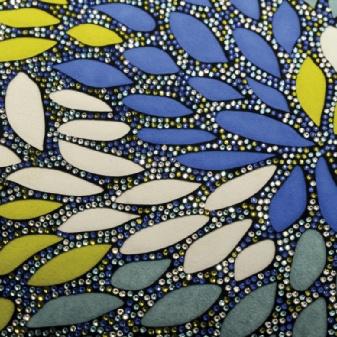
Reflections, brightness, metallic moon surfaces. The art of capturing light and then returning it in style always connotes fascinating proposals, intent on enchantment and amazement. When you match color with it, you’re done!
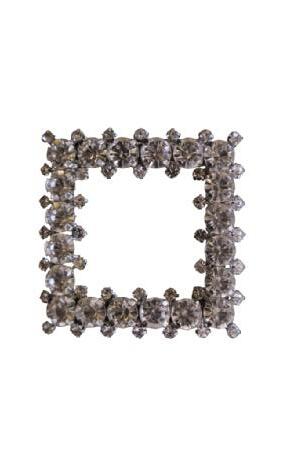
114
SS24 Accessories E.M. COMPANY Accessories PRETALASER MaterialITALIAN CONVERTER Accessories TRE BI MaterialIMTEX MaterialGIARDINI
AccessoriesCIMITALY MaterialTRIO



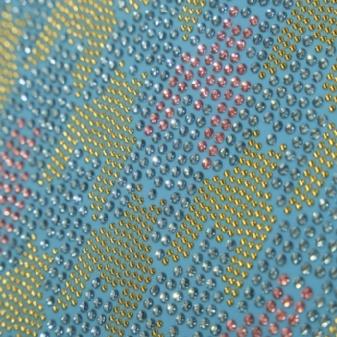

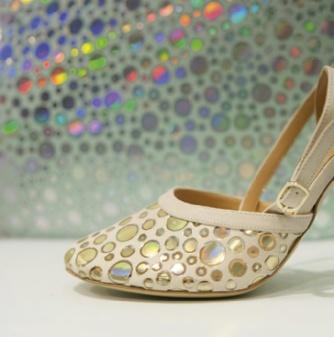

Accessories MAYSUN TRADING
LeatherNEWLIFE
Accessories MODIMEX ACCESSORI
Accessories CIM ITALY

Accessories
FREEMAN
LeatherITALIANA
PELLAMI
115
metal
Fresh
Pump UP
Perché continuare a pensare la moda in due dimensioni quando si possono cercare volumi più movimentati e interessanti, sia grazie a sovrapposizioni, rigonfiamenti, ma anche grazie all’applicazione di borchie, perline e molto altro. Qui la fantasia gioca in casa.


Why continue to think fashion in two dimensions when you can look for more animated and interesting volumes, either thanks to overlays, bulges, but also thanks to the application of studs, beads and more. This is where fantasy plays at home.
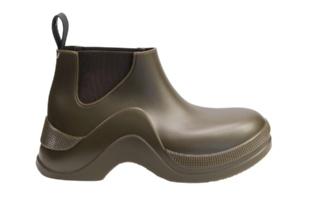



116
SS24 AccessoriesLABEL SYSTEM Material CORONET
ANTONELLI RICAMIFICIO
Accessories MARESCA Accessories MENONI
Accessories
MaterialNOVAEMME
AccessoriesE.M. COMPANY


Accessories O.V.A.C.
AccessoriesIDEA RICAMO

Accessories
FASHION HARDWARE



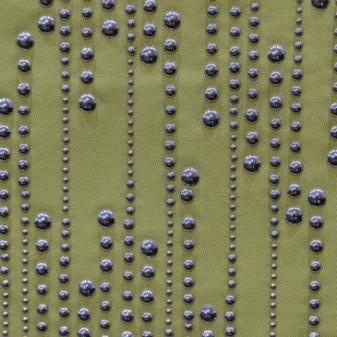
Accessories CENTRO ACCESSORI
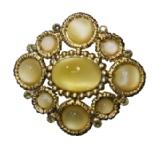

AccessoriesLUSI
AccessoriesLASERTEAM

117
Pump UP
Smart tech
Si respira aria di futuro, di film di fantascienza, vuoi per le forme, vuoi per i colori. In realtà è tutto molto attuale con quel tocco di domani che può rendere un look un po’ più visionario.



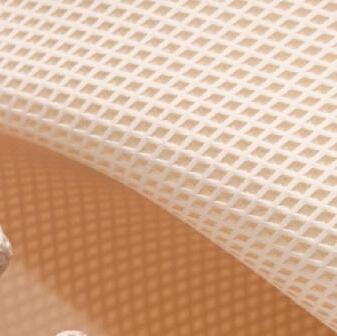

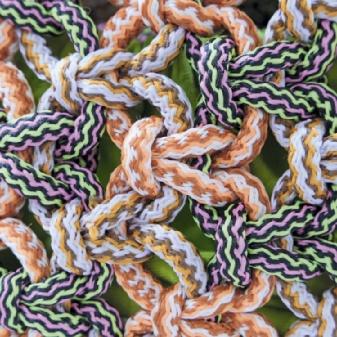

One breathes an air of the future, of science fiction movies, whether it’s the shapes or the colors. Actually, it’s all very current with that touch of tomorrow that can make a look a little more visionary.
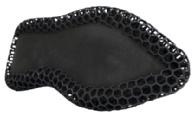
118
SS24 AccessoriesDA.MI.-DLAB4.0 AccessoriesARPEX TEXTILES Sole ROSSO & NERO MaterialTRIO Material OMNIPEL TECHNOLOGIES Accessories LABAM
Fluo time
C’è spazio anche per colori molto accesi, per disegni e tonalità fluo che regalano un sapore sempre molto particolare e sportiveggiante ai prodotti. L’applicazione può essere a mano libera o molto più geometrica.
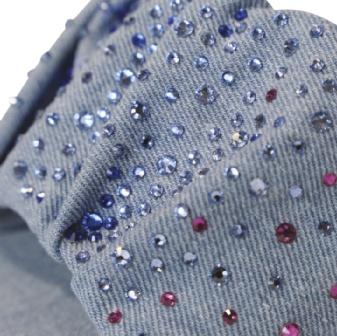

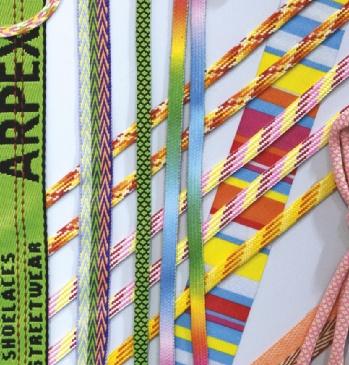


There is also room for very bright colors, designs and fluorescent shades that always give a very special and sporty flavor to the products. The application can be freehand or

119
Accessories O.V.A.C. MaterialGIARDINI AccessoriesARPEX TEXTILES accessories PRODOTTI ALFA AccessoriesTM SERVICE AccessoriesG.S.M.
Haikon
via, abbiamo introdotto anche una linea di ballerine e pantofole per la casa con dusty bag coordinata, che utilizzano materiali naturali, come la lana o la pelle per la tomaia e il caucciù per la suola. Abbiamo anche una piccola collezione di stivali invernali (chelsea boot e stivaletti di linea classica) e sneaker. Ma il nostro core business sono le ballerine estive. La nostra non è una produzione caratterizzata da grandi volumi, ci attestiamo sulle 60mila paia al mese.
Quali sono i vostri clienti di riferimento?
Le piccole catene e le boutique di negozi di calzature e abbigliamento del nord Europa (Austria, Svizzera, Germania). Vendiamo anche in Giappone, particolarmente interessato alla nostra produzione di ballerine in pelle. Produciamo circa il 70 per cento con marchio nostro e il restante per private label.
La ballerina di Haikon Hada
L’azienda spagnola ha presentato in anteprima a Expo Riva Schuh di gennaio la sua nuova collezione di ballerine pocket da viaggio.

La nuova collezione Haikon Hada fa tesoro di una tradizione di alta qualità e lavorazione artigianale che trova proprio nella ballerina il suo modello di riferimento. Ce ne parla José Medina, titolare del brand.
Ci presenta l'azienda?
Haikon Hada nasce nel 2003 in Spagna, dove può contare su due siti di produzione (a Elche e Murcia) ed è specializzata nella produzione di calzature da donna di fascia medio alta (80 - 90 euro al pubblico), in particolare ballerine in vera pelle, dalla lavorazione artigianale. Dopo l'avvento del Covid, tutta-
Quali sono i trend che proponete per la prossima stagione invernale?
La ballerina è un classico della moda, ma noi cerchiamo sempre di introdurre delle novità in termini di linee e colori. Per la prossima stagione la punta arrotondata o quadrata – dall’allure più modaiolo – che sono oggi le soluzioni più richieste; mentre in termini di materiali abbiamo proposto la vernice, i metallizzati, il velour, e dettagli molto femminili come il fiocco piatto sulla punta. I colori di riferimento sono il marrone, il verde, ma anche l'azzurro scuro e il blu. Con questa stagione abbiamo anche lanciato la ballerina pocket, da viaggio, che si arrotola su se stessa grazie alla suola super flessibile e che può essere utilizzata in viaggio oppure da tenere in borsetta, in alternativa al tacco alto, ad esempio, durante la guida dell'auto.
A quali fiere partecipate, oltre a quella di Riva del Garda, e perché Expo Riva Schuh è importante per il vostro business?
Oltre a ERS, prendiamo parte a Micam Milano e a Gallery Shoes a Dusseldorf. Nonostante la fiera di Riva del Garda
120 Sourcing
HADA
sia indirizzata soprattutto alla calzatura di volume, per noi rappresenta un appuntamento molto importante, poiché si tratta di una fiera di respiro internazionale e che inaugura la stagione moda. Qui possiamo entrare in contatto con i buyer di nostro maggior interesse, che grazie al timing anticipato, possono vedere in anteprima la collezione, avanzare eventuali richieste di modifiche, e poi procedere con gli ordini. La fiera resta per noi un'occasione imprescindibile per incontrare la clientela e instaurare rapporti a lungo termine, anche se dopo il Covid abbiamo sviluppato un canale di vendita diretta online, che copre comunque una parte molto marginale del nostro business.
Haikon Hada's ballerina
The Spanish company previewed its new pocket ballerina collection at Expo Riva Schuh in January.
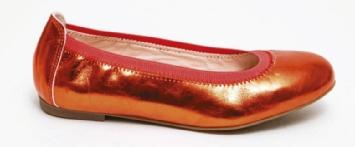
The new Haikon Hada collection treasures a tradition of high quality and craftsmanship that finds its very model in the ballerina. José Medina, owner of the brand, tells us about it.
Can you introduce us to the company?
Haikon Hada was founded in 2003 in Spain, where it can count on two production sites (in Elche and Murcia) and specializes in the production of women's shoes in the medium-high range (80 to 90 euros to the public), particularly ballet flats made of genuine leather, with craftsmanship. After the advent of Covid, however, we also introduced a line of ballerinas and house slippers with matching dusty bag, which use natural materials, such as wool or leather for the upper and rubber for the sole. We also have a small collection of winter boots (chelsea boots and classic line ankle boots) and sneakers. But our core business is summer ballet flats. Ours is not a production characterized by large volumes, we stand at 60 thousand pairs per month.
Who are your target customers?
Small chains and boutique shoe and clothing stores in northern Europe (Austria, Switzerland, Germany). We also sell to Japan, which is particularly interested in our production of leather ballet flats. We produce about 70 percent under our own brand and the rest for private label.
What trends do you propose for the coming winter season?
The ballerina is a fashion classic, but we always try to introduce innovations in terms of lines and colors. For next season the rounded or square toe - with a more fashionable allure - which are now the most popular solutions; while in terms of materials we have proposed patent leather, metallics, velour, and very feminine details such as the flat bow on the toe. The reference colors are brown, green, but also dark blue and blue. With this season we have also launched the pocket ballerina, for travel, which rolls up on itself thanks to the super flexible sole and can be used when traveling or to keep in a handbag, as an alternative to a high heel, for example, while driving a car.
What trade shows do you participate in besides Riva del Garda, and why is Expo Riva Schuh important for your business?
In addition to ERS, we take part in Micam Milan and Gallery Shoes in Dusseldorf. Although the trade fair in Riva del Garda is mainly aimed at volume footwear, it is a very important event for us because it is an international trade fair and opens the fashion season. Here we can get in touch with the buyers of our greatest interest, who, thanks to the early timing, can preview the collection, make any requests for changes, and then proceed with orders. The fair remains an indispensable opportunity for us to meet customers and establish long-term relationships, although after Covid we developed a direct online sales channel, which still covers a very marginal part of our business.
121 Sourcing
Gli italiani, lo shopping e quella forte attenzione per l’ambiente
Quell'istante in cui le tue dita si chiudono attorno ai manici di un sacchetto lucido e ancora perfettamente liscio, e tutte le fantastiche cose nuove al suo interno diventano tue, a cosa si può paragonare?
Una domanda a cui la protagonista del romanzo I love shopping non ha esitato a rispondere “un piacere puro, assoluto, totale.
Una risposta che non si discosta molto dalla realtà dei fatti. Nonostante le difficoltà degli ultimi tempi, infatti, lo shopping continua a essere vissuto come un momento di svago e divertimento dalla maggior parte degli italiani. Secondo il report rilasciato da Pulsee Luce e Gas Index, per oltre l’81% degli intervistati “fare acquisti” è positivo e, per il 50%, persino piacevole.
Vintage e usato, upcycling e riutilizzo, riduzione dei consumi e acquisto di brand sostenibili: per gli italiani proteggere l’ambiente è sempre più importante.

Lo conferma il nuovo rapporto Pulsee Luce e Gas Index, secondo cui per 8 italiani su 10 vestire green è una priorità.
A differenza della protagonista del romanzo di Sophie Kinsella, però, la ricerca della bellezza e del buon gusto non passa attraverso acquisti compulsivi, bensì ponderati: oltre il 78% riflette attentamente prima di comprare qualcosa. Una tendenza alla riflessività confermata dalla frequenza con cui gli italiani fanno shopping: il 32% acquista capi d’abbigliamento 1-2 volte al mese, mentre il 22% addirittura ogni sei mesi. Queste abitudini riflettono l’elevata sensibilità che gli intervistati - ben il 72,5% - hanno dimostrato nei confronti dell’ambiente, e l’importanza che l’80,5% di loro ha attribuito all’acquisto consapevole di indumenti per ridurre l’impatto ambientale dei consumi individuali. L’attenzione del rapporto tra fashion e impronta ambientale, però, non interessa solamente la sfera delle preferenze individuali per lo shopping, ma favorisce anche la diffusione di un vero e proprio attivismo green, che fa luce sul problema dell’inquinamento legato al settore come, ad esempio, sul consumo di energia e materie prime. Nonostante più del 43% degli italiani abbia affermato di aver acquistato più volte indumenti e scarpe e di non averli mai indossati, in vista del progressivo rinnovamento dell’armadio questa nuova attitudine green li porta a prediligere capi realizzati con processi di produzione sempre più etici. Tra i principali requisiti di sostenibilità,
122 Sustainability
per un capo d’abbigliamento, si trovano: processi produttivi che rispettano standard ambientali, selezione di materiali naturali/organici, garanzia di condizioni dignitose per i lavoratori, l’applicazione dei principi di economia circolare. Tuttavia, la produzione di abbigliamento sostenibile presenta anche alcuni limiti: per molti (il 34,9% del campione), il prezzo elevato costituisce una barriera d’accesso insieme alla difficoltà di individuare punti vendita dove poter acquistare. Ecco allora che si palesa un’alternativa vantaggiosa per l’ambiente: il mercato dell’usato e del vintage. Un italiano su quattro dichiara di comprare oltre la metà dei capi d’abbigliamento in questo modo, grazie anche alla nascita di siti specializzati. Una tendenza che piace, in particolare ai genitori - il 42,6% compra vestiti usati per i propri figli - a cui si aggiunge lo “swapping”, ovvero lo scambio di vestiti con altre persone, che resta però un fenomeno circoscritto: soltanto il 15,8% del campione vi ricorre frequentemente attraverso una cerchia di contatti intimi, come la famiglia o gli amici. In questa lista di pratiche virtuose che i consumatori italiani mettono in atto a favore dell’ambiente non possono certo mancare la donazione (più del 50% del campione) e la vendita (26% del campione) degli indumenti, sia nuovi che di seconda mano, non più utilizzati.
An answer that does not deviate much from the reality of the facts. In fact, despite the difficulties of recent times shopping continues to be experienced as a moment of leisure and fun by most Italians. According to the report released by Pulsee Luce e Gas Index, for more than 81% of respondents shopping is positive and, for 50%, even enjoyable.
Unlike the protagonist of Sophie Kinsella's novel, however, the pursuit of beauty and good taste does not go through compulsive, but thoughtful purchases: more than 78% think carefully before buying something. A tendency toward thoughtfulness confirmed by the frequency with which Italians shop: 32% buy clothing 1-2 times a month, while 22% even every six months. These habits reflect the high sensitivity that the respondentsas many as 72.5% - showed towards the environment, and the importance that 80.5% of them attached to consciously buying clothing to reduce the environmental impact of individual consumption. The attention given to the relationship between fashion and environmental footprint, however, does not only affect the sphere of individual shopping preferences, but also fosters the spread of a real green activism, which sheds light on the problem of pollution related to the industry such as, for example, the consumption of energy and raw materials.
Despite the fact that more than 43% of Italians said they have bought clothing and shoes several times and never worn them, in view of the progressive renewal of their closet this new green attitude leads them to prefer garments made with increasingly ethical production processes. Among the main sustainability requirements, for a garment, are: production processes that meet environmental standards, selection of natural/organic materials, guarantee of decent conditions for workers, application of circular economy principles. However, the production of sustainable clothing also has some limitations: for many (34.9% of the sample), the high price is a barrier to access along with the difficulty of locating shops where they can buy. Here, then, an environmentally beneficial alternative becomes apparent: the second-hand and vintage market.
That moment when your fingers close around the handles of a shiny and still perfectly smooth bag, and all the fantastic new things inside become yours, what does it compare to? A question to which the protagonist of the novel I Love Shopping did not hesitate to answer "a pure, absolute, total pleasure”.
One in four Italians say they buy more than half of their clothing this way, thanks in part to the emergence of specialised websites. A trend that appeals, particularly to parents42.6% buy used clothes for their children - to which is added “swapping," the tendency to exchange clothes with other people, which remains a circumscribed phenomenon, however: only 15.8% of the sample makes frequent use of it through a circle of close contacts, such as family or friends.
In this list of virtuous practices that Italian consumers put in place to the environment, the donation (more than 50% of the sample) and sale (26% of the sample) of clothing, both new and second-hand, that is no longer used, certainly cannot be missed.
123 Sustainability
Italians, shopping and that strong concern for the environment
Vintage and second hand, upcycling and reusing, reducing consumption and buying sustainable brands: protecting the environment is increasingly important for Italians. This is confirmed by the new Pulsee Luce e Gas Index report, according to which for 8 out of 10 Italians dressing green is a priority.
Green Deal Industrial: il piano dell’Unione Europea per l’industria sostenibile

Lo scorso febbraio 2023 la Commissione Europea ha pubblicato il Green Deal Industrial Plan, ovvero un programma strategico che presenta come tema principale il raggiungimento di un’industria europea green. Lo scopo è fornire delle linee guida specifiche per rafforzare la competitività dell’industria UE a zero emissioni e accelerare la transizione verso la sostenibilità, creando un contesto più favorevole alla produttività. Il programma si basa su quattro
pilastri: un contesto normativo semplificato, un più rapido accesso ai finanziamenti, la crescita delle competenze e il sostegno al commercio tra catene di approvvigionamento resilienti. Anche se è ancora presto per capire quali ricadute concrete si avranno sul comparto moda sostenibile e circolare, quello che è certo è che coinvolgerà ogni tipo di industria. Vediamo un approfondimento dei quattro punti. Per il primo pilastro del Piano, che si basa sulla semplificazione del piano normativo, la Commissione proporrà: un Net-Zero Industry Act, volto a sostenere la produzione di tecnologie e prodotti indispensabili per gli obiettivi di neutralità climatica, garantendo anche procedure di autorizzazione semplificate e più rapide per la definizione di progetti strategici europei volti alla sostenibilità. Inoltre, a integrare il piano ci sarà una proposta normativa che riguarderà la sicurezza di accesso all'approvvigionamento delle materie prime critiche, con il piano dedicato Critical Raw Materials, tra cui: litio, cobalto, grafite e nichel, indispensabili per costruire batterie, celle a combustibile, turbine eoliche e pannelli fotovoltaici. Si tratta di tecnologie chiave per promuovere l’innovazione e il percorso verso la transizione ecologica che si vuole ottenere entro il 2050. Un’ulteriore riforma prevista riguarda l’assetto del mercato dell’energia elettrica al fine di fornire ai consumatori costi più prevedibili e inferiori sull’energia rinnovabile. Il secondo pilastro riguarda l’accesso più rapido ai finanziamenti per l’industria a zero emissioni proponendo un quadro temporaneo di crisi e transizione (TCTF) che mira a semplificare le procedure per gli aiuti di Stato ai progetti di tecnologia rinnovabile. Quindi, la Commissione prevede di estendere le disposizioni in materia di aiuti a tutte le tecnologie rinnovabili; semplificare ulteriormente le disposizioni sugli aiuti che riguardano la decarbonizzazione dell’industria; migliorare il sostegno agli investimenti per la produzione di tecnologie sostenibili. In generale, la Commissione sembra prevedere una maggiore flessibilità al fine di sostenere le misure volte alla transizione e la semplificazione delle approvazioni per importanti progetti di comune interesse europeo. Verrà, inoltre, agevolato l’utilizzo dei fondi esistenti dell’Unione Europea che finan-
Sustainability 124
La Commissione Europea ha pubblicato il Green Deal
Industrial Plan con cui si propone di mettere in atto una serie di azioni strategiche, che si basano su quattro pilastri chiave che devono essere approfonditi, e che mirano ad aiutare le industrie europee nel processo di transizione sostenibile, così da rispettare i precetti previsti per il 2050.
ziano innovazione, produzione e diffusione di tecnologie sostenibili, quali REPowerEU, InvestEU e il Fondo per l’innovazione.
Il terzo pilastro del Green Deal Industrial prevede il miglioramento delle competenze eco-sostenibili e digitali. Si tratta di sostegno finanziario che mira allo sviluppo delle competenze della forza lavoro in materia di sostenibilità.
Il quarto e ultimo pilastro riguarda le filiere resistenti, la cooperazione globale e l’apertura commerciale del mercato UE al fine di ampliare la rete di accordi di libero scambio. Si include anche l’approvvigionamento sicuro e globale delle materie prime utili allo sviluppo tecnologico e un’iniziativa di partenariati industriali Clean Tech e Net-Zero, rivolte a tecnologie pulite e a zero emissioni. L'iniziativa europea segue la corsa legislativa verso un futuro a impatto zero già avviata in diversi Paesi, tra cui Stati Uniti, Giappone, India, Regno Unito e Canada.
Green Deal Industrial:
The European Union's plan for sustainable industry
Last February 2023, the European Commission published the Green Deal Industrial Plan, a strategic programme whose main theme is the achievement of a green European industry. The aim is to provide specific guidelines to strengthen the competitiveness of EU zero-emission industry and accelerate the transition to sustainability by creating a more favourable environment for productivity. The programme is based on four pillars: a simplified
regulatory environment, faster access to finance, skills growth and support for trade between resilient supply chains. Although it is still too early to know what concrete impact this will have on the sustainable and circular fashion industry, what is certain is that it will involve all kinds of industries. Let's take a closer look at the four points. For the first pillar of the Plan, which is based on the simplification of the regulatory plan, the Commission will propose: a Net-Zero Industry Act, aimed at supporting the production of technologies and products that are indispensable for climate neutrality goals, also guaranteeing simplified and faster authorisation procedures for the definition of strategic European projects aimed at sustainability. In addition, complementing the plan will be a regulatory proposal concerning the security of access to the supply of critical raw materials, with the dedicated Critical Raw Materials plan, including: lithium, cobalt, graphite and nickel, indispensable for building batteries, fuel cells, wind turbines and photovoltaic panels. These are key technologies to promote innovation and the path towards the ecological transition to be achieved by 2050. A further planned reform concerns the electricity market design in order to provide consumers with more predictable and lower costs on renewable energy. The second pillar concerns faster access to finance for the zeroemission industry by proposing a Temporary Crisis and Transition Framework (TCTF) that aims to simplify procedures for state aid to renewable technology projects. Thus, the Commission foresees extending the aid provisions to all renewable technologies; further simplifying the aid provisions concerning the decarbonisation of industry; and improving investment support for the production of sustainable technologies. In general, the Commission seems to envisage more flexibility to support transition measures and simplified approvals for important projects of common European interest. It will also be facilitated to use existing EU funds that finance innovation, production and dissemination of sustainable technologies, such as REPowerEU, InvestEU and the Innovation Fund. The third pillar of the Green Deal Industrial involves the improvement of eco-sustainable and digital skills. This is financial support aimed at developing the sustainability skills of the workforce. The fourth and final pillar concerns resilient supply chains, global cooperation and the commercial opening of the EU market in order to expand the network of free trade agreements. It also includes the secure and global supply of raw materials useful for technology development and an initiative of Clean Tech and Net-Zero industrial partnerships, targeting clean and zero-emission technologies. The European initiative follows the legislative race towards a zero-emission future already underway in several countries, including the United States, Japan, India, the United Kingdom and Canada.
Sustainability 125
The European Commission has published the Green Deal Industrial Plan with which it proposes to implement a series of strategic actions, based on four key pillars that need to be deepened, and which aim to help European industries in the process of sustainable transition in order to meet the precepts set for 2050.
Design inspirations from the past, present and future
Many of the top shoe and bag designers worldwide use Arsutoria Studio to create their new collections and to find new market opportunities.
We have a simple mission: help you turn your ideas into products

arsutoria
Arsutoria provides you complete information on footwear, leather goods and accessories industries, reporting the latest shoe and handbags trends, focusing on special topics such as sports, sustainability or technology. Arsutoria editorial plan now includes a complete Trends guide, reports for tanning industries, safety shoes and much more.

arstrends.com
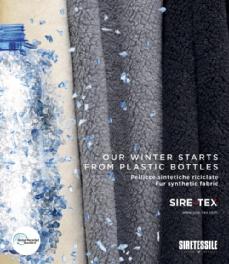
Online database of photos of shoes, bags and materials, categorized by style, season, events and much more. Hundreds of new pictures uploaded every week from fairs collection, catwalks, retail windows and e-commerce.
historical archive
Arsutoria (shoes) and Arpel (bags) historical archives available online. Arsutoria magazines from 1947 to 1980 and Arpel magazines from 1965 to 1980

ISSN 2531-9620 Send an e-mail to: arsutoria@edizioniaf.com to receive link and read the next issues of ARSUTORIA online for free 465 SS2023 TRENDS GUIDE CONCEPT, INSPIRATIONS, THEMES, COLOURS SS2023 VISION LAB NEXT MATERIALS FOR THE NEXT COLLECTIONS FOCUS SUSTAINABILITY B-CORP, NEW MATERIALS SUSTINABLE VISIONS AND FIGURES SAFETY SHOES INNOVATION, TECHNOLOGIES, NEW COLLECTIONS
MAGAZINES & BOOKS
ARSUTORIA
10 Issues
Arsutoria offers the most complete information for footwear & leather manufacturers and designers: collections, materials and technology.
FOTO
SHOE 30
6 Issues
An overview on medium-end footwear market: news, articles and pictures. Foto Shoe 30 is a must have for wholesalers and mass retailers..

arsutoriamagazine.com
ARSUTORIA ONLY SHOES / ONLY BAGS

Hard cover book of over 200 pages of shoes and bags presented for each season on fair sand catwalks.

fotoshoemagazine.com
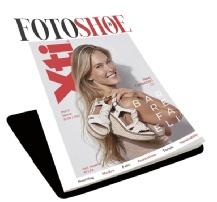
FOOTWEAR DICTIONARY
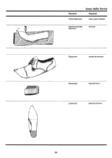
• 500 illustrated pages
• 1000 terms in five different languages (IT-EN-ES-DE-FR)
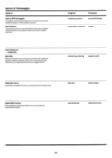
• Only Printed edition
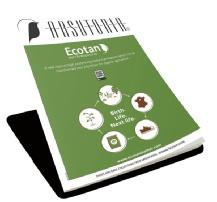
subscriptions@edizioniaf.com ph. +39 02 3191 2331 fax +39 02 3361 1619
www.edizioniaf.com
subscriptions@edizioniaf.com
ph. +39 02 3191 2331
fax +39 02 3361 1619
ORDER FORM
Prices include FedEx shipment
CARD
EXP. DATE / CVV/CVC
CARDHOLDER NAME
SIGNATURE ____________________________________
BANK TRANSFER
IBAN: IT 49 Z 01030 01604 000002285956
Monte Paschi Siena Swift: PASCITM1MI4
* Prices are subject to VAT: only for Italy and private UE clients
** Available from January 2022
CONTACT EMAIL
VAT NBR COUNTRY +_____/______________________________
COMPANY ADDRESS CITY ZIP
PHONE
CREDIT
_ _ _ __ _ _ __ _ _ __ _ _ _
MAGAZINES & BOOKS ISSUES ITALY EUROPE REST OF THE WORLD ARSUTORIA - magazine 1 YEAR 10 250 € 450 € FOTOSHOE30 - magazine 1 YEAR 6 150 € 250 € FOOTWEAR TECHNICAL DICTIONARY* - book 1 book 1 120 € ARSUTORIA ONLY SHOES - book 1 YEAR 1 2 250 € 450 € ARPEL ONLY BAGS - book 1 YEAR 1 150 € ARSUTORIA STUDIO** USERS DIGITAL ITALY EUROPE REST OF THE WORLD SILVER (1 YEAR) Arsutoria magazine trends webinars 3 200 € 250 € 450 € GOLD (1 YEAR) SILVER +arstrends, photos of collections, catwalks, retail 5 SHOES BAGS FULL 450 € 350 € 500 € 500 € 400 € 550 € 700 € 600 € 750 € PLATINUM (1 YEAR) GOLD +historical archive 10 SHOES BAGS FULL 950 € 750 € 1200 € 1000 € 800 € 1250 € 1200 € 1000 € 1450 € PAPER
EXPO RIVA SCHUH
RIVA DEL GARDA FIERECONGRESSI S.p.A.
tel. +39 0464.520.000
info@exporivaschuh.it www.exporivaschuh.it
pag. IV cover
FLY FLOT s.r.l. tel. +39 030.968.900 info@flyflot.it www.flyflot.it pag. II cover
IMAC S.p.A.
tel. +39 0734.938.721
info@imac-italia.it
www.imacspa.com
pag. 3-131
INTERNATIONAL FOOTWEAR & LEATHER SHOW - ACICAM
tel. +57 281.64.00
acicam@acicam.org
www.ifls.com.co
pag. 63
MESSE FRANKFURT FRANCE SAS
tel. +33 155.268.989 visitorservice@france.messefrankfurt.com
www.leatherworld-paris.com
pag. 5
SILVER 1 s.r.l. tel. +39 0545. 953.829 info@silver1srl.com www.raftinggoldstar.com
www.valleverde.it
pag. 9
TASD Fuarcilik A.S.
tel. +90 212.549.71.71
info@aymod.com
www.aymod.com
pag. 7
130
Addresses

























































 Shoes VEJA
Make-up and Hair by Stefania D’Argenio @MKS Milano
Model: Olena Monzolevska @TheWolvesModels Milano
Shoes VEJA
Make-up and Hair by Stefania D’Argenio @MKS Milano
Model: Olena Monzolevska @TheWolvesModels Milano






 Make-up and Hair by Stefania D’Argenio @MKS Milano
Model: Olena Monzolevska @TheWolvesModels Milano
Make-up and Hair by Stefania D’Argenio @MKS Milano
Model: Olena Monzolevska @TheWolvesModels Milano













































































































































































































































































